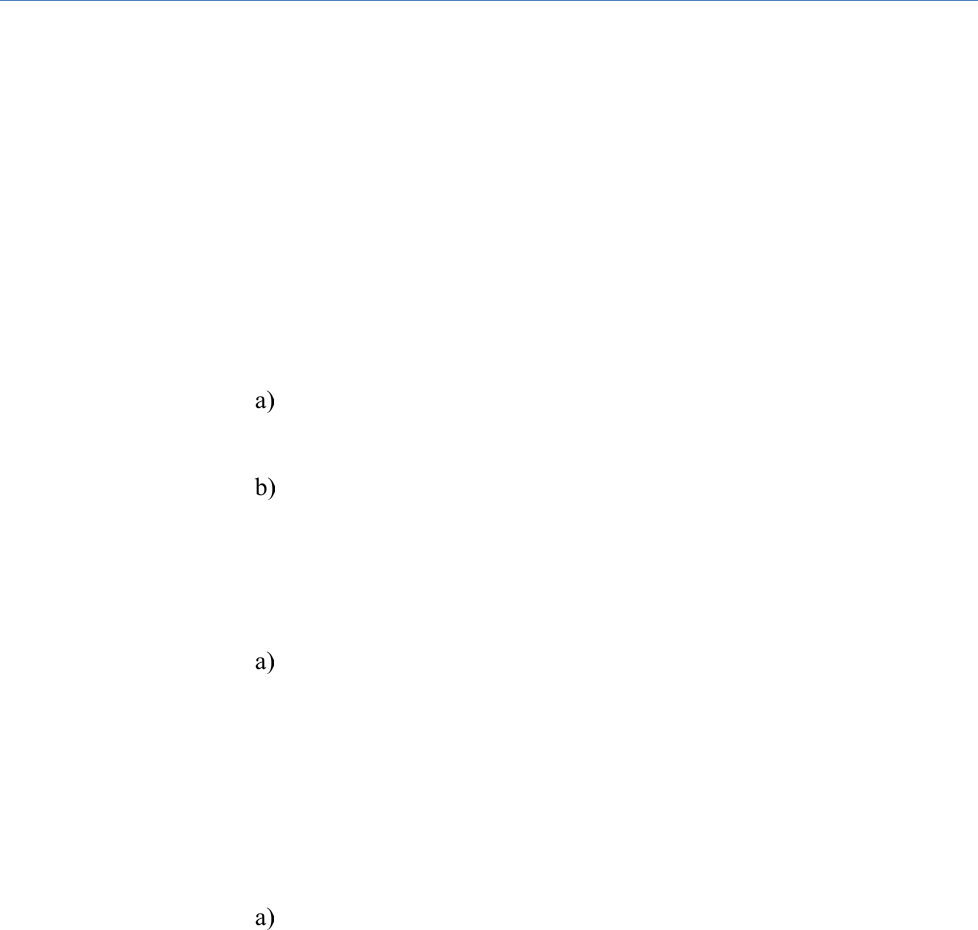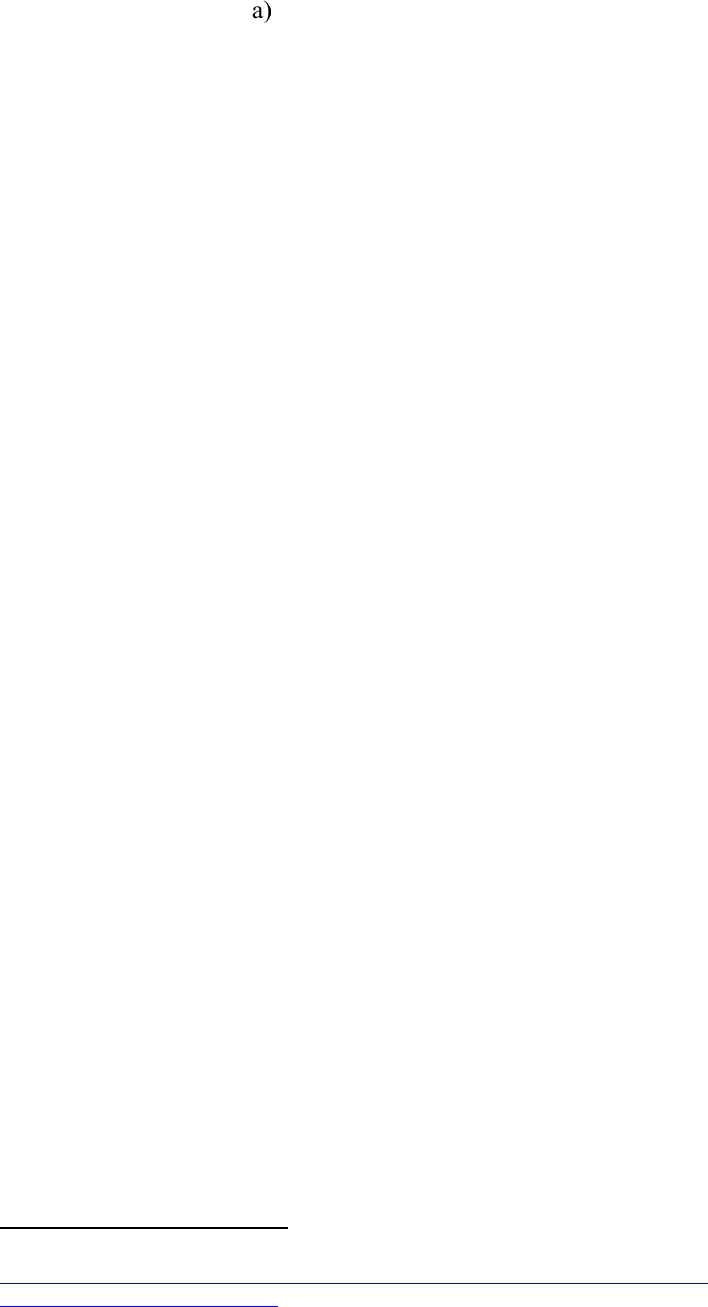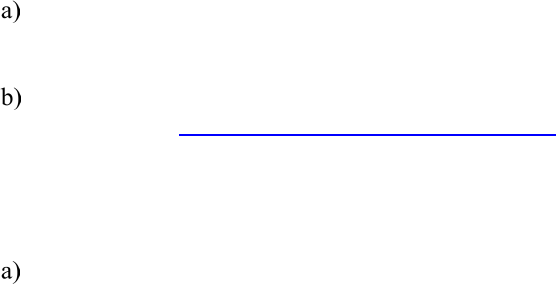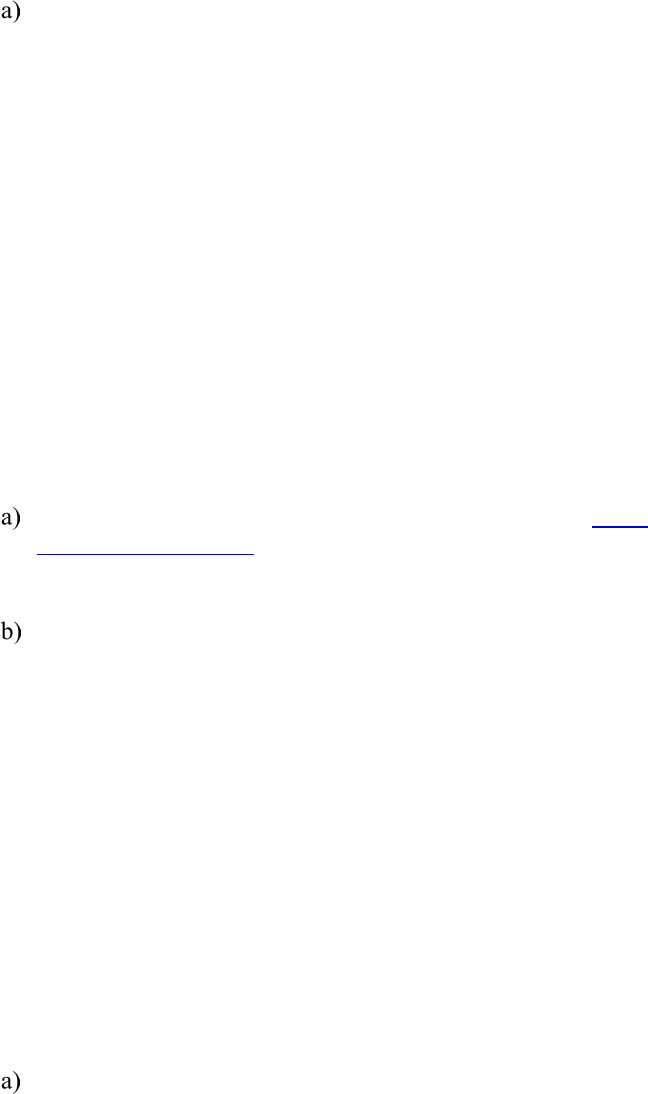
1
State Court Administrative Office
Court Services
Problem-Solving Courts
Michigan Association of Treatment Court Professionals
Adult Drug Court
Standards, Best Practices,
and Promising Practices
March 2021
INDEPENDENCE ∙ ACCESSIBILITY ∙ ENGAGEMENT ∙ EFFICIENCY

i
Introduction
Purpose
This manual was written by staff from the State Court Administrative Office and board members
of the Michigan Association of Treatment Court Professionals. It is designed to assist
Michigan’s adult drug and DWI courts in complying with the drug court statute,
1
best practices,
the 10 Key Components of Drug Courts, and the 10 Guiding Principles of DWI Courts. The
content in this manual comes from many sources, but it leans most heavily on statute and the
National Association of Drug Court Professionals Adult Drug Court Best Practice Standards,
Volume I and Volume II. The manual pulls important pieces from all of these sources in order to
best represent Michigan’s practices. This manual is intended for all adult drug court team
members, and the team should use it to ensure that their program is following the statute and
implementing best practices.
Definitions
The chapters in this manual include three types of information:
• Standard: Standards are from the drug court statute, the 10 Key Components, the 10
Guiding Principles, federal and state confidentiality laws, and case law and other
precedent that are binding on Michigan courts.
• Best Practice: Best practices are supported by scientific research and data or nonbinding
case law, and are proven methods to follow. The best practices have either been shown
by empirical research to produce better outcomes than other practices or they are
regarding compliance with confidentiality, due process, or other rules. Their use results
in higher-quality programs.
• Promising Practice: Promising practices are not yet supported by scientific research or
data, but anecdotal evidence and experience suggest they are helpful in adhering to the
model. Promising practices are recommendations for courts to follow to operate a
higher-quality program.
1
See Appendix A.

ii
How to Use This Manual
Each chapter is divided into relevant topics. Included within each topic are the standards, best
practices, and promising practices, as well as the supporting authority or research. Not all topics
have all three subdivisions; some topics have only best practices while some do not have
promising practices.
There are two kinds of best practices in this manual: best practices that a program must follow in
order to become a certified drug court (bolded) and best practices that a program should be
following.
There are footnotes throughout the manual that refer to additional research. The 15 appendices
are referenced in the chapters, including model documents that courts can use to comply with
certain standards and required best practices. If you would like to request training or technical
assistance, please contact your regional administrator. If you have questions, please contact
Certification
In order for a program to become a certified adult drug court under MCL 600.1062, it must
comply with the standards and required best practices in this manual. All standards and required
best practices are in bold.
iii
Chapter 1: Roles and Responsibilities of the Drug Court Judge.................................................... 1
I. General .................................................................................................................................... 1
A. Standards .......................................................................................................................... 1
B. Best Practices ................................................................................................................... 1
II. Staffing Meetings and Review Hearings ................................................................................ 2
A. Standards .......................................................................................................................... 2
B. Best Practices ................................................................................................................... 2
III. Works Cited ......................................................................................................................... 4
Chapter 2: Participant Supervision and Compliance ..................................................................... 5
I. Caseload .................................................................................................................................. 5
A. Best Practices ................................................................................................................... 5
B. Promising Practices .......................................................................................................... 6
II. Monitoring and Review Hearings ........................................................................................... 6
A. Standards .......................................................................................................................... 6
B. Best Practices ................................................................................................................... 6
C. Promising Practices .......................................................................................................... 7
III. Services to Participants ........................................................................................................ 7
A. Standards .......................................................................................................................... 7
B. Best Practices ................................................................................................................... 7
IV. Ignition Interlock ................................................................................................................. 8
A. Standards .......................................................................................................................... 8
B. Best Practices ................................................................................................................... 9
V. Incentives and Sanctions ......................................................................................................... 9
A. Standards .......................................................................................................................... 9
B. Best Practices ................................................................................................................... 9
C. Promising Practices ........................................................................................................ 11
VI. Payments ............................................................................................................................ 11
A. Standards ........................................................................................................................ 11
VII. Phase Promotion and Graduation....................................................................................... 12
A. Best Practices ................................................................................................................. 12
VIII. Program Discharge ......................................................................................................... 13
A. Standards ........................................................................................................................ 13
B. Best Practices ................................................................................................................. 13
IX. Works Cited ....................................................................................................................... 15
Chapter 3: Confidentiality ............................................................................................................ 17
iv
I. Confidentiality ...................................................................................................................... 17
A. Standards ........................................................................................................................ 17
B. Best Practices ................................................................................................................. 20
II. Works Cited .......................................................................................................................... 22
Chapter 4: Due Process ................................................................................................................ 23
I. Waiver of Rights ................................................................................................................... 23
A. Standards ........................................................................................................................ 23
II. 1st Amendment ..................................................................................................................... 23
A. Standards ........................................................................................................................ 23
B. Best Practices ................................................................................................................. 24
III. 4th Amendment .................................................................................................................. 24
A. Best Practices ................................................................................................................. 24
IV. 14th Amendment ................................................................................................................ 25
A. Standards ........................................................................................................................ 25
V. Sanctions and Termination ................................................................................................... 25
A. Best Practices ................................................................................................................. 25
VI. Works Cited ....................................................................................................................... 27
Chapter 5: The Drug Court Team ................................................................................................ 28
I. Team Composition ................................................................................................................ 28
A. Standards ........................................................................................................................ 28
B. Best Practices ................................................................................................................. 28
C. Promising Practices ........................................................................................................ 29
II. Staffing Meetings and Review Hearings .............................................................................. 30
A. Best Practices ................................................................................................................. 30
III. Communication and Decision Making .............................................................................. 30
A. Best Practices ................................................................................................................. 30
IV. Works Cited ....................................................................................................................... 32
Chapter 6: Drug Court Population and Admission ...................................................................... 33
I. Screening............................................................................................................................... 33
A. Standards ........................................................................................................................ 33
B. Best Practices ................................................................................................................. 34
II. Eligible Offenses ................................................................................................................... 34
A. Standards ........................................................................................................................ 34
B. Best Practices ................................................................................................................. 35
III. Clinical Substance Use and Mental Health Assessments .................................................. 35
v
A. Standards ........................................................................................................................ 35
B. Best Practices ................................................................................................................. 36
IV. Risk and Need Assessment ................................................................................................ 36
A. Best Practices ................................................................................................................. 36
V. Legal Outcome ...................................................................................................................... 38
A. Standards ........................................................................................................................ 38
VI. Admission Factors ............................................................................................................. 39
A. Standards ........................................................................................................................ 39
B. Best Practices ................................................................................................................. 39
VII. Findings on the Record or in the Court File ...................................................................... 40
A. Standards ........................................................................................................................ 40
VIII. Program Entry ................................................................................................................ 40
A. Best Practices ................................................................................................................. 40
IX. Works Cited .......................................................................................................................... 42
Chapter 7: Drug and Alcohol Testing .......................................................................................... 44
I. General .................................................................................................................................. 44
A. Best Practices ................................................................................................................. 44
II. Randomization ...................................................................................................................... 44
A. Standards ........................................................................................................................ 44
III. Frequency and Breadth of Testing ..................................................................................... 45
A. Standards ........................................................................................................................ 45
B. Best Practices ................................................................................................................. 45
IV. Scientifically Valid Drug Testing Methods ....................................................................... 46
A. Best Practices ................................................................................................................. 46
V. Witnessed Collection ............................................................................................................ 48
A. Best Practices ................................................................................................................. 48
VI. Chain of Custody and Results ............................................................................................ 50
A. Standards ........................................................................................................................ 50
B. Best Practices ................................................................................................................. 50
C. Promising Practices ........................................................................................................ 50
VII. Works Cited ....................................................................................................................... 51
Chapter 8: Treatment .................................................................................................................... 53
I. General and Definition of Drug Treatment Courts and DWI Courts .................................... 53
A. Standards ........................................................................................................................ 53
B. Best Practices ................................................................................................................. 53
vi
II. Treatment Entry .................................................................................................................... 54
A. Best Practices ................................................................................................................. 54
III. Treatment Services ............................................................................................................. 54
A. Standards ........................................................................................................................ 54
B. Best Practices ................................................................................................................. 55
IV. Evidence-Based Models of Treatment ............................................................................... 56
A. Best Practices ................................................................................................................. 56
V. Treatment Duration ............................................................................................................... 57
VI. Medication-Assisted Treatment ......................................................................................... 57
A. Best Practices ................................................................................................................. 57
VII. Works Cited ....................................................................................................................... 59
Chapter 9: Education .................................................................................................................... 60
I. General .................................................................................................................................. 60
A. Standards ........................................................................................................................ 60
B. Best Practices ................................................................................................................. 60
II. Works Cited .......................................................................................................................... 62
Chapter 10: Program Evaluation ................................................................................................. 63
I. Collection and Maintenance of Information ......................................................................... 63
A. Standards ........................................................................................................................ 63
B. Best Practices ................................................................................................................. 65
II. Evaluation and Program Modification .................................................................................. 65
A. Best Practices ................................................................................................................. 65
B. Promising Practices ........................................................................................................ 67
III. Works Cited ....................................................................................................................... 69
Chapter 11: Equity and Inclusion ................................................................................................. 70
I. Equity and Inclusion ............................................................................................................. 70
A. Best Practices ................................................................................................................. 70
II. Works Cited .......................................................................................................................... 73
Appendix A Michigan Drug Court Statute .................................................................................. 75
Appendix B Model Drug Court Discharge Statement ................................................................. 90
Appendix C Model Multi-Party Consent for Release of Information ........................................ 91
Appendix D New Staff and Team Member Orientation .............................................................. 96
Appendix E Model Confidentiality Policies and Procedures ...................................................... 98
Appendix G Model Confidentiality MOU .................................................................................. 106
Appendix H Model Visitor Confidentiality and Consent for Release of Information ............ 114
vii
Appendix I Model Program MOU .............................................................................................. 119
Appendix J Model Drug Court Agreement to Participate and Waiver ..................................... 128
Appendix L Drug Court Admission Conditions ......................................................................... 131
Appendix N Ten Principles of a Good Testing Program ........................................................... 133
Appendix O Minimum Standard Data ....................................................................................... 134

1
Chapter 1: Roles and Responsibilities of the Drug
Court Judge
This chapter discusses the judge’s roles on a drug court team. The judge serves as the leader of
the team and plays an important part in guiding participants through the program. Specific topics
include the term as a drug court judge, staffing meetings, and review hearings. Confidentiality is
mentioned, but discussed in further detail in Chapter 3. The judge is also important in ensuring
participants’ due process rights are protected; best practices regarding due process are discussed
in Chapter 4.
I. General
A. Standards
1. A drug treatment court shall comply with the 10 key components
promulgated by the national association of drug court professionals,
which include all of the following essential characteristics:
Ongoing close judicial interaction with each participant and
supervision of progress for each participant. (MCL
600.1060(c)(vii))
2
2. An independent and honorable judiciary is indispensable to justice in our
society. A judge should participate in establishing, maintaining, and
enforcing, and should personally observe, high standards of conduct so
that the integrity and independence of the judiciary may be preserved. A
judge should always be aware that the judicial system is for the benefit of
the litigant and the public, not the judiciary. (Michigan Code of Judicial
Conduct, Canon 1)
B. Best Practices
1. Participants ordinarily appear before the same judge throughout their
enrollment in the drug court.
Drug courts that rotated the judicial assignment or where
participants appeared before alternating judges had the poorest
outcomes in several research studies. (Finigan, Carey, & Cox,
2007) (National Institute of Justice, 2006)
2
The Michigan drug court statute refers to the 10 Key Components of Drug Courts. The National Center for DWI
Courts, a division of the National Association of Drug Court Professionals, has also promulgated the 10 Guiding
Principles of DWI Courts. Judges in DWI/Sobriety courts should also respect Guiding Principle #6, which reads,
“Judges are a vital part of the DWI Court team. As leader of this team, the judge’s role is paramount to the success
of the DWI court program. The judge must be committed to the sobriety of program participants, possess
exceptional knowledge and skill in behavioral science, own recognizable leadership skills as well as the capability to
motivate team members and elicit buy-in from various stakeholders. The selection of the judge to lead the DWI
Court team, therefore, is of utmost importance.”

2
2. The judge presides over the drug court for no less than two consecutive years.
When judges preside over drug courts for at least two years, those
programs have significant cost savings and significantly lower
recidivism. (Carey, Pukstas, Waller, Mackin, & Finigan, 2008)
(Carey, Mackin, & Finnegan, 2012)
Even greater reductions in recidivism were found in courts where
the judges oversaw the drug court on a voluntary basis and the
term was indefinite. (Carey, Mackin, & Finnegan, 2012)
3. The judge bases interaction with drug court participants on the four principles
of procedural fairness: voice, neutrality, respectful treatment, and trustworthy
authorities.
Drug use, probation violations, and recidivism rates were all
reduced in drug courts that applied the four principles of
procedural fairness. (MacKenzie, 2016)
II. Staffing Meetings and Review Hearings
A. Standards
1. In the performance of judicial duties, the following standards apply:
A judge should be faithful to the law and maintain professional
competence in it. A judge should be unswayed by partisan
interests, public clamor, or fear of criticism. (Michigan Code
of Judicial Conduct, Canon 3(A)(1))
A judge should be patient, dignified, and courteous to litigants,
jurors, witnesses, lawyers, and others with whom the judge
deals in an official capacity, and should require similar
conduct of lawyers and of staff, court officials, and others
subject to the judge’s direction and control. (Michigan Code
of Judicial Conduct, Canon 3(A)(3))
Without regard to a person’s race, gender, or other protected
personal characteristic, a judge should treat every person
fairly, with courtesy, and respect. (Michigan Code of Judicial
Conduct, Canon 3(A)(10))
B. Best Practices
1. The judge regularly attends staffing meetings during which the drug
court team reviews each participant’s progress and discusses potential
consequences for performance.
Research has consistently shown that when the drug court judge
regularly attends staffing meetings, cost savings increase and
recidivism is reduced. (Carey, Pukstas, Waller, Mackin, &
Finigan, 2008) (Carey, Mackin, & Finnegan, 2012)

3
2. The judge considers the perspectives of all team members before making
final decisions that affect participants’ welfare or liberty interests. The
judge relies on the expert input of duly trained treatment professionals
when imposing treatment-related conditions.
The collaborative nature of drug courts brings together experts
from various disciplines. Their expertise and shared information
allow the judge to make better-informed decisions. (National
Association of Drug Court Professionals, 2018) (Hora & Stalcup,
2008)
3. The judge spends sufficient time during status review hearings reviewing each
participant’s progress in the program. Evidence suggests judges should spend
a minimum of three minutes interacting with each participant in court.
Recidivism was significantly reduced, by as much as 153 percent,
in drug courts where the judge spent at least three minutes
interacting with each participant. The same study showed that cost
savings were also improved when the judge spent the minimum
three minutes with each participant. (Carey, Mackin, & Finnegan,
2012)
4. The judge offers supportive comments to participants, stresses the importance
of their commitment to treatment and other program requirements, and
expresses optimism about their ability to improve their health and behavior.
The judge does not humiliate participants or subject them to foul or abusive
language. The judge allows participants a reasonable opportunity to explain
their perspectives concerning factual controversies and the imposition of
sanctions, incentives, and therapeutic adjustments.
Research has consistently shown that the perceived quality of
interactions between participants and the drug court judge is
among the most influential factors for success in the program.
(National Association of Drug Court Professionals, 2018)
Significantly greater reductions in crime and substance use resulted
when the judges were independently rated as being more fair,
attentive, caring, and enthusiastic. (Zweig, Lindquist, Downey,
Roman, & Rossman, 2012)
4
III. Works Cited
Carey, S., Mackin, J., & Finnegan, M. (2012). What Works? The Ten Key Components of Drug Court:
Research-Based Best Practices. Drug Court Review, 8(1), pp. 6-42. Retrieved from
https://www.ndci.org/wp-content/uploads/DCR_best-practices-in-drug-courts.pdf
Carey, S., Pukstas, K., Waller, M., Mackin, R., & Finigan, M. (2008). Drug Courts and State Mandated
Drug Teatment Programs: Outcomes, Costs, and Consequences. NPC Research, Portland, OR.
Retrieved from https://npcresearch.com/publication/drug-courts-and-state-mandated-drug-
treatment-programs-outcomes-costs-and-consequences-drug-court-and-proposition-36-in-
california/
Hora, P., & Stalcup, T. (2008). Drug Treatment Courts in the Twenty-First century: The Evolution of the
Revolution in Problem-Solving Courts. Georgia Law Review, pp. 717-811. Retrieved from
https://www.ndci.org/wp-content/uploads/Hora-Stalcup.pdf
National Association of Drug Court Professionals. (2018). Adult Drug Court Best Practice Standards.
Volume 1. Retrieved from https://www.nadcp.org/wp-content/uploads/2018/12/Adult-Drug-
Court-Best-Practice-Standards-Volume-I-Text-Revision-December-2018-1.pdf
National Institute of Justice. (2006). Drug courts: The second decade. Washington, D.C.:: Office of Justice
Programs, US Department of Justice. Retrieved from
https://www.ncjrs.gov/pdffiles1/nij/211081.pdf
Zweig, J., Lindquist, C., Downey, P., Roman, J., & Rossman, S. (2012). Drug court policies and practices:
How program implementation affects offender substance use and criminal behavior outcomes.
Drug Court Review, 43-79. Retrieved from
https://static1.squarespace.com/static/52d5cb6fe4b030d390971273/t/52ea89d0e4b0d62f9ff55
8fd/1391102416292/Best_practices_in_drug_courts_2012.pdf

5
Chapter 2: Participant Supervision and Compliance
This chapter discusses participant supervision and compliance with program requirements.
Specific topics include the drug court supervision caseload, frequency of monitoring events,
services provided to participants, incentives and sanctions, phase promotion and graduation from
drug court, and termination from drug court. Several topics are addressed in additional detail in
other chapters.
I. Caseload
A. Best Practices
1. The number of individuals participating in the program as a cohort or a track
should be fewer than 125.
Programs that have fewer than 125 individual participants at one
time have statistically significant reductions in recidivism. (Carey,
Mackin, & Finnegan, 2012)
Drug courts can serve more than 125 participants with effective
results if the programs have sufficient personnel and resources to
accommodate larger numbers of individuals. (Carey, Mackin, &
Finnegan, 2012) (Shaffer, 2010)
2. Supervision caseloads should not exceed 50 active participants per
supervision officer (most commonly a probation officer).
Probationers on 50:1 caseloads received significantly more
probation office sessions, field visits, employer contacts, telephone
check-ins, and substance use disorder and mental health treatment.
As a consequence of receiving more services, they also had
significantly better probation outcomes, including fewer positive
drugs tests and other technical violations. (Jalbert & Rhodes,
2012)
3. The caseload for a treatment provider administering individual therapy should
not exceed a 40:1 ratio.
Treatment providers serve principally as treatment providers,
administering individual therapy or counseling and perhaps
facilitating or co-facilitating group interventions. They may also
refer participants for ancillary services such as mental health
treatment or vocational training. The caseload census guideline is
derived from expert consensus. (Case Management Society of
America & National Association of Social Workers., 2008)
(National Association of Drug Court Professionals, 2018)

6
State rules on mental health and substance use disorder services
say that the equivalent of one or more full-time counselors shall be
available for approximately 40 clients. (Michigan Mental Health
and Substance Abuse Services Rules, Part 7, R 325.14701)
B. Promising Practices
1. The caseload for a clinical case manager should not exceed a 75:1 ratio.
Case managers assess participant needs, broker referrals for
services, and report progress information to the team. The
caseload census guideline is derived from expert consensus.
(Rodriguez, 2011) (National Association of Drug Court
Professionals, 2018) Research is based on outcomes in the context
of general probation, particularly high-risk, high-need
probationers.
II. Monitoring and Review Hearings
A. Standards
1. A drug treatment court shall provide a drug court participant with all of
the following:
Consistent, continual, and close monitoring of the participant
and interaction among the court, treatment providers,
probation, and the participant. (MCL 600.1072(1)(a))
Periodic evaluation assessments of the participant’s
circumstances and progress in the program. (MCL
600.1072(1)(c))
B. Best Practices
1. Participants appear before the judge for status hearings at least once
every two weeks during the first phase of the program. The frequency of
status review hearings may be reduced gradually after participants have
initiated abstinence from alcohol and illicit drugs and are regularly
engaged in treatment. Status review hearings are scheduled at least once
every four weeks until participants are in the last phase of the program.
A substantial body of research demonstrates the importance of
scheduling status hearings no less frequently than every two weeks
during the first phase of a drug court. Participants had
significantly better treatment attendance, substance use abstinence,
and graduation rates when they were required to appear before the
judge every two weeks. (National Association of Drug Court
Professionals, 2018) (Festinger, et al., 2002)
2. Participants meet individually with a clinical case manager or comparable
treatment professional at least weekly during the first phase of drug court.

7
Studies consistently find that drug courts reduce recidivism and are
more cost-effective when participants meet individually with a
clinical case manager or comparable treatment professional at least
weekly during the first phase of the program. (Carey, Mackin, &
Finnegan, 2012) (Cissner, et al., 2013)
C. Promising Practices
1. Drug court participants meet with a supervision officer (most commonly a
probation officer) at least twice per month in the early phases of the program.
Many courts require weekly meetings in early phases.
While there is no specific research available on this topic, research
on frequency of review hearings and meetings with clinical case
managers is relevant. More frequent meetings allow for closer
supervision.
III. Services to Participants
A. Standards
1. A drug treatment court shall provide a drug court participant with all of
the following:
Substance use disorder treatment services, relapse prevention
services, education, and vocational opportunities as
appropriate and practicable. (MCL 600.1072(1)(e))
2. A drug treatment court shall comply with the 10 key components
promulgated by the national association of drug court professionals,
which include all of the following essential characteristics:
Integration of alcohol and other drug treatment services with
justice system case processing. (MCL 600.1060(c)(i))
B. Best Practices
1. Participants regularly attend self-help or peer-support groups in addition to
professional counseling. The peer-support groups follow a structured model
or curriculum such as 12-step or Smart Recovery and offer non-faith-based
options.
Participation in self-help or peer-support groups is consistently
associated with better long-term outcomes, including greater
abstinence and lower mortality rates, when used in conjunction
with substance use disorder treatment. (Kelly, Stout, Zywiak, &
Schneider, 2006) (Moos & Timko, 2008)

8
2. In the first phase of drug court, participants receive services designed
primarily to address responsivity needs such as deficient housing; mental
health symptoms; and substance-related cravings, withdrawal, or anhedonia.
In the interim phases of drug court, participants receive services designed to
resolve criminogenic needs that co-occur frequently with substance use, such
as criminal thinking patterns, delinquent peer interactions, and family conflict.
In the later phases of drug court, participants receive services designed to
maintain treatment gains by enhancing their long-term adaptive functioning,
such as vocational or educational counseling.
Outcomes, including graduation rates, recidivism rates, and
engagement in treatment, are improved when rehabilitation
programs address ancillary needs in this specific sequence.
(National Association of Drug Court Professionals, 2018)
3. Participants with deficient employment or academic histories receive
vocational or educational services beginning in a late phase of drug court.
At least two studies of drug courts have reported improved
program retention, graduation rates, and treatment retention when
unemployed or underemployed participants received a manualized,
cognitive-behavioral vocational intervention. (Deschenes, Ireland,
& Kleinpeter, 2009) (Leukefeld, Webster, Stanton-Tindall, &
Duvall, 2007)
4. Where indicated, participants receive assistance finding safe, stable, and drug-
free housing beginning in the first phase of drug court and continuing as
necessary throughout their enrollment in the program.
Participants are unlikely to succeed in treatment if they do not have
a safe, stable, and drug-free place to live. (Quirouette, Hannah-
Moffat, & Maurutto, 2015)
IV. Ignition Interlock
A. Standards
1. Before the secretary of state issues a restricted license to a program
participant under section 304 of the Michigan vehicle code, 1949 PA 300,
MCL 257.304, the DWI/sobriety court judge shall certify to the secretary
of state that the individual seeking the restricted license has been
admitted into the program and that an interlock device has been placed
on each motor vehicle owned or operated, or both, by the individual.
(MCL 600.1084(6))
2. If any of the following occur, the DWI/sobriety court judge shall
immediately inform the secretary of state of that occurrence:
The court orders that a program participant be removed from
the DWI/sobriety court program before he or she successfully
completes it. (MCL 600.1084(6)(a))

9
The court becomes aware that a program participant operates
a motor vehicle that is not equipped with an interlock device or
that a program participant tampers with, circumvents, or
removes a court-ordered interlock device without prior court
approval. (MCL 600.1084(6)(b))
A program participant is charged with a new violation of
section 625 of the Michigan vehicle code, 1949 PA 300, MCL
257.625. (MCL 600.1084(6)(c))
B. Best Practices
1. Ignition interlock devices and restricted driver licenses are made
available to eligible participants. Drug courts should utilize the National
Center for DWI Courts’ ignition interlock device guidelines when
incorporating the use of these devices into their programs.
An evaluation of Michigan’s Ignition Interlock Pilot Program
showed that, compared to non-interlock offenders in
DWI/sobriety court and to standard probationers, interlock
program participants have the lowest recidivism rates after
one, two, three, and four years of follow up. This is true for
both drunk driving-related reoffending and for general
criminal reoffending. (Kierkus & Johnson, 2016)
V. Incentives and Sanctions
A. Standards
1. A drug treatment court shall provide a drug court participant with all of
the following:
A regimen or strategy of appropriate and graduated but
immediate rewards for compliance and sanctions for
noncompliance, including, but not limited to, the possibility of
incarceration or confinement. (MCL 600.1072(1)(d))
2. A drug treatment court shall comply with the 10 key components
promulgated by the national association of drug court professionals,
which include all of the following essential characteristics:
Use of a coordinated strategy with a regimen of graduated
sanctions and rewards to govern the court’s responses to
participants’ compliance. (MCL 600.1060(c)(vi))
B. Best Practices
1. The drug court places as much emphasis on incentivizing productive
behaviors as it does on reducing crime, substance use, and other
infractions.

10
Drug courts are able to reduce substance use and better prevent
criminal behavior when they focus as much on incentivizing
productive behaviors as they do on reducing noncompliant or
undesirable behaviors. (Zweig, Lindquist, Downey, Roman, &
Rossman, 2012)
2. The drug court has a range of sanctions of varying magnitudes that may
be administered in response to program infractions.
Drug courts are able to reduce substance use and recidivism when
the sanctions for failing to meet difficult goals increase
progressively in magnitude over successive infractions. This gives
treatment a chance to take effect, and prepares participants to meet
steadily increasing responsibilities in the program. (National
Association of Drug Court Professionals, 2018)
Sanctions that are weak in magnitude can cause habituation in
which the individual becomes accustomed, and thus less
responsive, to punishment. Imposing high-magnitude sanctions
when a participant fails to meet an easy goal helps to avoid
habituation. (National Association of Drug Court Professionals,
2018)
3. Sanctions are imposed as quickly as possible after noncompliant
behavior. Drug courts do not wait for the next review hearing to impose
a sanction if the behavior can be addressed more immediately.
The value of having sanctions imposed immediately after
noncompliant behavior is a central tenet of behavior modification.
Study results show that recidivism and cost savings do not improve
when drug courts wait until the next scheduled court appearance
for noncompliant participants instead of bringing them in earlier.
(Carey, Mackin, & Finnegan, 2012)
If teams wait too long (two weeks or more) before applying a
sanction, the participants may have other issues that are more
relevant by then, or they may even have worked to improve their
behavior by then, in which case they are receiving a sanction at the
same time as they are doing well, providing them with a message
that is unclear and may even be defeating. (Carey, Mackin, &
Finnegan, 2012)
4. Jail sanctions are definite in duration and typically last no longer than five
days. Participants are given access to counsel and a fair hearing if a jail
sanction might be imposed as a liberty interest is at stake.
Drug courts significantly lower recidivism and improve cost
savings when they use jail sanctions sparingly. (Carey, Pukstas,
Waller, Mackin, & Finigan, 2008)
Research indicates that jail sanctions produce diminishing returns
after approximately three to five days. (Carey, Mackin, &
Finnegan, 2012)

11
5. Participants do not receive punitive sanctions if they are otherwise compliant
with their treatment and supervision requirements but are not responding to
the treatment interventions. The appropriate course of action may be to
reassess the individual and adjust the treatment plan accordingly.
If a drug court imposes substantial sanctions for substance use
early in treatment, the team is likely to run out of sanctions and
reach a ceiling effect before treatment has taken effect. Therefore,
drug courts should ordinarily adjust participants’ treatment
requirements in response to positive drug tests early in the
program. (Chandler, Fletcher, & Volkow, 2009)
6. Participants are not incarcerated to achieve clinical or social service objectives
such as obtaining access to detoxification services or sober living quarters.
Relying on in-custody substance use disorder treatment can reduce
the cost-effectiveness of a drug court by as much as 45 percent.
(Carey, Mackin, & Finnegan, 2012)
7. Team members have a written schedule of sanctions for infractions.
Drug courts where team members are given a copy of the
guidelines for sanctions had 72% greater cost savings. (Carey,
Mackin, & Finnegan, 2012)
Multistate research showed the most effective programs with
regard to recidivism included greater predictability of sanctions.
(Rossman & Zwieg, 2012)
C. Promising Practices
1. Immediate and tangible rewards help a drug court demonstrate the benefits of
abstinence. Courts should seek to include tangible or token rewards, such as
coins, gifts, certificates, or entry into a drawing in an incentives program.
Frequently, the benefits of abstinence, such as better health and
lifestyle, are abstract and distant to the abuser. The point of
motivational incentives is to bring the benefits of abstinence
forward in less time. Both voucher- and prize-based reinforcement
systems have been repeatedly shown to be effective interventions
among substance users. (Stitzer, 2008) These tangible rewards
can be used in drug court to more quickly improve behaviors.
VI. Payments
A. Standards
1. The drug treatment court may require an individual admitted into the
court to pay a reasonable drug court fee that is reasonably related to the
cost to the court for administering the drug treatment court program as
provided in the memorandum of understanding.
3
(MCL 600.1070(4))
3
See Appendix I. This model document is also available at http://courts.mi.gov/Administration/admin/op/problem-
solving-courts/Documents/DTC_ProgramMOU.pdf.

12
Courts can use the State Court Administrative (SCAO) Drug Court
Fee Calculator to help determine what a reasonable fee would be.
This calculator should be used only as a guide to help determine a
program fee; it is not intended to determine an exact or required
amount. Courts can determine the amount of the fee as it is
reasonably related to the cost for administering the drug treatment
court program.
2. In order to continue to participate in and successfully complete a drug
treatment court program, an individual shall comply with all of the
following:
Pay all court-ordered fines and costs, including minimum state
costs. (MCL 600.1074(1)(a))
Pay the drug treatment court fee allowed under section
1070(4). (MCL 600.1074(1)(b))
Pay all court-ordered restitution. (MCL 600.1074(1)(c))
Pay all crime victims rights assessments under section 5 of
1989 PA 196, MCL 780.905. (MCL 600.1074(1)(d))
3. The court shall not sentence a defendant to a term of incarceration, nor
revoke probation, for failure to comply with an order to pay money
unless the court finds, on the record, that the defendant is able to comply
with the order without manifest hardship and that the defendant has not
made a good-faith effort to comply with the order. (MCR 6.425(3)(a))
4. If the court finds that the defendant is unable to comply with an order to
pay money without manifest hardship, the court may impose a payment
alternative, such as a payment plan, modification of any existing payment
plan, or waiver of part or all of the amount of money owed to the extent
permitted by law. (MCR 6.425(E)(3)(b))
VII. Phase Promotion and Graduation
A. Best Practices
1. Phase promotion is predicated on the achievement of realistic and defined
behavioral objectives, such as completing a treatment regimen or
remaining drug-abstinent for a specific period of time.
Drug courts have significantly better outcomes when they have a
clearly defined phase structure and concrete behavioral
requirements for advancement through the phases. (Carey,
Mackin, & Finnegan, 2012)
Phase advancement should not be based simply on the amount of
time that participants have been enrolled in the program. (National
Association of Drug Court Professionals, 2018)
2. In order to graduate, participants who are able to join the labor force must
have a job or be in school, in instances where health insurance and other
social benefits are not at risk.

13
Both having a job and being in school are connected to cost
savings and reduced recidivism after the participant leaves the
program. If the participant is engaged in positive activities that
lead to higher and legal income, they are less likely to engage in
drug use and other criminal activities. (Carey, Mackin, &
Finnegan, 2012)
3. A period of greater than 90 continuous days of negative drug test results is
required before a participant is eligible to graduate.
Drug courts where participants were expected to have greater than
90 days clean (demonstrated by negative drug tests) before
graduation had 164 percent greater reductions in recidivism
compared with programs that expected less clean time. (Carey,
Mackin, & Finnegan, 2012)
VIII. Program Discharge
A. Standards
1. The drug treatment court must be notified if the participant is accused of
a new crime, and the judge shall consider whether to terminate the
participant's participation in the drug treatment program in conformity
with the memorandum of understanding under section 1062. If the
participant is convicted of a felony for an offense that occurred after the
defendant is admitted to drug treatment court, the judge shall terminate
the participant's participation in the program. (MCL 600.1074)
2. Upon completion or termination of the drug treatment court program,
the court shall find on the record or place a written statement in the court
file as to whether the participant completed the program successfully or
whether the individual's participation in the program was terminated
and, if it was terminated, the reason for the termination.
4
(MCL
600.1076(1))
3. The court shall send a record of the discharge and dismissal [under MCL
600.1070, and as outlined in MCL 600.1076(4)] to the criminal justice
information center of the department of state police, and the department
of state police shall enter that information into the law enforcement
information network with an indication of participation by the individual
in a drug treatment court. (MCL 600.1076(6))
B. Best Practices
1. Unless termination is required under MCL 600.1074 or the participant
can no longer be managed safely in the community, drug courts do not
terminate participants based only on drug or alcohol use or possession.
4
See Appendix B. This model document is also available at http://courts.mi.gov/Administration/admin/op/problem-
solving-courts/Documents/DTC-DischargeStatement.pdf.

14
Drug courts have significantly poorer outcomes and are
considerably less cost-effective when they terminate participants
based only on drug or alcohol use. Drug courts that had a policy of
terminating participants for positive drug tests or new arrests for
drug possession offenses had 50 percent higher criminal recidivism
and 48 percent lower cost savings than drug courts that responded
to new use by increasing treatment or applying sanctions of lower
severity. (Carey, Mackin, & Finnegan, 2012)
Drug courts that terminate participants merely for drug or alcohol
use have significantly poorer recidivism rates and are less cost-
effective. (Carey, Mackin, & Finnegan, 2012)
15
IX. Works Cited
Carey, S., Mackin, J., & Finnegan, M. (2012). What works? The Ten Key Components of Drug Court:
Research-Based Best Practices. Drug Court Review, 8(1), pp. 6-42. Retrieved from
https://www.ndci.org/wp-content/uploads/DCR_best-practices-in-drug-courts.pdf
Carey, S., Pukstas, K., Waller, M., Mackin, R., & Finigan, M. (2008). Drug Courts and State Mandated
Drug Teatment Programs: Outcomes, Costs, and Consequences. NPC Research, Portland, OR.
Retrieved from https://npcresearch.com/publication/drug-courts-and-state-mandated-drug-
treatment-programs-outcomes-costs-and-consequences-drug-court-and-proposition-36-in-
california/
Case Management Society of America & National Association of Social Workers. (2008). Case
management caseload concept paper: Proceedings of the Caseload Work Group. Retrieved from
cmsa.org: http://www.cmsa.org/portals/0/pdf/CaseloadCalc.pdf
Chandler, R., Fletcher, B., & Volkow, N. (2009). Treating drug abuse and addiction in the criminal justice
system: Improving public health and safety. Journal of the American Medical Association, 183-
190.
Cissner, A., Rempel, M., Franklin, A., Roman, J., Bieler, S., & Cohen, R. (2013). A Statewide Evaluation of
New York's Adult Drug Courts: Identifying Which Policies Work Best. New York: Center for Court
Innovation.
Deschenes, E., Ireland, C., & Kleinpeter, C. (2009). Enhancing Drug Court Success. Journal of Offender
Rehabilitation, 19-36.
Festinger, D., Marlowe, D., Lee, P., Kirby, K., Bovasso, J., & McLellan, A. (2002). Status Hearings in Drug
Court: When More is Less and Less is More. Drug & Alcohol Dependence, 151-157.
Jalbert, S., & Rhodes, W. (2012). Reduced Caseloads Improve Probation Outcomes. Journal of Crime and
Justice, 221-238.
Kelly, J., Stout, R., Zywiak, W., & Schneider, R. (2006). A Three-Year Study of Addiction Mutual-Help
Group Participation Following Intensive Outpatient Treatment. Alcoholism: Clinical and
Experimental Research, 1381-1392.
Kierkus, C., & Johnson, B. (2016). Michigan DWI/Sobriety Court Ignition Interlock Evaluation. Lansing,
Michigan: Michigan Association of Treatment Court Professionals. Retrieved from
https://courts.michigan.gov/Administration/admin/op/problem-solving-
courts/Drug/Documents/2016%20Ignition%20Interlock%20Final%20Report%20(2).pdf
Leukefeld, C., Webster, J., Stanton-Tindall, M., & Duvall, J. (2007). Employment and Work Among Drug
Court Clients: 12-Month Outcomes. Substance Use & Misuse, 1109-1126.

16
Moos, R., & Timko, C. (2008). Outcome Research on 12-step and Other Self-Help Programs. In M. Kleber,
Textbook of Substance Abuse Treatment (pp. 511-521). Arlington, VA: American Psychiatric
Publishing.
National Association of Drug Court Professionals. (2018). Adult Drug Court Best Practice Standards.
Volume 1. Retrieved from https://www.nadcp.org/wp-content/uploads/2018/12/Adult-Drug-
Court-Best-Practice-Standards-Volume-I-Text-Revision-December-2018-1.pdf.
National Association of Drug Court Professionals. (2018). Adult Drug Court Best Practices Standards
Volume II. Retrieved from https://www.nadcp.org/wp-content/uploads/2018/12/Adult-Drug-
Court-Best-Practice-Standards-Volume-2-Text-Revision-December-2018-1.pdf.
Quirouette, M., Hannah-Moffat, K., & Maurutto, P. (2015). 'A Precarious Place': Housing and Clients of
Specialized Courts. British Journal of Criminology.
Rodriguez, P. (2011). Case Managment for Substance Abusing Offenders. Handbook of Evidence Based
Substance Abuse Treatment in Criminal Justice Settings, 173-181.
Rossman, S., & Zwieg, J. (2012, May). The Multistate Adult Drug Court Evaluation. Need to Know, 3.
Shaffer, D. (2010). Looking Inside the Black Box of Drug Courts: A Meta-Analytic Review. Justice
Quarterly, 28(3), 493-531.
Stitzer, M. (2008). Motivational Incentives in Drug Courts. Quality Improvement for Drug Court Evidence-
Based Practices, 99.
Zweig, J., Lindquist, C., Downey, P., Roman, J., & Rossman, S. (2012). Drug court policies and practices:
How program implementation affects offender substance use and criminal behavior outcomes.
Drug Court Review, 43-79. Retrieved from
https://static1.squarespace.com/static/52d5cb6fe4b030d390971273/t/52ea89d0e4b0d62f9ff55
8fd/1391102416292/Best_practices_in_drug_courts_2012.pdf

17
Chapter 3: Confidentiality
This chapter addresses confidentiality issues in drug court and shares some information with
Chapter 4 (Due Process), so readers should review chapters 3 and 4 together. Specific
information in this chapter includes the Health Insurance Portability and Accountability Act
(HIPAA), 42 CFR Part 2, redisclosure, records management, and staff training.
I. Confidentiality
A. Standards
1. Drug courts are required to comply with Title 42 of the United States
Code, Section 290dd-2, which is the federal law that protects the
confidentiality of the identity, diagnosis, prognosis, or treatment of any
patient records that are maintained in connection with the performance
of any federally assisted program or activity relating to substance abuse
education, prevention, training, treatment, rehabilitation, or research. 42
CFR, Part 2, contains the regulations implementing the alcohol and
substance abuse confidentiality law. Full text of the law is available here.
2. Drug courts are required to comply with the Health Insurance Portability
and Accountability Act (HIPAA). HIPAA is a federal law that protects
confidentiality and the security of protected health information. While it
does not directly apply to drug treatment courts, HIPAA does apply to
the treatment agencies partnering with drug treatment courts, so drug
courts must also comply with HIPAA. Full text of the HIPAA privacy
law is available here.
3. Except as otherwise permitted in the Michigan drug court statute, any
statement or other information obtained as a result of participating in a
preadmission screening and evaluation assessment is confidential and is
exempt from disclosure under the freedom of information act, 1976 PA
442, MCL 15.231 to 15.246, and shall not be used in a criminal
prosecution, unless it reveals criminal acts other than, or inconsistent
with, personal drug use. (MCL 600.1064(4) and MCL 600.1072(2))
4. Information in the record of a recipient, and other information acquired
in the course of providing mental health services to a recipient, shall be
kept confidential and shall not be open to public inspection. The
information may be disclosed outside the department, community mental
health services program, licensed facility, or contract provider, whichever
is the holder of the record, only in the circumstances and under the
conditions set forth in MCL 330.1748 section 748 or section 748a. MCL
330.1748(1). Full text is available here.

18
5. Confidential treatment court information and records may not be used to
initiate or to substantiate any criminal charges against a participant or to
conduct any investigation of a participant. (42 CFR, Section 2.35(d),
MCL 600.1064(4), and MCL 600.1072(2))
6. State law may neither authorize nor compel any disclosure prohibited by
the federal regulations, but where state law prohibits disclosure that
would be permissible under the federal regulations, the stricter standard
applies. (42 CFR, Section 2.20)
7. Treatment courts may receive or release information or records of
participants only with the specific knowing, voluntary, and written
consent of the participant, or under certain very limited exceptions. (42
CFR, Sections 2.22 and 2.31(a))
Consent may be paper or electronic, and must include the
following under 42 CFR, Sections 2.14-2.35:5
i. The name of the participant permitting disclosure.
ii. The specific name of the program(s) or person(s)
permitted to make the disclosure.
iii. The name of the program(s) or person(s) to which
disclosure is to be made.
iv. How much and what kind of information is to be
disclosed.
v. The purpose of the disclosure. In accordance with
§2.13(a), the disclosure must be limited to that
information which is necessary to carry out the stated
purpose.
vi. A statement that the consent is subject to revocation at
any time except to the extent that the program or
person which is to make the disclosure has already
acted in reliance on it. Acting in reliance includes the
provision of treatment services in reliance on a valid
consent to disclose information to a third-party payer.
vii. Date, event, or condition upon which the consent will
expire. The date, event, or condition must ensure that
the consent will last no longer than reasonably
necessary to serve the purpose for which it is given.
viii. The participant’s signature and, if applicable, the
signature of a person authorized to give consent for a
minor.
ix. The date on which consent is signed.
8. The participant must be advised, orally and in writing, of their rights
regarding confidential information about their substance use disorder.
The notice must cite Section 290dd-2 and the implementing regulations
(Sections 2.1 through 2.67 of Title 42 of the code of Federal Regulations),
and must state the following:
6

19
Federal law and regulations protect the confidentiality of
substance use disorder treatment records;
It is a crime to violate this confidentiality requirement, which
the participant may report to appropriate authorities, with the
authority’s name and contact information provided;
Notwithstanding this confidentiality requirement, covered
information may be released under specified circumstances
(which should be listed for the participant); and
The restrictions on disclosure and use in the regulations in 42
CFR part 2 do not apply to communication with law
enforcement agencies or officials regarding crimes committed
on the premises of the program, and/or crimes against
program personnel, or to reporting of incidents of suspected
child abuse and neglect to the appropriate state or local
authorities, under state law. However, the restrictions
continue to apply to the original substance use disorder patient
records maintained by the part 2 program including their
disclosure and use for civil or criminal proceedings which may
arise out of the report of suspected child abuse and neglect.
9. Treatment courts may not disclose protected health information in
response to a subpoena or a search warrant or any other form of request,
even if signed by a judge, unless that client signs a consent form
authorizing such disclosure, or a court of competent jurisdiction enters
an authorizing order under the standards set forth in the Federal
regulations. (42 CFR, Section 2.61)
10. Any documented treatment information distributed on the basis of the
treatment participant’s consent should be accompanied by a Notice of
Prohibition against Redisclosure. (42 CFR, Section 2.32)
11. Drug courts must have in place formal policies and procedures to protect
against unauthorized uses and disclosures of confidential information (42
CFR, Section 2.16). The policies and procedures must address the
following:
7
Paper records, including:
i. Transferring and removing such records;
ii. Destroying such records, including sanitizing the hard
copy media associated with the paper printouts, to
render the patient identifying information non-
retrievable;
5
See Appendix C. This model document is also available at http://courts.mi.gov/Administration/admin/op/problem-
solving-courts/Documents/ReleaseInfoMultiParty.pdf.
6
See Appendix C. This model document is also available at http://courts.mi.gov/Administration/admin/op/problem-
solving-courts/Documents/ReleaseInfoMultiParty.pdf.
7
See appendices E and F.

20
iii. Maintaining such records in a secure room, locked file
cabinet, safe, or other similar container, or storage
facility when not in use;
iv. Using and accessing workstations, secure rooms, locked
file cabinets, safes, or other similar containers, and
storage facilities that use or store such information; and
v. Rendering patient identifying information non-
identifiable in a manner that creates a very low risk of
re-identification (e.g., removing direct identifiers).
Electronic records, including:
i. Creating, receiving, maintaining, and transmitting such
records;
ii. Destroying such records, including sanitizing the
electronic media on which such records are stored, to
render the patient identifying information non-
retrievable;
iii. Using and accessing electronic records or other
electronic media containing patient identifying
information; and
iv. Rendering the patient identifying information non-
identifiable in a manner that creates a very low risk of
re-identification (e.g., removing direct identifiers).
B. Best Practices
1. Drug court teams are familiar with relevant federal and state laws and
regulations in order to develop appropriate policies and procedures.
Because drug court programs are integrally involved with
supervising the participation of drug offenders in substance use
disorder treatment, the programs must take into account federal
requirements as well as applicable state laws. (Holland, 1999)
2. Program personnel’s access to confidential records is restricted after
consent expires or is revoked.
All file storage systems include procedures for limiting access to
records after the participant’s consent expires or is revoked. Thus,
paper records that can be accessed by all drug court personnel
during the duration of the participant’s consent are transferred to a
more restricted storage facility as soon as the consent is
terminated. Records on computers are sealed by changing the
password or other access. (Tauber, Weinstein, & Taube, 1999)

21
3. Treatment courts establish a memorandum of understanding (MOU) on
confidentiality and have all team members and replacement team
members sign and agree to follow confidentiality procedures.
8
(Tauber,
Weinstein, & Taube, 1999)
4. Pre-court staffing meetings may be closed to participants and the public.
(State v. Sykes, 2014) If open, compliance with consent requirements must
be obtained.
9
5. Treatment courts receive training on federal confidentiality requirements and
how they affect treatment court practitioners and contractors. (Myer, 2011)
6. Treatment courts designate a team member as their confidentiality compliance
officer. The confidentiality compliance officer should be aware of, and
consulted about, all third-party inquiries pertaining to mandated disclosures
and permitted disclosures under the federal regulations. (Myer, 2011)
8
See Appendix G. This model document is also available at http://courts.mi.gov/Administration/admin/op/problem-
solving-courts/Documents/ConfidentialityMOU.pdf.
9
See Appendix H. This model document is also available at http://courts.mi.gov/Administration/admin/op/problem-
solving-courts/Documents/VisitorConfidentialityForm.pdf.
22
II. Works Cited
Holland, S. (1999). Practical guide for applying federal confidentiality laws to drug court
operations. Washington, D.C.: U.S. Department of Justice, Office of Justice Programs.
Kelly v Allegan Circuit Judge, 382 Mich 425 (Michigan Supreme Court 1969).
Meyer, W. G. (2011). Confidentiality. In N. D. Institute, The Drug Court Judicial Benchbook
(pp. 181- 194). Alexandria: National Drug Court Institute.
State of Washington v. Sykes, 339 P. 3d 972 (Washington Supreme Court December 18, 2014).
Tauber, J., Weinstein, S., & Taube, D. (1999). Federal confidentiality laws and how they affect
drug court practitioners. Alexandria: National Drug Court Institute

23
Chapter 4: Due Process
This chapter addresses procedural due process in drug court. Specific information in this chapter
includes the participant waiver of rights, the 1st Amendment, 4th Amendment, and 14th
Amendment, as well as sanctions and termination. Please also see the Michigan Court Rules and
Code of Judicial Conduct.
I. Waiver of Rights
A. Standards
1. Before an individual is admitted into a drug treatment court, the court
shall find on the record or place a statement in the court file pertaining
to . . . the individual understands the consequences of entering the drug
treatment court and agrees to comply with all court orders and
requirements of the court’s program. (MCL 600.1066(b))
2. If the individual being considered for admission to a drug treatment
court is charged in a criminal case . . . his or her admission is subject to
all of the following conditions:
10
The individual must waive, in writing, the right to a speedy
trial, the right to representation at drug court treatment
review hearings by an attorney, and, with the agreement of the
prosecutor, the right to a preliminary examination. (MCL
600.1068(1)(c))
The individual must sign a written agreement to participate in
the drug treatment court. (MCL 600.1068(1)(d))
3. The surrendering of any rights by the participant must be done
knowingly, voluntarily, and intelligently. (Kelly v. Allegan Circuit Judge,
1969)
II. 1st Amendment
A. Standards
1. The mandating of an individual to attend Alcoholics Anonymous/
Narcotics Anonymous (AA/NA) is a violation of the 1st Amendment
Establishment Clause prohibitions. The 1st Amendment applies to the
states via the 14th Amendment of the U.S. Constitution. (Hanas v. Inner
City Christian Outreach, Inc., 2008)
10
See Appendix J. This model document is also available at http://courts.mi.gov/Administration/admin/op/problem-
solving-courts/Documents/DTC-AgreementParticipate.pdf.

24
2. All court proceedings under the Michigan drug court statute shall be
open to the public. (MCL 600.1076(9))
Although the 6th Amendment right “is the right of the
accused,” a member of the public can invoke the right to a
public trial under the 1st Amendment. (United States
Constitution, 1st Amendment and 6th Amendment)
The sittings of every court within this state shall be public
except that a court may, for good cause shown, exclude from
the courtroom other witnesses in the case when they are not
testifying and may, in actions involving scandal or immorality,
exclude all minors from the courtroom unless the minor is a
party or witness. This section shall not apply to cases involving
national security. (MCL 600.1420)
The party seeking to close the hearing must advance an
overriding interest that is likely to be prejudiced, the closure
must be no broader than necessary to protect that interest, the
trial court must consider reasonable alternatives to closing the
proceeding, and it must make findings adequate to support the
closure. (People v Vaughn, 2012)
3. Drug court conditions of participation, such as area and association
restrictions, must be reasonable and must be narrowly drawn.
Analogizing to probation conditions in MCL 771.3(3)), “…a
sentencing court must be guided by factors that are lawfully
and logically related to the defendant’s rehabilitation.” (People
v Johnson, 1995)
B. Best Practices
1. If it is appropriate and beneficial to order 12-step self-help programs,
offenders who object to the deity-based 12-step programs cannot be
ordered to attend them. In those instances, secular alternatives must be
made available. (Meyer, 2011)
III. 4th Amendment
A. Best Practices
1. The drug court conducts home visits on participants, without reasonable
suspicion, as part of a standard monitoring program.
Home visits are a critical function of community supervision.
(Harberts, 2011)
Home visits as a condition of probation in the absence of
reasonable suspicion are justified. (United States vs Reyes,, 2002)
“[A] home visit is not a search, even though a visit may result in
seizure of contraband in plain view.” (United States v Newton,
2002)
11

25
2. A waiver against unreasonable searches and seizures may be made as a
condition of probation.
Analogizing to probation law, “a waiver of one’s constitutional
protections against unreasonable searches and seizures may
properly be made a condition of a probation order where the
waiver is reasonably tailored to a defendant’s rehabilitation.”
(People v. Hellenthal, 1990) (MCL 791.236(19))
A warrantless search of a probationer’s home by a probation
officer who had reasonable suspicion was upheld based on a
‘special needs’ balancing test. (Griffin v. Wisconsin, 1987)
IV. 14th Amendment
A. Standards
1. There are objective standards that require recusal when “the probability
of actual bias on the part of the judge or decision maker is too high to be
constitutionally tolerable.” (Withrow v Larkin, 1975)
2. Disqualification of a judge is warranted for reasons that include, but are
not limited to, the following:
The judge is biased or prejudiced for or against a party or
attorney. (MCR 2.003(C)(1)(a))
The judge, based on objective and reasonable perceptions, has
either (i) a serious risk of actual bias impacting the due process
rights of a party as enunciated in Caperton v Massey, [556 US
868]; 129 S Ct 2252; 173 L Ed 2d 1208 (2009), or (ii) has failed
to adhere to the appearance of impropriety standard set forth
in Canon 2 of the Michigan Code of Judicial Conduct. (MCR
2.003(C)(1)(b))
The judge has personal knowledge of disputed evidentiary
facts concerning the proceeding. (MCR 2.003(C)(1)(c))
V. Sanctions and Termination
A. Best Practices
11
See also United States v Tessier, U.S. Court of Appeals, Sixth Circuit (02/18/16), citing with favor Reyes, supra;
United States v LeBlanc, 490 F3d 361, 370 (5th Cir. 2007) cases upholding less invasive “home visits” where there
was no reasonable suspicion.

26
1. Drug court termination hearings, and sanction hearings involving a
liberty interest where the participant is contesting the facts of the
violation, require procedural protections under due process and under
MCR 6.445, including, but not limited to, the following:
12
The court must hold a hearing similar to an arraignment
hearing,
The court must ensure that the participant receives written
notice of the alleged violation,
The court must advise the participant that the participant has
a right to contest the charge at a hearing, and
The court must advise the participant that the participant is
entitled to a lawyer’s assistance at the hearing and at all
subsequent court proceedings, and that the court will appoint a
lawyer at public expense if the participant wants one and is
financially unable to retain one.
i. This best practice is based on analogy to due process
requirements in termination from probation; supported by
several state supreme courts that have ruled on drug court
terminations; and it complies with the probation violation
rulings in Gagnon v Scarpelli, 411 U.S. 778, 92 S.Ct. 1756,
36 L.Ed.2d 656 (1973), and People v Belanger, 227 Mich
App 637 (1998). See MCR 6.445 for additional information
regarding procedural protections under the court rule.
12
See Appendix K. This model document is also available at
http://courts.mi.gov/Administration/admin/op/problem-solving-courts/Documents/ModelProgVioAdviceRights.pdf
.
27
VI. Works Cited
Griffin v. Wisconsin, 483 U.S. 868 (U.S. Supreme Court June 26, 1987). Retrieved from
https://supreme.justia.com/cases/federal/us/483/868/
Hanas v. Inner City Christian Outreach, Inc., 542 F. Supp. 2d 683 (E.D. Mich Feb 29, 2008). Retrieved
from https://casetext.com/case/hanas-v-inner-city-christian-outreach
Harberts, H. (2011). Chapter 5: Community Supervision. In D. B. Marlowe, & W. G. Meyer, The Drug
Court Judicial Benchbook (pp. 97-112). Alexandria, VA: National Drug Court Institute. Retrieved
from https://www.ndci.org/sites/default/files/nadcp/14146_NDCI_Benchbook_v6.pdf
Kelly v. Allegan Circuit Judge, 382 Mich. 425 (1969) (Supreme Court of Michigan September 3, 1969).
Retrieved September 1, 2020, from https://law.justia.com/cases/michigan/supreme-
court/1969/382-mich-425-2.html
Meyer, W. G. (2011). Chapter 8: Constitutional and Legal Issues in Drug Court. In D. B. WMarlowe, & W.
G. Meyer, The Drug Court Judicial Benchbook (pp. 159-180). Alexandria, VA: National Drug Court
Institute. Retrieved from
https://www.ndci.org/sites/default/files/nadcp/14146_NDCI_Benchbook_v6.pdf
People v Johnson, 210 Mich App 630, 634 (Michigan Court of Appeals May 19, 1995). Retrieved from
https://casetext.com/case/people-v-johnson-4185
People v Vaughn, 491 Mich 642 (Michigan Supreme Court July 9, 2012). Retrieved from
https://cite.case.law/mich/491/642/
People v Hellenthal, 186 Mich. App. 484 (Michigan Court of Appeals August 16, 1990). Retrieved from
https://www.leagle.com/decision/1990670186michapp4841615#
United States v Newton, 181 F.Supp.2d 157, 161 (United States District Court, Eastern District of New
York Jan 3, 2002). Retrieved from https://casetext.com/case/us-v-newton-12
United States vs Reyes, 283 F.3d 446, 462 (2nd Circuit Court of Appeals March 7, 2002). Retrieved from
https://www.leagle.com/decision/2002729283f3d4461689
Withrow v Larkin, 421 U.S. 35, 47, 95 S.Ct. 1456, 43 L. Ed. 2d 712 (United States Supreme Court April 16,
1975). Retrieved from https://www.lexisnexis.com/community/casebrief/p/casebrief-withrow-
v-larkin

28
Chapter 5: The Drug Court Team
This chapter discusses the various members on a drug court team and the importance of
collaboration among those members. Specific topics include team composition, roles of team
members, participation in staffing meetings and review hearings, and communication and
decision-making. The role of the judge is discussed in additional detail in Chapter 1 of this
manual. Confidentiality is mentioned briefly here but discussed in detail in Chapter 3. Various
members of the team work to ensure participants’ due process rights are protected; best practices
regarding due process are discussed in Chapter 4. Teams should also engage in training as a
team; training and education are discussed in Chapter 9.
I. Team Composition
A. Standards
1. A drug treatment court shall comply with the 10 key components
promulgated by the national association of drug court professionals,
which include all of the following essential characteristics:
Use of a nonadversarial approach by prosecution and defense
that promotes public safety while protecting participant’s due
process rights. (MCL 600.1060(c)(i))
The forging of partnerships among other drug courts, public
agencies, and community-based organizations to generate local
support. (MCL 600.1060(c)(x))
2. The drug treatment court shall cooperate with, and act in a collaborative
manner with, the prosecutor, defense counsel, treatment providers, the
local substance abuse coordinating agency for that circuit or district,
probation departments, and, to the extent possible, local law enforcement,
the department of corrections, and community corrections agencies.
(MCL 600.1070(3))
B. Best Practices
1. A dedicated multidisciplinary team of professionals manages the day-to-
day operations of the drug court, including reviewing participant
progress during pre-court staff meetings and status hearings,
contributing observations and recommendations within the team
members’ respective areas of expertise, and delivering or overseeing the
delivery of legal, treatment, and supervision services. (National
Association of Drug Court Professionals, 2018)

29
2. The drug court team comprises representatives from all partner agencies
involved in creating the program, including but not limited to a judge or
judicial officer, program coordinator, prosecutor, defense counsel
representative, treatment representative, community supervision officer, and
law enforcement officer.
Drug courts enjoy significantly greater reductions in recidivism
and significantly higher cost savings when all of the above-
mentioned team members regularly participate in staffing meetings
and review hearings. (Carey, Mackin, & Finnegan, 2012)
(Cissner, et al., 2013)
When law enforcement is a member of the drug court team, drug
courts can reduce recidivism by 87 percent and increase cost
savings by 44 percent. (Carey, Mackin, & Finnegan, 2012)
3. Successful courts had significantly more departmental representation at
staffing and court than in less successful courts. Often, the overabundance of
one department, i.e. treatment or legal, appeared clustered and proved to be
unproductive to the collective goals for the court docket.
When too many treatment providers wanted their own view
expressed, the team made no conclusions on how to treat the
participant most effectively. When too many legal representatives
attempted to protect their own clients’ rights at a crowded staffing,
the judge appeared bogged down by details and the staffing slowed
considerably. (Bullard, 2014)
C. Promising Practices
1. An independent evaluator serves as a member of the drug court team.
The evaluator is responsible for developing reliable and valid
methodologies to study the effectiveness of the drug court. It is
necessary for all drug courts to regularly evaluate program
effectiveness. This is primarily done through three evaluations:
process, outcome, and cost-benefit. While an evaluator is an
essential team member of any drug court, it is not necessarily a
position for a full-time employee in every program. Instead, the
role can be filled at the regional or local level. The evaluator,
while generally considered a part of the drug court team, does not
participate in drug court team reviews as it compromises the
objectivity of the evaluator and the integrity of the evaluation
process. (Minnesota Supreme Court, 2006)
Courts should consider partnering with local colleges or
universities to find a qualified evaluator.
2. The drug court communicates with a medical doctor, particularly one with a
specialty in addictionology and especially for those drug courts using
medication-assisted treatment.

30
II. Staffing Meetings and Review Hearings
A. Best Practices
1. Team members consistently attend pre-court staff meetings to review
participant progress, determine appropriate actions to improve
outcomes, and prepare for status hearings in court.
When all team members consistently attend staffing meetings, drug
courts can lower recidivism by 50 percent, and are nearly twice as
cost-effective as those programs where not all team members
attend. (Carey, Mackin, & Finnegan, 2012)
When a representative from treatment attended staffing meetings,
recidivism was reduced by 105 percent. (Carey, Mackin, &
Finnegan, 2012)
2. Team members attend status review hearings on a consistent basis.
During the status review hearings, team members contribute relevant
information or recommendations when requested by the judge or as
necessary to improve outcomes or protect participants’ legal rights.
Drug courts were able to significantly reduce recidivism and
improve cost savings when the judge, attorneys, treatment,
probation, and coordinator all attended status review hearings.
(Carey, Mackin, & Finnegan, 2012)
When a representative from treatment attended status review
hearings, recidivism was reduced 100 percent over drug courts that
did not have a treatment representative attend. (Carey, Mackin, &
Finnegan, 2012)
When a law enforcement officer attended status review hearings,
recidivism was reduced 83 percent over drug courts that did not
have a law enforcement officer attend. (Carey, Mackin, &
Finnegan, 2012)
III. Communication and Decision Making
A. Best Practices
1. Team members share information as necessary to assess participants’
progress in treatment and compliance with the conditions of drug
treatment court. Defense attorneys make it clear to participants and
other team members whether they will share communications from
participants with the team.
Several studies have indicated that participants and staff alike rate
communication among team members as one of the most important
factors for success in drug court. (National Association of Drug
Court Professionals, 2018)

31
Please also see Chapter 3, Confidentiality, for information on
appropriate scope for information sharing.
2. Team members and the agency they represent execute memoranda of
understanding specifying what information will be shared among team
members.
13
Assuming a participant has executed a valid waiver of his or her
privacy and confidentiality rights, drug court team members are
permitted, and indeed may be required, to share covered
information in the course of performing their professional duties.
Confidentiality and privacy rights belong to the participant, not to
staff, and may be waived freely and voluntarily in exchange for
receiving anticipated benefits, such as gaining access to effective
treatment or avoiding a criminal record or jail sentence (Melton,
Petrila, Poythress, & Slobogin, 2007). Failing to abide by a valid
confidentiality waiver could, under some circumstances, be a
breach of a staff person’s professional responsibilities to the
participant. (National Association of Drug Court Professionals,
2018)
Staff persons also have ethical obligations to other Drug Court
team members. If a staff person knowingly withholds relevant
information about a participant from other team members, this
omission could inadvertently interfere with the participant’s
treatment goals, endanger public safety, or undermine the
functioning of the Drug Court team. All agencies involved in the
administration of a Drug Court should, therefore, execute MOUs
specifying what data elements will be shared among team
members (Hardin & Fox, 2011). The data elements listed above
might be included in such MOUs to clarify the obligations of each
professional on the team (National Association of Drug Court
Professionals, 2018).
3. Team members contribute relevant insights, observations, and
recommendations based on their professional knowledge, training, and
experience. The judge should consider all team members’ perspectives
before making decisions that affect participants’ welfare or liberty
interests, and should explain the rationale for such decisions to team
members and participants.
Studies in more than 10 drug courts found that implementing a
model designed to improve team communication skills increased
job satisfaction and improved program measures such as admission
rates, wait times for treatment, and no-show rates (National
Association of Drug Court Professionals, 2018).
13
See Appendix G. This model document is also available at
http://courts.mi.gov/Administration/admin/op/problem-solving-courts/Documents/ConfidentialityMOU.pdf
.
32
IV. Works Cited
Bullard, C. E. (2014). Evaluting mental health court by impact on jurisdictional crime rates. Criminal
Justice Policy Review, 27(3), 227-246.
Carey, S., Mackin, J., & Finnegan, M. (2012). What works? The Ten Key Components of Drug Court:
Research-Based Best Practices. Drug Court Review, 8(1), pp. 6-42. Retrieved from
https://www.ndci.org/wp-content/uploads/DCR_best-practices-in-drug-courts.pdf
Cissner, A., Rempel, M., Franklin, A., Roman, J., Bieler, S., & Cohen, R. (2013). A Statewide Evaluation of
New York's Adult Drug Courts: Identifying Which Policies Work Best. New York: Center for Court
Innovation.
Hardin, C., & Fox, C. (2011). Chapter 2: Getting Started. In N. D. Institute, The Drug Court Judicial
Benchbook (pp. 19-33). Alexandria, VA: National Drug Court Institute. Retrieved from
https://www.ndci.org/sites/default/files/nadcp/14146_NDCI_Benchbook_v6.pdf
Melton, G. B., Petrila, J., Poythress, N. G., & Slobogin, C. (2007). Psychological Evaluations for the Courts:
A handbook for Mental Health Professionals and Lawyers (3rd ed.). New York: The Guilford
Press.
Minnesota Supreme Court. (2006, May 16). Drug Court Roles and Responsibilities. Retrieved September
15, 2020, from mncourts.gov:
https://www.mncourts.gov/documents/0/Public/Problem_Solving_Courts/Drug_Court_Roles.p
df
National Association of Drug Court Professionals. (2018). Adult Drug Court Best Practices Standards
Volume II. Retrieved from https://www.nadcp.org/wp-content/uploads/2018/12/Adult-Drug-
Court-Best-Practice-Standards-Volume-2-Text-Revision-December-2018-1.pdf
State v. Sykes, 87946-0, 87947-8 (Supreme Court of Washington December 18, 2014). Retrieved from
https://caselaw.findlaw.com/wa-supreme-court/1687397.html

33
Chapter 6: Drug Court Population and Admission
This chapter discusses screening and eligibility criteria for drug courts. It can be used to ensure
that programs are targeting the proper population among offenders. Specific topics include
screening, eligible offenses, assessments, and admission to the program and legal outcomes.
Drug courts can use this chapter to address their target population, screening and assessment
practices, program eligibility requirements, and admission practices.
I. Screening
A. Standards
1. To be admitted to a drug treatment court, an individual must cooperate
with and complete a preadmissions screening and evaluation assessment
and must agree to cooperate with any future evaluation assessment as
directed by the drug treatment court. A preadmission screening and
evaluation assessment shall include all of the following:
A complete review of the individual's criminal history, and a
review of whether or not the individual has been admitted to
and has participated in or is currently participating in a drug
treatment court . . . and the results of the individual's
participation. A review of the law enforcement information
network may be considered sufficient for purposes of this
subdivision unless a further review is warranted. The court
may accept other verifiable and reliable information from the
prosecution or defense to complete its review and may require
the individual to submit a statement as to whether or not he or
she has previously been admitted to a drug treatment court
and the results of his or her participation in the prior program
or programs. (MCL 600.1064(3)(a))
An assessment of the risk of danger or harm to the individual,
others, or the community. (MCL 600.1064(3)(b))
2. The court may request that the department of state police provide to the
court information contained in the law enforcement information network
pertaining to an individual applicant's criminal history for the purposes
of determining an individual's admission into the drug treatment court
and general criminal history review, including whether the individual has
previously been admitted to and participated in a drug treatment court
under this act, or under section 11 of chapter II of the code of criminal
procedure, 1927 PA 175, MCL 762.11, section 7411 of the public health
code, 1978 PA 368, MCL 333.7411, section 4a of chapter IX of the code of
criminal procedure, 1927 PA 175, MCL 769.4a, section 1 of chapter XI of

34
the code of criminal procedure, 1927 PA 175, MCL 771.1, section 350a of
the Michigan penal code, 1931 PA 328, MCL 750.350a, or section 430 of
the Michigan penal code, 1931 PA 328, MCL 750.430, and the results of
the individual's participation. The department of state police shall
provide the information requested by a drug treatment court under this
subsection. (MCL 600.1064(5))
B. Best Practices
1. Use clinical assessments instead of screening tools to determine diagnoses.
Substance use screening tools do not accurately identify diagnoses.
(Greenfield & Hennessy, 2008)
II. Eligible Offenses
A. Standards
1. “Violent offender” means an individual who is currently charged with or
has pled guilty to . . . an offense involving the death of or serious bodily
injury to any individual, whether or not any of the circumstances are an
element of the offense, or an offense that is criminal sexual conduct of any
degree. (MCL 600.1060(g))
2. Each drug treatment court shall determine whether an individual may be
admitted to the drug treatment court. No individual has a right to be
admitted into a drug treatment court. However, an individual is not
eligible for admission into a drug treatment court if he or she is a violent
offender. (MCL 600.1064(1))
3. In addition to admission to a drug treatment court under this act, an
individual who is eligible for admission pursuant to this act may also be
admitted to a drug treatment court under any of the following
circumstances:
The individual has been assigned the status of youthful trainee
under section 11 of chapter II of the code of criminal
procedure, 1927 PA 175, MCL 762.11. (MCL 600.1064(2)(a))
The individual has had criminal proceedings against him or
her deferred and has been placed on probation under any of
the following:
i. Section 7411 of the public health code, 1978 PA 368,
MCL 333.7411. (MCL 600.1064(2)(b)(i))
ii. Section 4a of chapter IX of the code of criminal
procedure, 1927 PA 175, MCL 769.4a. (MCL
600.1064(2)(b)(ii))
iii. Section 430 of the Michigan penal code, 1931 PA 328,
MCL 750.430. (MCL 600.1064(2)(b)(iii))
iv. Section 350a of the Michigan penal code, 1931 PA 328,
MCL 750.350a. (MCL 600.1064(2)(b)(iv))

35
4. In order to be considered for placement in the [DWI/sobriety court
interlock] program, an individual must have been convicted of either of
the following:
Two or more convictions for violating section 625(1) or (3) of
the Michigan vehicle code, 1949 PA 300, MCL 257.625, or a
local ordinance of this state substantially corresponding to
section 625(1) or (3) of the Michigan vehicle code, 1949 PA 300,
MCL 257.625. (MCL 600.1084(4)(a))
One conviction for violating section 625(1) or (3) of the
Michigan vehicle code, 1949 PA 300, MCL 257.625, or a local
ordinance of this state substantially corresponding to section
625(1) or (3) of the Michigan vehicle code, 1949 PA 300, MCL
257.625, preceded by 1 or more convictions for violating a local
ordinance or law of another state substantially corresponding
to section 625(1), (3), or (6) of the Michigan vehicle code, 1949
PA 300, MCL 257.625, or a law of the United States
substantially corresponding to section 625(1), (3), or (6) of the
Michigan vehicle code, 1949 PA 300, MCL 257.625. (MCL
600.1084(4)(b))
B. Best Practices
1. The drug court allows charges other than substance use or possession.
If drug courts do not serve individuals whose future crimes are
likely to involve high victimization or incarceration costs, the drug
court’s cost savings are minimal because the investment costs of
treatment are not outweighed by the reduction in recidivism
achieved through drug court. (Downey & Roman, 2010).
Drug court participants who self-report that they sold drugs
perform as well as other participants in drug court programs.
(Marlowe, Festinger, Dugosh, Arabia, & Kirby, 2008).
III. Clinical Substance Use and Mental Health Assessments
A. Standards
1. To be admitted to a drug treatment court, an individual must cooperate
with and complete a preadmissions screening and evaluation assessment
and must agree to cooperate with any future evaluation assessment as
directed by the drug treatment court. A preadmission screening and
evaluation assessment shall include all of the following:

36
As much as practicable, a complete review of the individual's
history regarding the use or abuse of any controlled substance
or alcohol and an assessment of whether the individual abuses
controlled substances or alcohol or is drug or alcohol
dependent. It is the intent of the legislature that this
assessment should be a clinical assessment as much as
practicable. (MCL 600.1064(3)(c))
A review of any special needs or circumstances of the
individual that may potentially affect the individual's ability to
receive substance use disorder treatment and follow the court's
orders. (MCL 600.1064(3)(c))
2. A drug treatment court may hire or contract with licensed or accredited
treatment providers, in consultation and cooperation with the local
substance abuse coordinating agency, and other such appropriate persons
to assist the drug treatment court in fulfilling its requirements under this
chapter, such as the investigation of an individual's background or
circumstances, or the clinical evaluation of an individual, for his or her
admission into or participation in a drug treatment court. (MCL
600.1063)
B. Best Practices
1. Clinical assessments use validated tools.
The predictive criterion validity of actuarial assessments of major
risk and/or need factors greatly exceeds the validity of unstructured
clinical judgment. (Andrews, Bonta, & Wormith, 2006).
Drug courts that use better assessment practices have better
outcomes (Shaffer, 2010).
2. Drug courts do not exclude participants with serious mental health issues.
Drug courts that excluded offenders with serious mental health
issues were significantly less cost-effective and had no better
impact on recidivism than drug courts that did not exclude such
individuals. (Carey, Mackin, & Finnegan, 2012).
IV. Risk and Need Assessment
A. Best Practices
1. The drug court program accepts participants who are both high risk and
high need.
Drug courts that focus on high-risk and high-need participants
reduce crime nearly twice as much as those focusing on less
serious participants (Lowenkamp, Holsinger, & Latessa, 2005),
and approximately 50 percent greater cost savings to their
communities (Bhati et al., 2008; Carey et al., 2008, 2012; Downey
& Roman, 2010).

37
If a program has low-risk participants, the program should keep the
low-risk population separate from the high-risk population.
(National Association of Drug Court Professionals, 2018).
2. Use a standardized risk and needs assessment to identify the expected
likelihood of a particular outcome (e.g., recidivism) over a specified
period of time (e.g., one year) for an individual.
Standardized assessment tools are reliable and valid with regard to
identifying those who are likely to succeed on probation. (Miller
& Shutt, 2001)
3. If a drug court is unable to target only high-risk and high-need offenders, the
program develops alternative tracks with services that are modified to meet
the risk and need levels of its participants, and does not mix participants with
different risk or need levels in the same counseling groups, residential
treatment milieu, or housing unit.
Mixing participants with different risk or need levels together in
treatment groups or residential facilities can make outcomes worse
for the low-risk or low-need participants by exposing them to
antisocial peers or interfering with their engagement in productive
activities, such as work or school (DeMatteo et al., 2006;
Lowenkamp & Latessa, 2004; McCord, 2003; Petrosino et al.,
2000). A free publication from the National Drug Court Institute
(NDCI) provides evidence-based recommendations for developing
alternative tracks in Drug Courts for low-risk and low-need
participants.
Providing substance use disorder treatment for non-addicted
substance users can lead to higher rates of reoffending or substance
use or a greater likelihood of these individuals eventually
becoming addicted (Lovins et al., 2007; Lowenkamp & Latessa,
2005; Szalavitz, 2010; Wexler et al., 2004)
The lowest criminogenic risk (LSI-R score) Mental Health Court
(MHC) participants had the highest rate of felony recidivism (20
percent). Recidivism rates in MHC participants decreased as risk
scores increased; the highest risk MHC participants had the lowest
rate of felony recidivism (7 percent). This finding underscores the
importance of admitting high risk and high need applicants and
suggests that MHCs have the greatest benefit with higher risk
participants.
4. Ensure that the validation sample of the risk and needs assessment is similar
to the drug court’s population.
Different racial or ethnic groups interpret the same assessment
questions differently. (Carle, 2009)
Males and females show differences in the prediction of substance
use dependence. (Perez & Wish, 2011)
DWI offenders require different assessments than drug court
offenders. (Vlavianos, Floerke, Harrison, & Carey, 2015)

38
5. Reexamine dynamic risk factors after program admission.
Assessments completed within the month preceding the
participant’s failure have greater accuracy than ones done much
earlier. (Lloyd, Hanson, & Serin, 2015)
V. Legal Outcome
A. Standards
1. The circuit court in any judicial circuit or the district court in any
judicial district may adopt or institute a drug treatment court, pursuant
to statute or court rules. However, if the drug treatment court will
include in its program individuals who may be eligible for discharge and
dismissal of an offense, delayed sentence, or deviation from the sentencing
guidelines, the circuit or district court shall not adopt or institute the
drug treatment court unless the circuit or district court enters into a
memorandum of understanding with each participating prosecuting
attorney in the circuit or district court district, a representative of the
criminal defense bar, and a representative or representatives of
community treatment providers. The memorandum of understanding
also may include other parties considered necessary, such as any other
prosecutor in the circuit or district court district, local law enforcement,
the probation departments in that circuit or district, the local substance
abuse coordinating agency for that circuit or district, a domestic violence
service provider program that receives funding from the state domestic
violence prevention and treatment board, and community corrections
agencies in that circuit or district. The MOU shall describe the role of
each party.
14
(MCL 600.1062(1))
In the case of an individual who will be eligible for discharge
and dismissal of an offense, delayed sentence, or deviation
from the sentencing guidelines, the prosecutor must approve of
the admission of the individual into the drug treatment court
in conformity with the memorandum of understanding under
section 1062. (MCL 600.1068(2))
2. An individual shall not be admitted to, or remain in, a drug treatment
court pursuant to an agreement that would permit a discharge or
dismissal of a traffic offense upon successful completion of the drug
treatment court program. (MCL 600.1068(3))
14
See Appendix I. This model document is also available at http://courts.mi.gov/Administration/admin/op/problem-
solving-courts/Documents/DTC_ProgramMOU.pdf.

39
VI. Admission Factors
A. Standards
1. If the individual being considered for admission to a drug treatment
court is charged in a criminal case . . . his or her admission is subject to
all of the following conditions:
15
The offense or offenses allegedly committed by the individual
must be related to the abuse, illegal use, or possession of a
controlled substance or alcohol. (MCL 600.1068(1)(a))
The individual, if an adult, must plead guilty to the charge or
charges on the record. (MCL 600.1068(1)(c))
2. In addition to rights accorded a victim under the William Van
Regenmorter crime victim's rights act, 1985 PA 87, MCL 780.751 to
780.834, the drug treatment court must permit any victim of the offense
or offenses of which the individual is charged, any victim of a prior
offense of which that individual was convicted, and members of the
community in which either the offenses were committed or in which the
defendant resides to submit a written statement to the court regarding
the advisability of admitting the individual into the drug treatment court.
(MCL 600.1068(4))
3. An individual who has waived his or her right to a preliminary
examination and has pled guilty . . . as part of his or her application to a
drug treatment court and who is not admitted to a drug treatment court,
shall be permitted to withdraw his or her plea and is entitled to a
preliminary examination. (MCL 600.1068(5))
B. Best Practices
1. Use only objective criteria when determining eligibility for drug court.
Some drug courts may screen candidates for their suitability for the
program based on the team’s subjective impressions of the
offender’s motivation for change or readiness for treatment.
Suitability determinations have been found to have no impact on
drug court graduation rates or post program recidivism (Carey &
Perkins, 2008; Rossman et al., 2011).
Removing subjective eligibility restrictions and applying evidence-
based selection criteria significantly increases the effectiveness and
cost-effectiveness of drug courts by allowing them to serve the
most appropriate target population (Bhati et al., 2008; Sevigny et
al., 2013).
15
See Appendix J. This model document is also available at http://courts.mi.gov/Administration/admin/op/problem-
solving-courts/Documents/DTC-AgreementParticipate.pdf.

40
VII. Findings on the Record or in the Court File
A. Standards
1. Before an individual is admitted into a drug treatment court, the court
shall find on the record, or place a statement in the court file pertaining
to, all of the following:
16
The individual is dependent upon or abusing drugs or alcohol
and is an appropriate candidate for participation in the drug
treatment court. (MCL 600.1066(a))
The individual understands the consequences of entering the
drug treatment court and agrees to comply with all court
orders and requirements of the court's program and treatment
providers. (MCL 600.1066(b))
The individual is not an unwarranted or substantial risk to the
safety of the public or any individual, based upon the screening
and assessment or other information presented to the court.
(MCL 600.1066(c))
The individual is not a violent offender. (MCL 600.1066(d))
The individual has completed a preadmission screening and
evaluation assessment under section 1064(3) and has agreed to
cooperate with any future evaluation assessment as directed by
the drug treatment court. (MCL 600.1066(e))
The individual meets the requirements, if applicable, under
section 7411 of the public health code, 1978 PA 368, MCL
333.7411, section 11 of chapter II of the code of criminal
procedure, 1927 PA 175, MCL 762.11, section 4a of chapter IX
of the code of criminal procedure, 1927 PA 175, MCL 769.4a,
section 1 of chapter XI of the code of criminal procedure, 1927
PA 175, MCL 771.1, section 350a of the Michigan penal code,
1931 PA 328, MCL 750.350a, or section 430 of the Michigan
penal code, 1931 PA 328, MCL 750.430. (MCL 600.1066(f))
The terms, conditions, and the duration of the agreement
between the parties, especially as to the outcome for the
participant of the drug treatment court upon successful
completion by the participant or termination of participation.
(MCL 600.1066(g))
VIII. Program Entry
A. Best Practices
1. Expedite the court process to quickly accept participants into the drug court.

41
When the time between arrest and program entry is 50 days or less,
programs see reductions in recidivism. (Carey, Mackin, &
Finnegan, 2012)
16
See Appendix L. This model document is also available at
http://courts.mi.gov/Administration/admin/op/problem-solving-courts/Documents/DTC-
AdmissionConditionStatement.pdf.
42
IX. Works Cited
Andrews, D. A., Bonta, J., & Wormith, J. S. (2006, January). The Recent Past and Near Future of Risk
and/or Need Assessment. Crime & Delinquency, 52(1), 7-27.
Bhati, A. S., Roman, J. K., & Chalfin, A. (2008). To Treat or Not To Treat: Evidence on the Prospects of
Expanding Treatment to Drug-Involved Offenders. Washington DC: Urban Institute Justice Policy
Center. Retrieved from https://www.ncjrs.gov/pdffiles1/nij/grants/222908.pdf
Bruns, E., Pullman, M., Wiggins, E., & Watterson, K. (2011). King County Family Treatment Court
Outcome Evaluation: Final Report. Seattle, WA: Division of Public Behavioral Health and Justice
Policy.
Carey, S., & Perkins, T. (2008). Methamphetamine users in Missouri drug courts: Program elements
associated with success, final report. Portland, OR: NPC Research. Carey, S., Mackin, J., &
Finnegan, M. (2012). What works? The Ten Key Components of Drug Court: Research-Based Best
Practices. Drug Court Review, 8(1), pp. 6-42. Retrieved from https://www.ndci.org/wp-
content/uploads/DCR_best-practices-in-drug-courts.pdf
Carey, S., Pukstas, K., Waller, M., Mackin, R., & Finigan, M. (2008). Drug Courts and State Mandated
Drug Teatment Programs: Outcomes, Costs, and Consequences. NPC Research, Portland, OR.
Retrieved from https://npcresearch.com/publication/drug-courts-and-state-mandated-drug-
treatment-programs-outcomes-costs-and-consequences-drug-court-and-proposition-36-in-
california/
Carle, A. C. (2009). Assessing the adequacy of self-reported alcohol abuse measurement across time and
ethnicity: cross-cultural equivalence across Hispanics and Caucasians in 1992, non-equivalence
in 2001–2002. BMC Public Health. Retrieved from
https://www.ncbi.nlm.nih.gov/pmc/articles/PMC2653501/
Downey, P., & Roman, J. (2010). A Bayesian meta-analysis of drug court cost-effectiveness. Washington
DC: Urban Institute. Greenfield, S., & Hennessy, G. (2008). Assessment of the patient. In M.
Galanter, & H. Kleber, Textbook of substance abuse treatment (4th ed., pp. 55-78). Washington,
DC: American Psychiatric Publishing.
Grella, C., Needell, B., Shi, Y., & Hser, Y. (2009). Do drug treatment services predict reunification
outcomes of mothers and their children in child welfare? Journal of Substance Abuse Treatment,
36, 278-293.
Lloyd, C., Hanson, R., & Serin, R. (2015). "Dynamic" stipulates that re-assessment matters: Examining the
hypothesis that repeated measurement enhances the prediction of recidivism. American
Psychology-Law Society Annual Conference. San Diego, CA.
Lowenkamp, C., & Latessa, E. (2004). Understanding the risk principle: How and why correctional
interviews can harm low-risk offenders. Topics in Community Corrections, 3-8.
43
Lowenkamp, C., Holsinger, A., & Latessa, E. (2005). Are drug courts effective? A meta-analytic review.
Journal of Community Corrections(Fall), 5-28.
Marlowe, D., Festinger, D., Dugosh, K., Arabia, P., & Kirby, K. (2008). An effectiveness trial of contingency
management in a felony preadjudication drug court. Journal of Applied Behavior Analysis, 41(4),
565-577.
Miller, J., & Shutt, J. (2001). Considering the need for empirically grounded drug court screening
mechanisms. Journal of Drug Issues, 31(1), 91-106.
Perez, D., & Wish, E. (2011). Gender differences in the validity of the Substance Abuse Subtle Screening
Inventory - 3 (SASSI-3) with a criminal justice population. International Journal of Offender
Therapy & Comparative Criminology, 476-491.
Rice, M., Harris, G., & Cormier, C. (1992). Evaluation of a Maximum Security Therapeutic Community for
Psychopaths and Other Mentally Disordered Offenders. Law and Human Behavior, 399-412.
Shaffer, D. (2010). Looking Inside the Black Box of Drug Courts: A Meta-Analytic Review. Justice
Quarterly, 28(3), 493-531.
State v. Sykes, 87946-0, 87947-8 (Supreme Court of Washington December 18, 2014). Retrieved from
https://caselaw.findlaw.com/wa-supreme-court/1687397.html
Vlavianos, R., Floerke, S., Harrison, P., & Carey, S. (2015). Retrieved October 12, 2016, from NPC
Research: http://npcresearch.com/wp-content/uploads/DWI-and-drug-court-research-
bestpractices_NADCP-2015.pdf
Worcel, S., Furrer, C., Green, B., & Rhodes, B. (2006). Family treatment drug court evaluation: Final
Phase I study report. Portland, OR: NPC Research
.

44
Chapter 7: Drug and Alcohol Testing
This chapter addresses drug and alcohol testing in drug court. Specific topics include
randomization, frequency, methods for collection and testing, the use of scientific information,
and chain of custody. In addition to following these standards and best practices, courts should
consult the Ten Principles of a Good Testing Program,
17
promulgated by the NDCI and
available in Appendix A of this manual. The Michigan Association of Treatment Court
Professionals published the MATCP Drug Testing Manual, 2nd Edition, as a reference for
treatment courts.
I. General
A. Best Practices
1. Upon entering the drug court, participants receive a clear and comprehensive
explanation of their rights and responsibilities related to drug and alcohol
testing. This information is described in a participant contract or handbook
and reviewed periodically with participants to ensure they remain cognizant of
their obligations.
Outcomes are significantly better when drug courts specify their
policies and procedures clearly in a participant manual or
handbook (Carey et al., 2012).
Drug courts can enhance participants’ perceptions of fairness
substantially and reduce avoidable delays from contested drug and
alcohol tests by describing their testing procedures and
requirements in a participant contract or handbook. (National
Association of Drug Court Professionals, 2018)
II. Randomization
A. Standards
1. A drug treatment court shall provide a drug court participant with all of
the following . . . mandatory periodic and random testing for the presence
of any controlled substance or alcohol in a participant’s blood, urine, or
breath, using to the extent practicable the best available, accepted, and
scientifically valid methods. (MCL 600.1072(1)(b))
17
See Appendix N.

45
2. The probability of being tested on weekends and holidays is the same as
other days.
Weekends and holidays are high-risk times for drug and alcohol
use. Providing a respite from detection during these high-risk
times reduces the randomness of testing and undermines the
central aims of a drug-testing program. (Kirby, Lamb, Iguchi,
Husband, & Platt, 1995) (Marlatt & Gordon, 1985) (American
Society of Addiction Medicine, 2013)
3. Urine tests are delivered no more than eight hours after a participant is
notified that a test has been scheduled. (National Association of Drug Court
Professionals, 2018) (Auerbach, 2007)
4. Tests with short detection windows such as oral fluid tests should be delivered
no more than four hours after being notified that a test was scheduled.
(National Association of Drug Court Professionals, 2018)
III. Frequency and Breadth of Testing
A. Standards
1. A drug treatment court shall comply with the 10 key components
promulgated by the national association of drug court professionals,
which include all of the following essential characteristics:
Monitoring of participants effectively by frequent alcohol and
other drug testing to ensure abstinence from drugs or alcohol.
(MCL 600.1060(c)(v))
B. Best Practices
1. Urine testing is performed at least twice per week until participants are in
the last phase of the program and preparing for graduation.
In a multisite study of approximately 70 drug courts, programs
performing urine testing at least twice per week in the first phase
lowered recidivism by 38 percent and were 61 percent more cost-
effective than programs testing less frequently. (Carey, Mackin, &
Finnegan, 2012)
The most effective drug courts perform urine drug testing at least
twice per week for the first several months of the program. (Carey
& Perkins, 2008)
2. Test specimens are examined for all unauthorized substances that are
suspected to be used by drug court participants. Randomly selected
specimens are tested periodically for a broader range of substances to
detect new substances that might be emerging in the drug court
population.
Participants can easily evade detection of their substance use by
switching to drugs that have similar effects but are not detected by
the test. (American Society of Addiction Medicine, 2013)

46
Because new drugs of abuse are constantly being sought out by
offenders to cheat drug tests, drug courts should frequently and
randomly examine samples for a wide range of potential
substances of abuse. (American Society of Addiction Medicine,
2013)
3. Tests that measure substance use over extended periods of time, such as ankle
monitors, are applied for at least 90 consecutive days followed by urine or
other intermittent test methods.
Research indicates that use of an alcohol tether device may deter
alcohol consumption and alcohol-impaired driving among
recidivist DWI offenders if it is worn for at least 90 days. (Flango
& Cheeseman, 2009) (Tison, Nichols, Casanova-Powell, &
Chaudhary, 2015)
IV. Scientifically Valid Drug Testing Methods
A. Best Practices
1. A drug court uses scientifically valid and reliable testing procedures.
To be admissible as evidence in a legal proceeding, drug and
alcohol test results must be derived from scientifically valid and
reliable methods. (Meyer, 2011)
Appellate courts have recognized the scientific validity of several
commonly used methods for analyzing urine, including gas
chromatography/mass spectrometry (GC/MS); liquid
chromatography/tandem mass spectrometry (LC/MS/MS); the
enzyme multiple immunoassay technique (EMIT); and some
sweat, oral fluid, hair, and ankle-monitor tests. (Meyer, 2011)
Appellate courts have recognized the scientific validity of ethyl
glucuronide (ETG) testing. (Lawrence)
2. If a participant denies substance use in response to a positive screening
test, a portion of the same specimen is subjected to confirmatory analysis
using an instrumented test, such as GC/MS or LC/MS. Unless a
participant admits to using the drug identified by the screening
procedure, confirmation of presumptive positive tests should be
mandatory.
Gas chromatography-mass spectrometry (GC/MS) provides
chemical fingerprint identification of drugs and is recognized as
the definitive confirmation technology. (Cary, 2011)
Confirmation with an instrumented test virtually eliminates the
odds of a false positive result, assuming the sample was collected
and stored properly. (Auerbach, 2007)
It is necessary to validate positive screening results in order to rule
out the potential of a false positive by performing a confirmation
procedure. (Cary, 2011)

47
3. Confirmatory tests are not withheld due to the participant’s inability to
pay.
Drug courts commonly require participants to pay the cost of
confirmation tests if the initial screening result is confirmed.
(Cary, 2011) (Meyer, 2011)
4. Metabolite levels are not used as evidence of new substance use or
changes in participants’ substance use patterns.
Some drug courts interpret changes in quantitative levels of drug
metabolites as evidence that new substance use has occurred or a
participant’s substance use pattern has changed. Unless a drug
court has access to an expert trained in toxicology, pharmacology,
or a related discipline, such practices should be avoided. Most
drug and alcohol tests used in drug courts were designed to be
qualitative, meaning they were designed to determine whether a
drug or drug metabolite is present at levels above a prespecified
concentration level. The cutoff concentration level is calculated
empirically to maximize the true-positive rate, true-negative rate,
or classification rate. When drug courts engage in quantitative
analyses, they are effectively altering the cut-off score and making
the results less accurate. (National Association of Drug Court
Professionals, 2018)
Quantitative metabolite levels can vary considerably based on a
number of factors, including the total fluid content in urine or
blood (Cary, 2004; Schwilke et al., 2010). Moderate changes in
participants’ fluid intake or fluid retention could lead drug courts
to miscalculate substance use patterns. Numeric results do not
accurately discriminate between whether a participant’s overall
drug level is increasing or decreasing even if compared to previous
urine drug concentrations from the same client and for the same
drug. (Cary, 2004)
The routine use of urine drug levels by court personnel in an effort
to define substance use disorder behavior and formulate
appropriately measured sanctions is a practice that can result in
inappropriate, factually unsupportable conclusions and a decision-
making process that lacks a sound scientific foundation. (Cary,
2011)
5. Test specimens are examined routinely for evidence of dilution and
adulteration.
The temperature of each urine specimen should be examined
immediately upon collection to ensure it is consistent with an
expected human body temperature. An unusual temperature might
suggest the sample cooled down because it was collected at an
earlier point in time, or was mixed with water that was too cold or
too hot to be consistent with body temperature. (National
Association of Drug Court Professionals, 2018)

48
Under normal conditions, urine specimens should be between 90
and 100 degrees Fahrenheit within four minutes of collection; a
lower or higher temperature likely indicates a deliberate attempt at
deception. (American Society of Addiction Medicine, 2013)
Specimens should be tested for creatinine and specific gravity. A
creatinine level below 20 mg/dL is rare and is a reliable indicator
of an intentional effort at dilution or excessive fluid consumption.
(American Society of Addiction Medicine, 2013)
A creatinine level below 20 mg/dL is rare and is a reliable
indicator of an intentional effort at dilution or excessive fluid
consumption barring unusual medical or metabolic conditions
(ASAM, 2013; Cary, 2011; Jones & Karlsson, 2005; Katz et al.,
2007). (American Society of Addiction Medicine, 2013)
Specific gravity reflects the amount of solid substances that are
dissolved in urine. The greater the specific gravity, the more
concentrated the urine; and the lower the specific gravity, the
closer its consistency to water. The normal range of specific
gravity for urine is 1.003 to 1.030, and a specific gravity of 1.000
is essentially water. Some experts believe a specific gravity below
1.003 reflects a diluted sample (Katz et al., 2007). Although this
analysis, by itself, may not be sufficient to prove excessive fluid
consumption, dilution is likely to have occurred if the specific
gravity is low and accompanies other evidence of tampering or
invalidity, such as a low creatinine level or temperature.
(Dasgupta et al., 2004; Mikkelsen & Ash, 1988).
V. Witnessed Collection
A. Best Practices
1. Direct observed collection requires that an observer watch the donor
urinate into the collection container. The observer's gender must be the
same as the donor's gender, which is determined by the donor's gender
identity, with no exception to this requirement. (Substance Abuse and
Mental Health Services Administration (SAMHSA), HHS, 2017)
Gender identity means an individual's internal sense of being male
or female, which may be different from an individual's sex
assigned at birth. (Substance Abuse and Mental Health Services
Administration (SAMHSA), HHS, 2017)
i. Before an observer is selected the donor is informed that
the gender of the observer will match the donor's gender,
which is determined by the donor's gender identity. The
collector then selects the observer to conduct the
observation:

49
(1) The collector asks the donor to identify the donor's
gender on the Custody and Control Form (CCF) and
initial it.
(2) The donor will then be provided an observer whose
gender matches the donor's gender.
(3) The observer's name and gender is documented on
the CCF. (Substance Abuse and Mental Health
Services Administration (SAMHSA), HHS, 2017)
2. Collection of test specimens is witnessed directly by a staff person who
has been trained to prevent tampering and substitution of fraudulent
specimens.
The most effective way to ensure that the sample collection is valid
and to avoid tampering is to ensure the collection is witnessed
directly by someone who has been properly trained. (American
Society of Addiction Medicine, 2013) (Cary, 2011)
3. Breathalyzers must be calibrated according to certification standards
established by the U.S. Departments of Transportation (DOT) and Health
and Human Services (HHS) and/or the state toxicologist. The test must
be administered by breath alcohol technicians who are trained in the use
and interpretation of breath alcohol results. (U.S. Department of Justice,
Office of Justice Programs, Drug Courts Program Office & American
University, 2000)
4. Barring exigent circumstances, participants are not permitted to undergo
independent drug or alcohol testing in lieu of being tested by trained personnel
assigned to or authorized by the drug treatment court.
Because specialized training is required to minimize tampering of
test specimens, under most circumstances participants should be
precluded from undergoing drug and alcohol testing by
independent sources. In exigent circumstances, such as when
participants live a long distance from the test collection site, the
drug court might designate independent professionals or
laboratories to perform drug and alcohol testing. As a condition of
approval, these professionals should be required to complete
formal training on the proper collection, handling, and analyses of
drug and alcohol test samples among drug court participants or
comparable criminal justice populations. (National Association of
Drug Court Professionals, 2018)
Drug treatment courts are also required to follow generally
accepted chain-of-custody procedures when handling test
specimens (ASAM, 2013; Cary, 2011; Meyer, 2011). Therefore, if
independent professionals or laboratories perform drug and alcohol
testing, they must be trained carefully to follow proper chain-of-
custody procedures. (National Association of Drug Court
Professionals, 2018)

50
VI. Chain of Custody and Results
A. Standards
1. If the court determines that scientific, technical, or other specialized
knowledge will assist the trier of fact to understand the evidence or to
determine a fact in issue, a witness qualified as an expert by knowledge,
skill, experience, training, or education may testify thereto in the form of
an opinion or otherwise if (1) the testimony is based on sufficient facts or
data, (2) the testimony is the product of reliable principles and methods,
and (3) the witness has applied the principles and methods reliably to the
facts of the case. (Michigan Rules of Evidence, Rule 702. Adopted from
the Federal Rules of Evidence, Rule 702. Based on Daubert v. Merrell
Dow Pharmaceuticals)
B. Best Practices
1. A chain-of-custody form is completed once a urine sample has been
collected. This form ensures the identity and integrity of the sample
through transport, testing, and reporting of results. (Kadehjian, 2010)
2. Test results, including the results of confirmation testing, are available to the
drug court within 48 hours of sample collection.
A study of approximately 70 drug courts reported significantly
greater reductions in recidivism and significantly greater cost
benefits when the teams received drug and alcohol test results
within 48 hours of sample collection. (Carey, Mackin, &
Finnegan, 2012)
C. Promising Practices
1. In order to comply with the 48-hour results best practice, drug courts that use
tethers or in-home units should require download at least three times per
week.
51
VII. Works Cited
American Society of Addiction Medicine (2013). Drug testing: A white paper of the American Society of
Addiction Medicine (ASAM). Chevy Chase:
Auerbach, K. (2007). Drug Testing Methods. In Drug Courts: A New Approach to Treatment and
Rehabilitation (pp. 215-233). New York: Springer.
Carey, S., & Perkins, T. (2008). Methamphetamine users in Missouri drug courts: Program elements
associated with success, final report. Portland, OR: NPC Research. Carey, S., Mackin, J., &
Finnegan, M. (2012). What works? The Ten Key Components of Drug Court: Research-Based Best
Practices. Drug Court Review, 8(1), pp. 6-42. Retrieved from https://www.ndci.org/wp-
content/uploads/DCR_best-practices-in-drug-courts.pdf
Cary, P. (2004). Urine drug concentrations: The scientific rationale for eliminated the use of drug test
levels in drug court proceedings. NDCI Drug Court Practitioner Fact Sheet 4(1), pp. 1-2.
Cary, P. (2011). The Fundamentals of Drug Testing. In N. D. Institute, The drug court judicial benchbook
(pp. 113-140). Alexandria: National Drug Court Institute.
Flango, V., & Cheeseman, F. (2009). The effectiveness of the SCRAM alcohol monitoring device: A
preliminary test. Drug Court Review, 109-134.
Kadehjian, L. D. (2010, June). Urine drug testing in drug court programs. Michigan Association of Drug
Court Professionals Newsletter.
Kirby, K., Lamb, R., Iguchi, M., Husband, S., & Platt, J. (1995). Situations occasioning cocaine use and
cocaine abstinence strategies. Addiction, 90(9), 1241-1252.
Lawrence, K. (n.d.). Retrieved September 9, 2016, from National Drug Court Resource Center:
http://www.ndcrc.org/sites/default/files/etg_case_lawdaubert1.pdf
Marlatt, G., & Gordon, J. (1985). Relapse prevention: Maintenance strategies in the treatment of
addictive behaviors. Clinical Chemistry, 34(3), 471-473.
Meyer, W. (2011). Constitutional and legal issues in drug court. In N. D. Institute, The drug court judicial
benchbook (pp. 159-180). Alexandria: National Drug Court Institute.
National Association of Drug Court Professionals. (2015). Adult Drug Court Best Practice Standards.
Volume II.
Tison, J., Nichols, J., Casanova-Powell, T., & Chaudhary, N. (2015). Comparative study and evaluation of
SCRAM use, recidivism rates, and characteristics (Report No. DOT HS 812 143). Washington,
D.C.: National Highway Traffic Safety Administration.
U.S. Department of Justice, Office of Justice Programs, Drug Courts Program Office & American
University. (2000, May). Drug testing in a drug court environment: Drug courts resource series.
52
Retrieved September 2, 2016, from National Criminal Justice Reference Service:
https://www.ncjrs.gov/pdffiles1/ojp/181103.pdf

53
Chapter 8: Treatment
This chapter discusses treatment in drug court. Specific topics include treatment entry, services,
treatment duration, and medication-assisted treatment. Some of the topics in this chapter are also
addressed in chapter 2 regarding participant supervision and compliance and in chapter 6
regarding population and admission.
I. General and Definition of Drug Treatment Courts and
DWI Courts
A. Standards
1. “Drug treatment court” means a court-supervised treatment program for
individuals who abused or are dependent upon any controlled substance
or alcohol. A drug treatment court shall comply with the 10 key
components promulgated by the national association of drug court
professionals. (MCL 600.1060(c))
2. "DWI/sobriety court" means the specialized court docket and programs
established within judicial circuits and districts throughout this state that
are designed to reduce recidivism among alcohol offenders and that
comply with the 10 guiding principles of DWI courts as promulgated by
the National Center for DWI Courts. (MCL 600.1084(9)(a))
B. Best Practices
1. A clinically trained treatment representative is a core member of the
drug court team and regularly attends team meetings and status
hearings.
Recidivism may be reduced twofold when representatives from the
drug court’s primary treatment agencies regularly attend staffing
meetings and status review hearings. (Carey, Mackin, & Finnegan,
2012)
2. Treatment should address major criminogenic needs. Eight major
criminogenic needs have been identified that contribute to the risk for
recidivism among offenders and that are dynamic or changeable via
programmatic interventions.
Reductions in recidivism are proportional to the number of
criminogenic needs addressed within offender treatment programs.
(Peters, 2011)

54
3. One or two treatment agencies are primarily responsible for managing the
delivery of treatment services for drug court participants.
Drug courts that worked with two or fewer treatment agencies
were able to reduce recidivism by 74 percent over drug courts that
used more agencies. (Carey, Mackin, & Finnegan, 2012)
II. Treatment Entry
A. Best Practices
1. Drug courts link participants to treatment as soon as possible.
Family dependency drug court participants are linked to treatment
more quickly than those who experience the traditional
dependency court system, stay in treatment longer, and are more
likely to complete treatment. (Bruns, Pullmann, Wiggins, &
Watterson, 2011)
People mandated to treatment by the criminal justice system
experience similar outcomes related to substance use and
recidivism as those seeking treatment voluntarily. Retention in
treatment is often higher among those coerced into treatment.
Such participants perform as well as voluntary participants across a
range of in-treatment indicators of progress (e.g., self-efficacy,
coping skills, clinical symptoms, 12-step involvement, motivation
for change). (Peters, 2011)
Participants who enter drug court quickly tend to enter treatment
more quickly. (Worcel, Furrer, Green, & Rhodes, 2006)
2. Drug courts consider using the Risk Needs Responsivity (RNR) Model.
The RNR model has led to better risk assessment instruments to
predict criminal behavior and better treatment programs that match
services to the level of risk and needs. As a result, the RNR
model, when properly applied, has led to a reduction in recidivism.
(Bonta & Andrews, 2007)
III. Treatment Services
A. Standards
1. A drug treatment court shall comply with the 10 key components
promulgated by the national association of drug court professionals,
which include all of the following essential characteristics:
Access to a continuum of alcohol, drug, and other related
treatment and rehabilitation services. (MCL 600.1060(c)(iv))

55
B. Best Practices
1. Mental illness and substance use disorders are treated concurrently using an
evidence-based curriculum that focuses on the mutually aggravating effects of
the two conditions.
Treating either disorder alone without treating both disorders
simultaneously is rarely, if ever, successful. Addiction and mental
illness are reciprocally aggravating conditions, meaning that
continued symptoms of one disorder are likely to precipitate
relapse in the other disorder (Chandler et al., 2004; Drake et al.,
2008). For this reason, best practice standards for drug courts and
other treatment programs require mental illness and addiction to be
treated concurrently as opposed to consecutively. (Drake et al.,
2004; Kushner et al., 2014; Mueser et al., 2003; Osher et al., 2012;
Peters, 2008; Steadman et al., 2013)
Whenever possible, both disorders should be treated in the same
facility by the same professional(s) using an integrated treatment
model that focuses on the mutually aggravating effects of the two
conditions. The Substance Abuse and Mental Health Services
Administration (SAMHSA, 2010) has published therapist toolkits
to assist in delivering evidence-based integrated treatments for co-
occurring substance-use and mental health disorders.
2. The drug court offers a continuum of care for substance use disorder
treatment, including detoxification, residential, sober living, day treatment,
intensive outpatient, and outpatient services.
Outcomes, including graduation rates and recidivism, are
significantly better in drug courts that offer a continuum of care for
substance use disorder treatment, which includes residential
treatment and recovery housing in addition to outpatient treatment.
(Carey, Mackin, & Finnegan, 2012) (Koob, Brocato, & Kleinpeter,
2011)
Community aftercare treatment for offenders can significantly
reduce rates of substance use and recidivism. (Peters, 2011)
3. The drug court offers trauma-informed services.
Although some participants with trauma histories do not require
formal PTSD treatment, all staff members, including court
personnel and other criminal justice professionals, need to be
trauma-informed for all participants. (Bath, 2008) Staff members
should remain cognizant of how their actions may be perceived by
persons who have serious problems with trust, are paranoid or
unduly suspicious of others’ motives, or have been betrayed,
sometimes repeatedly, by important persons in their lives. Safety,
predictability and reliability are critical for treating such
individuals. Several practice recommendations should be borne in
mind. (Bath, 2008; Covington, 2003; Elliott et al., 2005; Liang &
Long, 2013) (National Association of Drug Court Professionals,
2018)

56
4. The drug court offers gender-specific substance use disorder treatment groups.
A study of approximately 70 drug courts found that programs
offering gender-specific services reduced criminal recidivism
significantly more than those that did not. (Carey, Mackin, &
Finnegan, 2012)
In a randomized controlled experiment, female drug court
participants with trauma histories who received manualized
cognitive-behavioral PTSD treatments—Helping Women Recover
(Covington, 2008) or Beyond Trauma (Covington, 2003)—in
gender-specific groups were more likely to graduate from drug
court, were less likely to receive a jail sanction in the program, and
reported more than twice the reduction in PTSD symptoms than
participants with trauma histories who did not receive PTSD
treatment. (Messina et al., 2012)
Given the design of these studies, separating the effects of the
PTSD treatments from the effects of the gender-specific groups is
not possible. Studies have reported superior outcomes when
women in the criminal justice system received various types of
substance use disorder treatment in female-only groups. (Grella,
2008; Kissin et al., 2013; Liang & Long, 2013; Morse et al., 2013)
5. The drug court offers mental health treatment.
Programs that excluded offenders with serious mental health issues
were significantly less cost-effective and had no better impact on
recidivism than drug courts that did not exclude such individuals.
(Carey, Mackin, & Finnegan, 2012)
6. Participants are not incarcerated to achieve clinical or social service objectives
such as obtaining access to detoxification services or sober living quarters.
Relying on in-custody substance use disorder treatment can reduce
the cost-effectiveness of a drug court by as much as 45 percent.
(Carey, Mackin, & Finnegan, 2012)
Some drug courts may place participants in jail as a means of
providing detoxification services or to keep them “off the streets”
when adequate treatment is unavailable in the community. This
practice is inconsistent with best practices, unduly costly, and
unlikely to produce lasting benefits. (National Association of Drug
Court Professionals, 2018)
IV. Evidence-Based Models of Treatment
A. Best Practices
1. Treatment providers use evidence-based models and administer
treatments that are documented in manuals and have been demonstrated
to improve outcomes for addicted persons involved in the criminal justice
system.

57
Outcomes from correctional rehabilitation are significantly better
when evidence-based models are used, and fidelity to the model is
maintained through continuous supervision of the treatment
providers. (National Association of Drug Court Professionals,
2018)
Examples of manualized cognitive behavioral therapy (CBT)
curricula that have been proven to reduce criminal recidivism
among offenders include Moral Reconation Therapy (MRT),
Reasoning and Rehabilitation (R&R), Thinking for a Change
(T4C), Relapse Prevention Therapy (RPT), and the Matrix Model.
(National Association of Drug Court Professionals, 2018)
V. Treatment Duration
a. Best Practices
1. Participants receive a sufficient dosage and duration of substance use
disorder treatment to achieve long-term sobriety and recovery from
addiction.
Providing continuous treatment for at least one year is associated
with reduced recidivism. (Warren, 2007)
The longer participants remain in treatment and the more sessions
they attend, the better their outcomes. (National Association of
Drug Court Professionals, 2018)
2. Participants ordinarily receive 6 to 10 hours of counseling per week during the
initial phase of treatment and approximately 200 hours of counseling over 9 to
12 months; however, the drug court allows for flexibility to accommodate
individual differences in each participant’s response to treatment.
The best outcomes are achieved when addicted offenders complete
a course of treatment extending over approximately 9 to 12
months. (Peters, 2011) (Cobbina & Huebner, 2007)
Assuming drug courts are treating individuals who are addicted to
drugs or alcohol, and are at a high risk for criminal recidivism or
treatment failure, studies show that, on average, participants will
require 6 to 10 hours of counseling per week in the first phase and
200 hours over the course of treatment. (National Association of
Drug Court Professionals, 2018)
VI. Medication-Assisted Treatment
A. Best Practices

58
1. Drug courts allow the use of medication-assisted treatment (MAT) when
appropriate, based on a case-specific determination and handle MAT
very similarly to other kinds of treatment.
Numerous controlled studies have reported significantly better
outcomes when addicted offenders received medication-assisted
treatments including opioid antagonist medications such as
naltrexone, opioid agonist medications such as methadone, and
partial agonist medications such as buprenorphine. (Chandler,
Fletcher, & Volkow, 2009) (Finigan, Perkins, Zold-Kilbourn,
Parks, & Stringer, 2011)
Buprenorphine or methadone maintenance administered prior to
and immediately after release from jail or prison has been shown to
significantly increase opiate-addicted inmates’ engagement in
treatment, reduce illicit opiate use, reduce rearrests, and reduce
mortality and hepatitis C infections. (National Association of Drug
Court Professionals, 2018)
2. The court does not determine the type, dosage, and duration of
medication-assisted treatment.
The basic purpose of probation is to provide an individualized
program of rehabilitation. (Roberts v United States, 1943)
59
VII. Works Cited
Bruns, E., Pullman, M., Wiggins, E., & Watterson, K. (2011). King County Family Treatment Court
Outcome Evaluation: Final Report. Seattle, WA: Division of Public Behavioral Health and Justice
Policy.
Carey, S., Mackin, J., & Finnegan, M. (2012). What works? The Ten Key Components of Drug Court:
Research-Based Best Practices. Drug Court Review, 8(1), pp. 6-42. Retrieved from
https://www.ndci.org/wp-content/uploads/DCR_best-practices-in-drug-courts.pdf
Chandler, R., Fletcher, B., & Volkow, N. (2009). Treating drug abuse and addiction in the criminal justice
system: Improving public health and safety. Journal of the American Medical Association, 183-
190.
Cobbina, J., & Huebner, B. (2007). The effect of drug use, drug treatment participation, and treatment
completion on probationer recidivism. Journal of Drug Issues, 619-641.
Koob, J., Brocato, J., & Kleinpeter, C. (2011). Enhancing residential treatment for drug court participants.
Journal of Offender Rehabilitation, 252-271. Peters, R. (2011, November). Drug court treatment
services: Applying research findings to practice. Retrieved September 8, 2016, from
research2practice.org:
http://research2practice.org/projects/treatment/pdfs/Issues%20Commentary%20and%20Reso
urce %20Brief.pdf
Warren, R. K. (2007). Evidence-based practice to reduce recidivism: Implications for state judiciaries.
Williamsburg: Crime and Justice Institute and National Institute of Corrections and National
Center for State Courts.
Worcel, S., Furrer, C., Green, B., & Rhodes, B. (2006). Family treatment drug court evaluation: Final
Phase I study report. Portland, OR: NPC Research.
National Association of Drug Court Professionals. (2018). Adult Drug Court Best Practice Standards.
Volume 1. Retrieved from https://www.nadcp.org/wp-content/uploads/2018/12/Adult-Drug-
Court-Best-Practice-Standards-Volume-I-Text-Revision-December-2018-1.pdf
National Association of Drug Court Professionals. (2018). Adult Drug Court Best Practices Standards
Volume II. Retrieved from https://www.nadcp.org/wp-content/uploads/2018/12/Adult-Drug-
Court-Best-Practice-Standards-Volume-2-Text-Revision-December-2018-1.pdf

60
Chapter 9: Education
Education and training are important components in any drug court. This chapter discusses
standards, best practices, and promising practices regarding education of the drug court team.
I. General
A. Standards
1. A drug treatment court shall comply with the 10 key components
promulgated by the national association of drug court professionals,
which include all of the following essential characteristics:
Continued interdisciplinary education in order to promote
effective drug court planning, implementation, and operation.
(MCL 600.1060(c)(ix))
2. A court that is adopting a drug treatment court shall participate in
training as required by the state court administrative office and the
bureau of justice assistance of the United States department of justice.
(MCL 600.1062(3))
B. Best Practices
1. Team members participate in continuing education workshops at least
annually to gain up-to-date knowledge about best practices on drug court
topics.
A multisite study involving more than 60 drug courts found that
participation in annual training conferences was the single greatest
predictor of program effectiveness. (Shaffer, 2006) (Shaffer,
2010)
2. New team members complete a formal orientation training as soon as
practical after assuming their position
18
.
A multisite study of approximately seventy drug courts found that
programs were over 50 percent more effective at reducing
recidivism when they routinely provided formal orientation
training for new staff (Carey, Mackin, & Finnegan, 2012).
3. The drug court judge attends current training events on legal and
constitutional issues in drug courts, judicial ethics, evidence-based
substance use disorder and mental health treatment, behavior
modification, and community supervision. Attendance at annual training
conferences and workshops ensure contemporary knowledge about
advances in the drug court field.
18
See Appendix D New Staff/Team Member Orientation

61
Because judges have such a substantial impact on outcomes in
drug court, continued training is especially important. (Carey,
Mackin, & Finnegan, 2012)
Outcomes are significantly better when the drug court judge
attends annual training conferences on evidence-based practices in
substance use disorder and mental health treatment and community
supervision (Carey et al., 2008, 2012; Shaffer, 2010).
4. Before starting a drug court, team members attend a formal pre-
implementation training to learn from expert faculty about best practices in
drug courts and develop fair and effective policies and procedures for the
program.
In drug courts where the teams participated in formal training prior
to implementation, cost savings increased by two and a half times,
and the programs were 50 percent more effective at reducing
recidivism. (Carey, Pukstas, Waller, Mackin, & Finigan, 2008)
(Carey, Mackin, & Finnegan, 2012)
Drug courts that did not receive pre-implementation training had
outcomes that were only negligibly different from traditional
criminal justice programming. (Carey, Pukstas, Waller, Mackin, &
Finigan, 2008)
62
II. Works Cited
Carey, S., Mackin, J., & Finnegan, M. (2012). What works? The Ten Key Components of Drug Court:
Research-Based Best Practices. Drug Court Review, 8(1), pp. 6-42. Retrieved from
https://www.ndci.org/wp-content/uploads/DCR_best-practices-in-drug-courts.pdf
Carey, S., Pukstas, K., Waller, M., Mackin, R., & Finigan, M. (2008). Drug Courts and State Mandated
Drug Teatment Programs: Outcomes, Costs, and Consequences. NPC Research, Portland, OR.
Retrieved from https://npcresearch.com/publication/drug-courts-and-state-mandated-drug-
treatment-programs-outcomes-costs-and-consequences-drug-court-and-proposition-36-in-
california/
National Association of Drug Court Professionals. (2018). Adult Drug Court Best Practice Standards.
Volume 1. Retrieved from https://www.nadcp.org/wp-content/uploads/2018/12/Adult-Drug-
Court-Best-Practice-Standards-Volume-I-Text-Revision-December-2018-1.pdf
National Association of Drug Court Professionals. (2018). Adult Drug Court Best Practices Standards
Volume II. Retrieved from https://www.nadcp.org/wp-content/uploads/2018/12/Adult-Drug-
Court-Best-Practice-Standards-Volume-2-Text-Revision-December-2018-1.pdf
Shaffer, D. (2006). Reconsidering drug court effectiveness: A meta-analytic review. Cincinatti: University
of Cincinatti. Shaffer, D. (2010). Looking Inside the Black Box of Drug Courts: A Meta-Analytic
Review. Justice Quarterly, 28(3), 493-531.

63
Chapter 10: Program Evaluation
This chapter discusses program evaluation of a drug court. Specific topics include collection and
maintenance of information, evaluation, and program modification.
I. Collection and Maintenance of Information
A. Standards
1. Each drug treatment court shall collect and provide data on each
individual applicant and participant and the entire program as required
by the state court administrative office. (MCL 600.1078(1))
2. Each drug treatment court shall maintain files or databases on each
individual applicant or referral who is denied or refused admission to the
program, including the reasons for the denial or rejection, the criminal
history of the applicant, the preadmission evaluation and assessment, and
other demographic information as required by the state court
administrative office. (MCL 600.1078(2))
3. Each drug treatment court shall maintain files or databases on each
individual participant in the program for review and evaluation as well as
treatment, as directed by the state court administrative office. The
information collected for evaluation purposes must include a minimum
standard data set
19
developed and specified by the state court
administrative office. This information should be maintained in the court
files or otherwise accessible by the courts and the state court
administrative office and, as much as practicable, should include all of
the following:
Location and contact information for each individual
participant, both upon admission and termination or
completion of the program for follow-up reviews, and third
party contact information. (MCL 600.1078(3)(a))
Significant transition point dates, including dates of referral,
enrollment, new court orders, violations, detentions, changes in
services or treatments provided, discharge for completion or
termination, any provision of after-care, and after-program
recidivism. (MCL 600.1078(3)(b))
19
See Appendix O. The minimum standard data set for Michigan drug courts is also available at
http://courts.mi.gov/Administration/admin/op/problem-solving-courts/Documents/MinimumStandardDataAdult.pdf
.

64
The individual’s precipitating offenses and significant factual
information, source of referral, and all drug treatment court
evaluations and assessments. (MCL 600.1078(3)(c))
Treatments provided, including intensity of care or dosage,
and their outcomes. (MCL 600.1078(3)(d))
Other services or opportunities provided to the individual and
resulting use by the individual, such as education or
employment and the participation of and outcome for that
individual. (MCL 600.1078(3)(e))
Reasons for discharge, completion, or termination of the
program. (MCL 600.1078(3)(f))
4. Each year, all DWI/sobriety courts that participate in the [ignition
interlock] program, in cooperation with the state court administrative
office, shall provide to the legislature, the secretary of state, and the
supreme court documentation as to participants' compliance with court
ordered conditions. Best practices available must be used in the research
in question, as resources allow, so as to provide statistically reliable data
as to the impact of the program on public safety and the improvement of
life conditions for participants. The topics documented must include, but
not be limited to, all of the following:
The percentage of those participants ordered to place interlock
devices on their vehicles who actually comply with the order.
(MCL 600.1084(5)(a))
The percentage of participants who remove court-ordered
interlocks from their vehicles without court approval. (MCL
600.1084(5)(b))
The percentage of participants who consume alcohol or
controlled substances. (MCL 600.1084(5)(c))
The percentage of participants found to have tampered with
court-ordered interlocks. (MCL 600.1084(5)(d))
The percentage of participants who operated a motor vehicle
not equipped with an interlock. (MCL 600.1084(5)(e))
Relevant treatment information as to participants. (MCL
600.1084(5)(f))
The percentage of participants convicted of a new offense
under section 625(1) or (3) of the Michigan vehicle code, 1949
PA 300, MCL 257.625. (MCL 600.1084(5)(g))
Any other information found to be relevant. (MCL
600.1084(5)(h))

65
5. As directed by the state court administrative office, after an individual is
discharged either upon completion or termination of the program, the
drug treatment court should conduct, as much as practicable, follow-up
contacts with and reviews of participants for key outcome indicators,
such as drug use, recidivism, and employment, as frequently and for a
period of time determined by the state court administrative office based
upon the nature of the drug treatment court and the nature of the
participant. These follow-up contacts and reviews of former participants
are not extensions of the court’s jurisdiction over the individuals. (MCL
600.1078(4))
B. Best Practices
1. Maintain program data for evaluation purposes in an electronic database rather
than paper files.
Drug courts are 65 percent more cost effective when they enter
data for evaluations into an electronic database rather than storing
it in paper files. (Carey, Mackin, & Finnegan, 2012)
Michigan’s Drug Court Case Management Information System can
be accessed at https://dccmis.micourt.org/default.aspx.
2. Staff members are required to record information concerning the provision of
services and in-program outcomes within 48 hours of the respective events.
Timely and reliable data entry is required of each staff member and is a basis
for evaluating staff job performance.
After 48 hours, errors in data entry have been shown to increase
significantly. After one week, information is so likely to be
inaccurate that it may be better to leave the data as missing than
attempt to fill in gaps from faulty memory (Marlowe, 2010)
II. Evaluation and Program Modification
A. Best Practices
1. The drug court monitors its adherence to best practice standards on at
least an annual basis, develops a remedial action plan and timetable to
rectify deficiencies, and examines the success of the remedial actions.
Outcome evaluations describe the effectiveness of the drug court in the
context of its adherence to best practices.

66
Adherence to best practices is generally poor in most sectors of the
criminal justice and substance use disorder treatment systems
(Friedmann et al., 2007; Henderson et al., 2007; McLellan et al.,
2003; Taxman et al., 2007). Programs infrequently deliver
services that are proven to be effective and commonly deliver
services which have not been subjected to careful scientific
scrutiny. Over time, the quality and quantity of the services
provided may decline precipitously (Etheridge et al., 1995; Van
Wormer, 2010). The best way for a drug court to guard against
these prevailing destructive pressures is to monitor its operations
routinely, compare its performance to established benchmarks, and
seek to align itself continually with best practices
Studies reveal that drug courts are significantly more likely to
deliver effective services and produce positive outcomes when
they hold themselves accountable for meeting empirically
validated benchmarks for success. A multisite study involving
approximately seventy drug courts found that programs had more
than twice the impact on crime and were more than twice as cost-
effective when they monitored their operations on a consistent
basis, reviewed the findings as a team, and modified their policies
and procedures accordingly (Carey et al., 2008, 2012).
Understanding what distinguishes effective drug courts from
ineffective and harmful drug courts is now an essential goal for the
field. Unless evaluators describe each drug court’s adherence to
best practices, there is no way to place that program’s outcomes in
context or interpret the significance of the findings. (National
Association of Drug Court Professionals, 2018).
2. Enlist the services of independent evaluators and implement appropriate
recommended changes.
Programs that had external independent evaluators review their
program and suggest changes, and then implemented those
changes, were 100 percent more effective at reducing cost and 85
percent more effective in reducing recidivism than programs that
did not. (Carey, Mackin, & Finnegan, 2012)
3. Outcomes are examined for all eligible participants who entered the drug
treatment court regardless of whether they graduated, withdrew, or were
terminated from the program.

67
Outcomes must be examined for all eligible individuals who
participated in the drug court regardless of whether they graduated,
were terminated, or withdrew from the program. This is referred
to as an intent-to-treat analysis because it examines outcomes for
all individuals whom the program initially set out to treat.
Reporting outcomes for graduates alone is not appropriate because
such an analysis unfairly and falsely inflates the apparent success
of the program. For example, individuals who graduated from the
drug court are more likely than terminated participants to have
entered the program with less severe drug or alcohol problems, less
severe criminal propensities, higher motivation for change, or
better social supports. As a result, they might have been less likely
to commit future offenses or relapse to substance use regardless of
the services they received in drug court.
B. Promising Practices
1. Evaluate short-term outcomes frequently while participants are enrolled in the
program.
The National Research Advisory Committee developed a list of
performance measures that drug courts should use to measure their
efficiency, efficacy, and achievement of program goals. (National
Association of Drug Court Professionals, 2018)
Short-term outcomes provide significant information about
participants’ clinical progress and the likely long-term impacts of
the drug court on public health and public safety. Studies have
consistently determined that post program recidivism is reduced
significantly when participants attend more frequent treatment and
probation sessions, provide fewer drug-positive urine tests, remain
in the program for longer periods of time, have fewer in-program
technical violations and arrests for new crimes, and satisfy other
conditions for graduation (Gifford et al., 2014; Gottfredson et al.,
2007, 2008; Huebner & Cobbina, 2007; Jones & Kemp, 2011;
Peters et al., 2002). Drug courts should, therefore, monitor and
report on these in-program outcomes routinely during the course of
their operations. Several resources are available to help drug courts
define and calculate
2. Independent evaluators should examine the program’s three- to five-year
performance outcomes at least once every five years.
External evaluators should examine recidivism three years to five
years after participants’ program admission. Program admission
should be the latest start date for the evaluation because that is
when the drug court becomes capable of influencing participant
behavior. (National Association of Drug Court Professionals,
2018)

68
While no specific research exists with regard to how frequently a
program should be evaluated, a new evaluation is warranted when
a program significantly changes its operations or has staff
turnover.(National Association of Drug Court Professionals, 2018)

69
III. Works Cited
Carey, S., Mackin, J., & Finnegan, M. (2012). What works? The Ten Key Components of Drug Court:
Research-Based Best Practices. Drug Court Review, 8(1), pp. 6-42. Retrieved from
https://www.ndci.org/wp-content/uploads/DCR_best-practices-in-drug-courts.pdf
National Association of Drug Court Professionals. (2018). Adult Drug Court Best Practices Standards
Volume II. Retrieved from https://www.nadcp.org/wp-content/uploads/2018/12/Adult-Drug-
Court-Best-Practice-Standards-Volume-2-Text-Revision-December-2018-1.pdf

70
Chapter 11: Equity and Inclusion
I. Equity and Inclusion
A. Best Practices
1. Individuals who have historically experienced sustained discrimination or
reduced opportunities because of their race, ethnicity, gender, sexual
orientation, sexual identity, physical or mental disability, religion, or
socioeconomic status receive the same opportunities as other individuals to
participate and succeed in drug treatment court.
Drug treatment courts are first and foremost courts, and the
fundamental principles of due process and equal protection apply
to their operations (Meyer, 2011). Drug treatment courts have an
affirmative legal and ethical obligation to provide equal access to
their services and equivalent treatment for all individuals.
2. Eligibility criteria for the drug treatment court are nondiscriminatory in intent
and impact. If an eligibility requirement has the unintended effect of
differentially restricting access for members of groups that have historically
experienced discrimination, the requirement is adjusted to increase the
representation of such persons unless doing so would jeopardize public safety
or the effectiveness of the drug treatment court.
Some commentators have suggested that unduly restrictive
eligibility criteria might be partly responsible for the lower
representation of minority persons in drug courts (Belenko et al.,
2011; O’Hear, 2009). Although there is no empirical evidence to
confirm this hypothesis, drug courts must ensure that their
eligibility criteria do not unnecessarily exclude minorities or
members of groups that have historically experienced
discrimination. If an eligibility criterion has the unintended impact
of differentially restricting access to the drug court for such
persons, then extra assurances are required that the criterion is
necessary for the program to achieve effective outcomes or protect
public safety.
3. The drug treatment court regularly monitors whether member of groups that
have historically experienced discrimination complete the program at
equivalent rates to other participants. If completion rates are significantly
lower for members of a group that have historically experienced
discrimination, the drug treatment court team investigates the reasons for the
disparity, develops a remedial action plan, and evaluates the success of the
remedial actions.

71
Numerous studies have reported that a significantly smaller
percentage of African-American or Hispanic participants graduated
successfully from drug court as compared to non-Hispanic
Caucasians (Finigan, 2009; Marlowe, 2013). These findings are
not universal, however. A smaller but growing number of
evaluations has found no differences in outcomes or even superior
outcomes for racial minorities as compared to Caucasians (Brown,
2011; Cissner et al., 2013; Fulkerson, 2012; Saum et al., 2001;
Somers et al., 2012; Vito & Tewksbury, 1998). Nevertheless,
African-Americans appear less likely to succeed in a plurality of
drug courts as compared to their nonracial minority peers. These
findings require drug courts to determine whether racial or ethnic
minorities or members of other groups that have historically
experienced discrimination are experiencing poorer outcomes in
their programs as compared to other participants and to investigate
and remediate any disparities that are detected.
4. Members of groups that have historically experienced discrimination receive
the same levels of care and quality of treatment as other participants with
comparable clinical needs. The drug treatment court administers evidence-
based treatments that are effective for use with members of groups that have
historically experienced discrimination who are represented in the drug
treatment court population.
The NADCP minority resolution directs drug courts to remain
vigilant to potential differences in the quality or intensity of
services provided to minority participants and to institute
corrective measures where indicated. In one study, outcomes were
improved significantly for young African-American male
participants when an experienced African-American clinician
delivered a curriculum that addressed issues commonly
confronting these young men, such as negative racial stereotypes
(Vito & Tewksbury, 1998). Similarly, a study of approximately 70
drug courts found that programs offering gender-specific services
reduced criminal recidivism significantly more than those that did
not (Carey et al., 2012). Studies indicate the success of culturally
tailored treatments depends largely on the training and skills of the
clinicians delivering the services (Castro et al., 2010; Hwang,
2006). Unless the clinicians attend comprehensive training
workshops and receive ongoing supervision on how to competently
deliver the interventions, outcomes are unlikely to improve for
women and minority participants.
5. Except where necessary to protect a participant from harm, members of
groups that have historically experienced discrimination receive the same
incentives and sanctions as other participants for comparable achievements or
infractions. The drug treatment court regularly monitors the delivery of
incentives and sanctions to ensure they are administered equivalently to all
participants.

72
The NADCP minority resolution places an affirmative obligation
on drug courts to continually monitor whether sanctions and
incentives are being applied equivalently for minority participants
and to take corrective actions if discrepancies are detected.
6. Members of groups that have historically experienced discrimination receive
the same legal dispositions as other participants for completing or failing to
complete the drug treatment court program.
Due process and equal protection require drug courts to remain
vigilant to the possibility of sentencing disparities in their
programs and to take corrective actions where indicated.
7. Each member of the drug treatment court team attends up-to-date training
events on recognizing implicit cultural biases and correcting disparate impacts
for members of groups that have historically experienced discrimination.
One of the most significant predictors of positive outcomes for
racial and ethnic minority participants in substance use disorder
treatment is culturally sensitive attitudes on the part of the
treatment staff, especially managers and supervisors (Ely &
Thomas, 2001; Guerrero, 2010). When managerial staff value
diversity and respect their clients’ cultural backgrounds, the clients
are retained significantly longer in treatment and services are
delivered more efficiently (Guerrero & Andrews, 2011). Cultural-
sensitivity training can enhance counselors’ and supervisors’
beliefs about the importance of diversity and the need to
understand their clients’ cultural backgrounds and influences
(Cabaj, 2008; Westermeyer, & Dickerson, 2008).
73
II. Works Cited
Belenko, S., Fabrikant, N., & Wolff, N. (2011). The long road to treatment: Models of screening and
admission into Drug Courts. Criminal Justice & Behavior, 38(1), 1222–1243.
Brown, R. (2011). Drug court effectiveness: A matched cohort study in the Dane County Drug Treatment
Court. Journal of Offender Rehabilitation, 50(4), 191–201.
Cabaj, R.P. (2008). Gay men and lesbians. In M. Galanter & H.D. Kleber (Eds), Textbook of Substance
Abuse Treatment (4th Ed.; pp. 623–638). Arlington, VA: American Psychiatric Publishing.
Carey, S.M., Mackin, J.R., & Finigan, M.W. (2012). What works? The ten key components of Drug Court:
Research-based best practices. Drug Court Review, 8(1), 6–42.
Castro, F.G., Barrera, M., & Steiker, L.K.H. (2010). Issues and challenges in the design of culturally
adapted evidence-based interventions. Annual Review of Clinical Psychology, 6, 213–239.
Cissner, A., Rempel, M., Franklin, A.W., Roman, J.K., Bieler, S., Cohen, R., & Cadoret, C.R. (2013, March).
A statewide evaluation of New York’s adult drug courts: Testing which policies work best. Paper
presented at the New York Association of Drug Treatment Court Professionals Training.
Available at http://www.nyadtcp.org/userfiles/file/presentation/The%202012
%20New%20York%20State%20Drug%20Court%20Evaluation.pdf.
Ely, R.J., & Thomas, D.A. (2001). The effects of diversity perspectives on work group processes and
outcomes. Administrative Science Quarterly 46(2), 229–273.
Finigan, M.W. (2009). Understanding racial disparities in drug courts. Drug Court Review, 6(2), 135–142.
Fulkerson, A. (2012). Drug treatment court versus probation: An examination of comparative recidivism
rates. Southwest Journal of Criminal Justice, 8(2), 30–45.
Guerrero E. (2010). Managerial capacity and adoption of culturally competent practices in outpatient
substance abuse treatment organizations. Journal of Substance Abuse Treatment, 39(4), 329–
339.
Guerrero E., & Andrews C.M. (2011). Cultural competence in outpatient substance abuse treatment:
Measurement and relationship to wait time and retention. Drug & Alcohol Dependence 119(1),
13–22.
Hwang, W. (2006). The psychotherapy adaptation and modification framework: Application to Asian
Americans. American Psychologist, 61(7), 702–715.
Marlowe, D.B. (2013). Achieving racial and ethnic fairness in drug courts. Court Review, 49(1), 40–47.
Marsh, S. (2009, summer). The lens of implicit bias. Juvenile & Family Justice Today, 18, 16–19.

74
Meyer, W.G. (2011). Constitutional and legal issues in drug courts. In D.B. Marlowe & W.G. Meyer (Eds.),
The drug court judicial benchbook (pp. 159–180). Alexandria, VA: National Drug Court Institute.
Available at http://www.ndci.org/sites/default/files/nadcp/14146_NDCI_Benchbook_v6.pdf.
National Association of Drug Court Professionals. (2018). Adult Drug Court Best Practice Standards;
Volume I. Alexandria, Virginia: National Association of Drug Court Professionals
O’Hear, M.M. (2009). Rethinking drug courts: Restorative justice as a response to racial injustice.
Stanford Law & Policy Review, 20(2), 101–137.
Saum, C.A., Scarpitti, F.R., & Robbins, C.A. (2001). Violent offenders in drug court. Journal of Drug Issues,
31(1), 107–128.
Somers, J.M., Rezansoff, S.N., & Moniruzzaman, A. (2012). Mediators of drug treatment court outcomes
in Vancouver Canada. British Columbia, Canada: Simon Fraser University.
Vito, G., & Tewksbury, R. (1998). The impact of treatment: The Jefferson County (Kentucky) Drug Court
program. Federal Probation, 62(2), 46–51.
Westermeyer, J., & Dickerson, D. (2008). Minorities. In M. Galanter & H.D. Kleber (Eds.), Textbook of
Substance Abuse Treatment (4th Ed.; pp. 639–651). Washington, DC: American Psychiatric
Publishing.

75
Appendix A
Michigan Drug Court Statute
600.1060 Definitions.
As used in this chapter:
(a) "Dating relationship" means that term as defined in section 2950.
(b) "Domestic violence offense" means any crime alleged to have been committed by an
individual against his or her spouse or former spouse, an individual with whom he or she has a
child in common, an individual with whom he or she has had a dating relationship, or an
individual who resides or has resided in the same household.
(c) "Drug treatment court" means a court supervised treatment program for individuals who
abuse or are dependent upon any controlled substance or alcohol. A drug treatment court shall
comply with the 10 key components promulgated by the national association of drug court
professionals, which include all of the following essential characteristics:
(i) Integration of alcohol and other drug treatment services with justice system case
processing.
(ii) Use of a nonadversarial approach by prosecution and defense that promotes public
safety while protecting any participant's due process rights.
(iii) Identification of eligible participants early with prompt placement in the program.
(iv) Access to a continuum of alcohol, drug, and other related treatment and rehabilitation
services.
(v) Monitoring of participants effectively by frequent alcohol and other drug testing to
ensure abstinence from drugs or alcohol.
(vi) Use of a coordinated strategy with a regimen of graduated sanctions and rewards to
govern the court's responses to participants' compliance.
(vii) Ongoing close judicial interaction with each participant and supervision of progress
for each participant.
(viii) Monitoring and evaluation of the achievement of program goals and the program's
effectiveness.
(ix) Continued interdisciplinary education in order to promote effective drug court
planning, implementation, and operation.
(x) The forging of partnerships among other drug courts, public agencies, and
community-based organizations to generate local support.
(d) "Participant" means an individual who is admitted into a drug treatment court.
(e) "Prosecutor" means the prosecuting attorney of the county, the city attorney, the village
attorney, or the township attorney.
(f) "Traffic offense" means a violation of the Michigan vehicle code, 1949 PA 300, MCL 257.1 to
257.923, or a violation of a local ordinance substantially corresponding to a violation of that act,
that involves the operation of a vehicle and, at the time of the violation, is a felony or misdemeanor.
(g) "Violent offender" means an individual who is currently charged with or has pled guilty to,
or, if the individual is a juvenile, is currently alleged to have committed or has admitted
responsibility for, an offense involving the death of or serious bodily injury to any individual,
whether or not any of the circumstances are an element of the offense, or an offense that is
criminal sexual conduct of any degree.

76
600.1062 Drug treatment court; adoption by circuit or district court; memorandum of
understanding; parties; adoption of juvenile drug treatment court by family division of
circuit court; training; transfer of participant from other jurisdiction; certification by state
court administrative office.
(1) The circuit court in any judicial circuit or the district court in any judicial district may adopt
or institute a drug treatment court, pursuant to statute or court rules. However, if the drug
treatment court will include in its program individuals who may be eligible for discharge and
dismissal of an offense, delayed sentence, or deviation from the sentencing guidelines, the circuit
or district court shall not adopt or institute the drug treatment court unless the circuit or district
court enters into a memorandum of understanding with each participating prosecuting attorney in
the circuit or district court district, a representative of the criminal defense bar, and a
representative or representatives of community treatment providers. The memorandum of
understanding also may include other parties considered necessary, such as any other prosecutor
in the circuit or district court district, local law enforcement, the probation departments in that
circuit or district, the local substance abuse coordinating agency for that circuit or district, a
domestic violence service provider program that receives funding from the state domestic
violence prevention and treatment board, and community corrections agencies in that circuit or
district. The memorandum of understanding shall describe the role of each party.
(2) The family division of circuit court in any judicial circuit may adopt or institute a juvenile
drug treatment court, pursuant to statute or court rules. However, if the drug treatment court will
include in its program individuals who may be eligible for discharge or dismissal of an offense,
or a delayed sentence, the family division of circuit court shall not adopt or institute a juvenile
drug treatment court unless the family division of circuit court enters into a memorandum of
understanding with each participating county prosecuting attorney in the circuit or district court
district, a representative of the criminal defense bar specializing in juvenile law, and a
representative or representatives of community treatment providers. The memorandum of
understanding also may include other parties considered necessary, such as any other prosecutor
in the circuit or district court district, local law enforcement, the probation departments in that
circuit, the local substance abuse coordinating agency for that circuit, a domestic violence
service provider program that receives funding from the state domestic violence prevention and
treatment board, and community corrections agencies in that circuit. The memorandum of
understanding shall describe the role of each party. A juvenile drug treatment court is subject to
the same procedures and requirements provided in this chapter for drug treatment courts created
under subsection (1), except as specifically provided otherwise in this chapter.
(3) A court that is adopting a drug treatment court shall participate in training as required by the
state court administrative office and the Bureau of Justice Assistance of the United States
Department of Justice.
(4) A court that has adopted a drug treatment court pursuant to this section may accept
participants from any other jurisdiction in this state based upon either the residence of the
participant in the receiving jurisdiction or the unavailability of a drug treatment court in the
jurisdiction where the participant is charged. The transfer is not valid unless it is agreed to by all
of the following:
(a) The defendant or respondent.
(b) The attorney representing the defendant or respondent.
(c) The judge of the transferring court and the prosecutor of the case.
(d) The judge of the receiving drug treatment court and the prosecutor of a court funding
unit of the drug treatment court.

77
(5) Beginning January 1, 2018, a drug treatment court operating in this state, or a circuit court in
any judicial circuit or the district court in any judicial district seeking to adopt or institute a drug
treatment court, must be certified by the state court administrative office. The state court
administrative office shall establish the procedure for certification. Approval and certification
under this subsection of a drug treatment court by the state court administrative office is required
to begin or to continue the operation of a drug treatment court under this chapter. The state court
administrative office shall not recognize and include a drug treatment court that is not certified
under this subsection on the statewide official list of drug treatment courts. The state court
administrative office shall include a drug treatment court certified under this subsection on the
statewide official list of drug treatment courts. A drug treatment court that is not certified under
this subsection shall not perform any of the functions of a drug treatment court, including, but
not limited to, doing any of the following:
(a) Charging a fee under section 1070.
(b) Discharging and dismissing a case as provided in section 1076.
(c) Receiving funding under section 1080.
(d) Certifying to the secretary of state that an individual is eligible to receive a restricted
license under section 1084 of this act and section 304 of the Michigan vehicle code, 1949
PA 300, MCL 257.304.
600.1063 Hiring or contracting with treatment providers.
A drug treatment court may hire or contract with licensed or accredited treatment providers, in
consultation and cooperation with the local substance abuse coordinating agency, and other such
appropriate persons to assist the drug treatment court in fulfilling its requirements under this
chapter, such as the investigation of an individual's background or circumstances, or the clinical
evaluation of an individual, for his or her admission into or participation in a drug treatment
court.
600.1064 Admission to drug treatment court; confidentiality of information obtained from
preadmission screening and evaluation assessment; criminal history contained in L.E.I.N.
(1) Each drug treatment court shall determine whether an individual may be admitted to the drug
treatment court. No individual has a right to be admitted into a drug treatment court. However,
an individual is not eligible for admission into a drug treatment court if he or she is a violent
offender.
(2) In addition to admission to a drug treatment court under this act, an individual who is eligible
for admission pursuant to this act may also be admitted to a drug treatment court under any of the
following circumstances:
(a) The individual has been assigned the status of youthful trainee under section 11 of
chapter II of the code of criminal procedure, 1927 PA 175, MCL 762.11.
(b) The individual has had criminal proceedings against him or her deferred and has been
placed on probation under any of the following:
(i) Section 7411 of the public health code, 1978 PA 368, MCL 333.7411.
(ii) Section 4a of chapter IX of the code of criminal procedure, 1927 PA 175,
MCL 769.4a.
(iii) Section 430 of the Michigan penal code, 1931 PA 328, MCL 750.430.
(iv) Section 350a of the Michigan penal code, 1931 PA 328, MCL 750.350a.
(3) To be admitted to a drug treatment court, an individual must cooperate with and complete a
preadmissions screening and evaluation assessment and must agree to cooperate with any future

78
evaluation assessment as directed by the drug treatment court. A preadmission screening and
evaluation assessment shall include all of the following:
(a) A complete review of the individual's criminal history, and a review of whether or not
the individual has been admitted to and has participated in or is currently participating in
a drug treatment court, whether admitted under this act or under section 11 of chapter II
of the code of criminal procedure, 1927 PA 175, MCL 762.11, section 7411 of the public
health code, 1978 PA 368, MCL 333.7411, section 4a of chapter IX of the code of
criminal procedure, 1927 PA 175, MCL 769.4a, section 1 of chapter XI of the code of
criminal procedure, 1927 PA 175, MCL 771.1, section 350a of the Michigan penal code,
1931 PA 328, MCL 750.350a, or section 430 of the Michigan penal code, 1931 PA 328,
MCL 750.430, and the results of the individual's participation. A review of the law
enforcement information network may be considered sufficient for purposes of this
subdivision unless a further review is warranted. The court may accept other verifiable
and reliable information from the prosecution or defense to complete its review and may
require the individual to submit a statement as to whether or not he or she has previously
been admitted to a drug treatment court and the results of his or her participation in the
prior program or programs.
(b) An assessment of the risk of danger or harm to the individual, others, or the
community.
(c) As much as practicable, a complete review of the individual's history regarding the
use or abuse of any controlled substance or alcohol and an assessment of whether the
individual abuses controlled substances or alcohol or is drug or alcohol dependent. It is
the intent of the legislature that this assessment should be a clinical assessment as much
as practicable.
(d) A review of any special needs or circumstances of the individual that may potentially
affect the individual's ability to receive substance abuse treatment and follow the court's
orders.
(e) For a juvenile, an assessment of the family situation including, as much as practicable,
a comparable review of any guardians or parents.
(4) Except as otherwise permitted in this act, any statement or other information obtained as a
result of participating in a preadmission screening and evaluation assessment under subsection
(3) is confidential and is exempt from disclosure under the freedom of information act, 1976 PA
442, MCL 15.231 to 15.246, and shall not be used in a criminal prosecution, unless it reveals
criminal acts other than, or inconsistent with, personal drug use.
(5) The court may request that the department of state police provide to the court information
contained in the law enforcement information network pertaining to an individual applicant's
criminal history for the purposes of determining an individual's admission into the drug treatment
court and general criminal history review, including whether the individual has previously been
admitted to and participated in a drug treatment court under this act, or under section 11 of
chapter II of the code of criminal procedure, 1927 PA 175, MCL 762.11, section 7411 of the
public health code, 1978 PA 368, MCL 333.7411, section 4a of chapter IX of the code of
criminal procedure, 1927 PA 175, MCL 769.4a, section 1 of chapter XI of the code of criminal
procedure, 1927 PA 175, MCL 771.1, section 350a of the Michigan penal code, 1931 PA 328,
MCL 750.350a, or section 430 of the Michigan penal code, 1931 PA 328, MCL 750.430, and the
results of the individual's participation. The department of state police shall provide the
information requested by a drug treatment court under this subsection.

79
600.1066 Placement of findings or statement in court file.
Before an individual is admitted into a drug treatment court, the court shall find on the record, or
place a statement in the court file pertaining to, all of the following:
(a) The individual is dependent upon or abusing drugs or alcohol and is an appropriate
candidate for participation in the drug treatment court.
(b) The individual understands the consequences of entering the drug treatment court and
agrees to comply with all court orders and requirements of the court's program and
treatment providers.
(c) The individual is not an unwarranted or substantial risk to the safety of the public or
any individual, based upon the screening and assessment or other information presented
to the court.
(d) The individual is not a violent offender.
(e) The individual has completed a preadmission screening and evaluation assessment
under section 1064(3) and has agreed to cooperate with any future evaluation assessment
as directed by the drug treatment court.
(f) The individual meets the requirements, if applicable, under section 7411 of the public
health code, 1978 PA 368, MCL 333.7411, section 11 of chapter II of the code of
criminal procedure, 1927 PA 175, MCL 762.11, section 4a of chapter IX of the code of
criminal procedure, 1927 PA 175, MCL 769.4a, section 1 of chapter XI of the code of
criminal procedure, 1927 PA 175, MCL 771.1, section 350a of the Michigan penal code,
1931 PA 328, MCL 750.350a, or section 430 of the Michigan penal code, 1931 PA 328,
MCL 750.430.
(g) The terms, conditions, and the duration of the agreement between the parties,
especially as to the outcome for the participant of the drug treatment court upon
successful completion by the participant or termination of participation.
600.1068 Individual charged in criminal case; factors for admission to drug treatment
court.
(1) If the individual being considered for admission to a drug treatment court is charged in a
criminal case or, in the case of a juvenile, is alleged to have engaged in activity that would
constitute a criminal act if committed by an adult, his or her admission is subject to all of the
following conditions:
(a) The offense or offenses allegedly committed by the individual must be related to the
abuse, illegal use, or possession of a controlled substance or alcohol.
(b) The individual, if an adult, must plead guilty to the charge or charges on the record.
The individual, if a juvenile, must admit responsibility for the violation or violations that
he or she is accused of having committed.
(c) The individual must waive, in writing, the right to a speedy trial, the right to
representation at drug treatment court review hearings by an attorney, and, with the
agreement of the prosecutor, the right to a preliminary examination.
(d) The individual must sign a written agreement to participate in the drug treatment
court.
(2) In the case of an individual who will be eligible for discharge and dismissal of an offense,
delayed sentence, or deviation from the sentencing guidelines, the prosecutor must approve of
the admission of the individual into the drug treatment court in conformity with the
memorandum of understanding under section 1062.

80
(3) An individual shall not be admitted to, or remain in, a drug treatment court pursuant to an
agreement that would permit a discharge or dismissal of a traffic offense upon successful
completion of the drug treatment court program.
(4) In addition to rights accorded a victim under the William Van Regenmorter crime victim's
rights act, 1985 PA 87, MCL 780.751 to 780.834, the drug treatment court must permit any
victim of the offense or offenses of which the individual is charged, any victim of a prior offense
of which that individual was convicted, and members of the community in which either the
offenses were committed or in which the defendant resides to submit a written statement to the
court regarding the advisability of admitting the individual into the drug treatment court.
(5) An individual who has waived his or her right to a preliminary examination and has pled
guilty or, in the case of a juvenile, has admitted responsibility, as part of his or her application to
a drug treatment court and who is not admitted to a drug treatment court, shall be permitted to
withdraw his or her plea and is entitled to a preliminary examination or, in the case of a juvenile,
shall be permitted to withdraw his or her admission of responsibility.
600.1070 Admission of individual into drug treatment court; requirements.
(1) Upon admitting an individual into a drug treatment court, all of the following apply:
(a) For an individual who is admitted to a drug treatment court based upon having
criminal charges currently filed against him or her, the court shall accept the plea of
guilty or, in the case of a juvenile, the admission of responsibility.
(b) For an individual who pled guilty to, or admitted responsibility for, criminal charges
for which he or she was admitted into the drug treatment court, the court shall do either of
the following:
(i) In the case of an individual who pled guilty to an offense that is not a traffic
offense and who may be eligible for discharge and dismissal pursuant to the
agreement with the court and prosecutor upon successful completion of the drug
treatment court program, the court shall not enter a judgment of guilt or, in the
case of a juvenile, shall not enter an adjudication of responsibility.
(ii) In the case of an individual who pled guilty to a traffic offense or who pled
guilty to an offense but may not be eligible for discharge and dismissal pursuant
to the agreement with the court and prosecutor upon successful completion of the
drug treatment court program, the court shall enter a judgment of guilt or, in the
case of a juvenile, shall enter an adjudication of responsibility.
(c) Pursuant to the agreement with the individual and the prosecutor, the court may either
defer further proceedings as provided in section 1 of chapter XI of the code of criminal
procedure, 1927 PA 175, MCL 771.1, or proceed to sentencing, as applicable in that case
pursuant to that agreement, and place the individual on probation or other court
supervision in the drug treatment court program with terms and conditions according to
the agreement and as deemed necessary by the court.
(2) Unless a memorandum of understanding made pursuant to section 1088 between a receiving
drug treatment court and the court of original jurisdiction provides otherwise, the original court
of jurisdiction maintains jurisdiction over the drug treatment court participant as provided in this
act until final disposition of the case, but not longer than the probation period fixed under section
2 of chapter XI of the code of criminal procedure, 1927 PA 175, MCL 771.2. In the case of a
juvenile participant, the court may obtain jurisdiction over any parents or guardians of the
juvenile in order to assist in ensuring the juvenile's continued participation and successful

81
completion of the drug treatment court, and may issue and enforce any appropriate and necessary
order regarding the parent or guardian of a juvenile participant.
(3) The drug treatment court shall cooperate with, and act in a collaborative manner with, the
prosecutor, defense counsel, treatment providers, the local substance abuse coordinating agency
for that circuit or district, probation departments, and, to the extent possible, local law
enforcement, the department of corrections, and community corrections agencies.
(4) The drug treatment court may require an individual admitted into the court to pay a
reasonable drug court fee that is reasonably related to the cost to the court for administering the
drug treatment court program as provided in the memorandum of understanding under section
1062. The clerk of the drug treatment court shall transmit the fees collected to the treasurer of
the local funding unit at the end of each month.
(5) The drug treatment court may request that the department of state police provide to the court
information contained in the law enforcement information network pertaining to an individual
applicant's criminal history for purposes of determining the individual's compliance with all
court orders. The department of state police shall provide the information requested by a drug
treatment court under this subsection.
600.1072 Monitoring, testing, and assessments to be provided to participants.
(1) A drug treatment court shall provide a drug court participant with all of the following:
(a) Consistent, continual, and close monitoring of the participant and interaction among
the court, treatment providers, probation, and the participant.
(b) Mandatory periodic and random testing for the presence of any controlled substance
or alcohol in a participant's blood, urine, or breath, using to the extent practicable the best
available, accepted, and scientifically valid methods.
(c) Periodic evaluation assessments of the participant's circumstances and progress in the
program.
(d) A regimen or strategy of appropriate and graduated but immediate rewards for
compliance and sanctions for noncompliance, including, but not limited to, the possibility
of incarceration or confinement.
(e) Substance abuse treatment services, relapse prevention services, education, and
vocational opportunities as appropriate and practicable.
(2) Any statement or other information obtained as a result of participating in assessment,
treatment, or testing while in a drug treatment court is confidential and is exempt from disclosure
under the freedom of information act, 1976 PA 442, MCL 15.231 to 15.246, and shall not be
used in a criminal prosecution, unless it reveals criminal acts other than, or inconsistent with,
personal drug use.
600.1074 Continuing and completing drug treatment court program; requirements.
(1) In order to continue to participate in and successfully complete a drug treatment court
program, an individual shall comply with all of the following:
(a) Pay all court ordered fines and costs, including minimum state costs.
(b) Pay the drug treatment court fee allowed under section 1070(4).
(c) Pay all court ordered restitution.
(d) Pay all crime victims rights assessments under section 5 of 1989 PA 196, MCL
780.905.
(e) Comply with all court orders, violations of which may be sanctioned according to the
court's discretion.

82
(2) The drug treatment court must be notified if the participant is accused of a new crime, and the
judge shall consider whether to terminate the participant's participation in the drug treatment
program in conformity with the memorandum of understanding under section 1062. If the
participant is convicted of a felony for an offense that occurred after the defendant is admitted to
drug treatment court, the judge shall terminate the participant's participation in the program.
(3) The court shall require that a participant pay all fines, costs, the fee, restitution, and
assessments described in subsection (1)(a) to (d) and pay all, or make substantial contributions
toward payment of, the costs of the treatment and the drug treatment court program services
provided to the participant, including, but not limited to, the costs of urinalysis and such testing
or any counseling provided. However, if the court determines that the payment of fines, the fee,
or costs of treatment under this subsection would be a substantial hardship for the individual or
would interfere with the individual's substance abuse treatment, the court may waive all or part
of those fines, the fee, or costs of treatment.
600.1076 Completion or termination of drug treatment program; findings on the record or
written statement in court file; applicable law; discharge and dismissal of proceedings;
criteria; discharge and dismissal of domestic violence offense; circumstances; duties of
court; effect of termination; court proceedings open to public; retention of nonpublic
record by department of state police.
(1) Upon completion or termination of the drug treatment court program, the court shall find on
the record or place a written statement in the court file as to whether the participant completed
the program successfully or whether the individual's participation in the program was terminated
and, if it was terminated, the reason for the termination.
(2) For a participant who successfully completes probation or other court supervision and whose
proceedings were deferred or who was sentenced under section 1070, the court shall comply with
the agreement made with the participant upon admission into the drug treatment court, or the
agreement as it was altered after admission by the court with approval of the participant and the
prosecutor for that jurisdiction as provided in subsections (3) to (8).
(3) If an individual is participating in a drug treatment court under section 11 of chapter II of the
code of criminal procedure, 1927 PA 175, MCL 762.11, section 7411 of the public health code,
1978 PA 368, MCL 333.7411, section 4a of chapter IX of the code of criminal procedure, 1927
PA 175, MCL 769.4a, or section 350a or 430 of the Michigan penal code, 1931 PA 328, MCL
750.350a and 750.430, the court shall proceed under the applicable section of law. There may
only be 1 discharge or dismissal under this subsection.
(4) Except as provided in subsection (5), the court, with the agreement of the prosecutor and in
conformity with the terms and conditions of the memorandum of understanding under section
1062, may discharge and dismiss the proceedings against an individual who meets all of the
following criteria:
(a) The individual has participated in a drug treatment court for the first time.
(b) The individual has successfully completed the terms and conditions of the drug
treatment court program.
(c) The individual is not required by law to be sentenced to a correctional facility for the
crimes to which he or she has pled guilty.
(d) The individual is not currently charged with and has not pled guilty to a traffic
offense.
(e) The individual has not previously been subject to more than 1 of any of the following:

83
(i) Assignment to the status of youthful trainee under section 11 of chapter II of
the code of criminal procedure, 1927 PA 175, MCL 762.11.
(ii) The dismissal of criminal proceedings against him or her under section 7411
of the public health code, 1978 PA 368, MCL 333.7411, section 4a of chapter IX
of the code of criminal procedure, 1927 PA 175, MCL 769.4a, or section 350a or
430 of the Michigan penal code, 1931 PA 328, MCL 750.350a and 750.430.
(5) The court may grant a discharge and dismissal of a domestic violence offense only if all of
the following circumstances apply:
(a) The individual has not previously had proceedings dismissed under section 4a of
chapter IX of the code of criminal procedure, 1927 PA 175, MCL 769.4a.
(b) The domestic violence offense is eligible to be dismissed under section 4a of chapter
IX of the code of criminal procedure, 1927 PA 175, MCL 769.4a.
(c) The individual fulfills the terms and conditions imposed under section 4a of chapter
IX of the code of criminal procedure, 1927 PA 175, MCL 769.4a, and the discharge and
dismissal of proceedings are processed and reported under section 4a of chapter IX of the
code of criminal procedure, 1927 PA 175, MCL 769.4a.
(6) A discharge and dismissal under subsection (4) shall be without adjudication of guilt or, for a
juvenile, without adjudication of responsibility and are not a conviction or a finding of
responsibility for purposes of this section or for purposes of disqualifications or disabilities
imposed by law upon conviction of a crime or, for a juvenile, a finding of responsibility. There
may only be 1 discharge and dismissal under subsection (4) for an individual. The court shall
send a record of the discharge and dismissal to the criminal justice information center of the
department of state police, and the department of state police shall enter that information into the
law enforcement information network with an indication of participation by the individual in a
drug treatment court. All records of the proceedings regarding the participation of the individual
in the drug treatment court under subsection (4) are closed to public inspection, and are exempt
from public disclosure under the freedom of information act, 1976 PA 442, MCL 15.231 to
15.246.
(7) Except as provided in subsection (3), (4), or (5), if an individual has successfully completed
probation or other court supervision, the court shall do the following:
(a) If the court has not already entered an adjudication of guilt or responsibility, enter an
adjudication of guilt or, in the case of a juvenile, enter a finding or adjudication of
responsibility.
(b) If the court has not already sentenced the individual, proceed to sentencing or, in the
case of a juvenile, disposition pursuant to the agreement.
(c) Send a record of the conviction and sentence or the finding or adjudication of
responsibility and disposition to the criminal justice information center of the department
of state police. The department of state police shall enter that information into the law
enforcement information network with an indication of successful participation by the
individual in a drug treatment court.
(8) For a participant whose participation is terminated or who fails to successfully complete the
drug treatment court program, the court shall enter an adjudication of guilt, or, in the case of a
juvenile, a finding of responsibility, if the entering of guilt or adjudication of responsibility was
deferred under section 1070, and shall then proceed to sentencing or disposition of the individual
for the original charges to which the individual pled guilty or, if a juvenile, to which the juvenile
admitted responsibility prior to admission to the drug treatment court. Upon sentencing or
disposition of the individual, the court shall send a record of that sentence or disposition and the

84
individual's unsuccessful participation in the drug treatment court to the criminal justice
information center of the department of state police, and the department of state police shall enter
that information into the law enforcement information network, with an indication that the
individual unsuccessfully participated in a drug treatment court.
(9) All court proceedings under this section shall be open to the public. Except as provided in
subsection (10), if the record of proceedings as to the defendant is deferred under this section, the
record of proceedings during the period of deferral shall be closed to public inspection.
(10) Unless the court enters a judgment of guilt or an adjudication of responsibility under this
section, the department of state police shall retain a nonpublic record of the arrest, court
proceedings, and disposition of the criminal charge under this section. However, the nonpublic
record shall be open to the following individuals and entities for the purposes noted:
(a) The courts of this state, law enforcement personnel, the department of corrections, and
prosecuting attorneys for use only in the performance of their duties or to determine
whether an employee of the court, law enforcement agency, department of corrections, or
prosecutor's office has violated his or her conditions of employment or whether an
applicant meets criteria for employment with the court, law enforcement agency,
department of corrections, or prosecutor's office.
(b) The courts of this state, law enforcement personnel, and prosecuting attorneys for the
purpose of showing that a defendant has already once availed himself or herself of this
section.
(c) The department of human services for enforcing child protection laws and vulnerable
adult protection laws or ascertaining the preemployment criminal history of any
individual who will be engaged in the enforcement of child protection laws or vulnerable
adult protection laws.
600.1078 Collection and maintenance of information.
(1) Each drug treatment court shall collect and provide data on each individual applicant and
participant and the entire program as required by the state court administrative office.
(2) Each drug treatment court shall maintain files or databases on each individual applicant or
referral who is denied or refused admission to the program, including the reasons for the denial
or rejection, the criminal history of the applicant, the preadmission evaluation and assessment,
and other demographic information as required by the state court administrative office.
(3) Each drug treatment court shall maintain files or databases on each individual participant in
the program for review and evaluation as well as treatment, as directed by the state court
administrative office. The information collected for evaluation purposes must include a
minimum standard data set developed and specified by the state court administrative office. This
information should be maintained in the court files or otherwise accessible by the courts and the
state court administrative office and, as much as practicable, should include all of the following:
(a) Location and contact information for each individual participant, both upon admission
and termination or completion of the program for follow-up reviews, and third party
contact information.
(b) Significant transition point dates, including dates of referral, enrollment, new court
orders, violations, detentions, changes in services or treatments provided, discharge for
completion or termination, any provision of after-care, and after-program recidivism.
(c) The individual's precipitating offenses and significant factual information, source of
referral, and all drug treatment court evaluations and assessments.
(d) Treatments provided, including intensity of care or dosage, and their outcomes.

85
(e) Other services or opportunities provided to the individual and resulting use by the
individual, such as education or employment and the participation of and outcome for
that individual.
(f) Reasons for discharge, completion, or termination of the program.
(4) As directed by the state court administrative office, after an individual is discharged either
upon completion or termination of the program, the drug treatment court should conduct, as
much as practicable, follow-up contacts with and reviews of participants for key outcome
indicators, such as drug use, recidivism, and employment, as frequently and for a period of time
determined by the state court administrative office based upon the nature of the drug treatment
court and the nature of the participant. These follow-up contacts and reviews of former
participants are not extensions of the court's jurisdiction over the individuals.
(5) Each drug treatment court shall provide to the state court administrative office all information
requested by the state court administrative office.
(6) With the approval and at the discretion of the supreme court, the state court administrative
office shall be responsible for evaluating and collecting data on the performance of drug
treatment courts in this state as follows:
(a) The state court administrative office shall provide an annual review of the
performance of drug treatment courts in this state to the minority and majority party
leaders in the senate and house of representatives, the state drug treatment court advisory
board created under section 1082, the governor, and the supreme court.
(b) The state court administrative office shall provide standards for drug treatment courts
in this state including, but not limited to, developing a list of approved measurement
instruments and indicators for data collection and evaluation. These standards must
provide comparability between programs and their outcomes.
(c) The state court administrative office's evaluation plans should include appropriate and
scientifically valid research designs, which, as soon as practicable, should include the use
of comparison and control groups.
(7) The information collected under this section regarding individual applicants to drug treatment
court programs for the purpose of application to that program and participants who have
successfully completed drug treatment courts shall be exempt from disclosure under the freedom
of information act, 1976 PA 442, MCL 15.231 to 15.246.
600.1080 Disposition of funds.
(1) The supreme court is responsible for the expenditure of state funds for the establishment and
operation of drug treatment courts. Federal funds provided to the state for the operation of drug
treatment courts shall be distributed by the department of community health or the appropriate
state agency as otherwise provided by law.
(2) The state treasurer may receive money or other assets from any source for deposit into the
appropriate state fund or funds for the purposes described in subsection (1).
(3) Each drug treatment court shall report quarterly to the state court administrative office on the
funds received and expended by that drug treatment court, in a manner prescribed by the state
court administrative office.
600.1082 Drug treatment court advisory committee.
(1) A state drug treatment court advisory committee is created in the legislative council. The
state drug treatment court advisory committee consists of the following members:
(a) The state court administrator or his or her designee.

86
(b) Seventeen members appointed jointly by the speaker of the house of representatives
and the senate majority leader, as follows:
(i) A circuit court judge who has presided for at least 2 years over a drug
treatment court.
(ii) A district court judge who has presided for at least 2 years over a drug
treatment court.
(iii) A judge of the family division of circuit court who has presided for at least 2
years over a juvenile drug treatment court program.
(iv) A circuit or district court judge who has presided for at least 2 years over an
alcohol treatment court.
(v) A circuit or district court judge who has presided over a veterans treatment
court.
(vi) A court administrator who has worked for at least 2 years with a drug or
alcohol treatment court.
(vii) A prosecuting attorney who has worked for at least 2 years with a drug or
alcohol treatment court.
(viii) An individual representing law enforcement in a jurisdiction that has had a
drug or alcohol treatment court for at least 2 years.
(ix) An individual representing drug treatment providers who has worked at least
2 years with a drug or alcohol treatment court.
(x) An individual representing criminal defense attorneys, who has worked for at
least 2 years with drug or alcohol treatment courts.
(xi) An individual who has successfully completed a drug treatment court
program.
(xii) An individual who has successfully completed a juvenile drug treatment
court program.
(xiii) An individual who is an advocate for the rights of crime victims.
(xiv) An individual representing the Michigan association of drug court
professionals.
(xv) An individual who is a probation officer and has worked for at least 2 years
for a drug or alcohol treatment court.
(xvi) An individual representing a substance abuse coordinating agency.
(xvii) An individual representing domestic violence service provider programs
that receive funding from the state domestic violence prevention and treatment
board.
(2) Members of the advisory committee shall serve without compensation. However, members
of the advisory committee may be reimbursed for their actual and necessary expenses incurred in
the performance of their duties as members of the advisory committee.
(3) Members of the advisory committee shall serve for terms of 4 years each, except that the
members first appointed shall serve terms as follows:
(a) The members appointed under subsection (1)(b)(i) to (vi) shall serve terms of 4 years
each.
(b) The members appointed under subsection (1)(b)(vii) to (xi) shall serve terms of 3
years each.
(c) The members appointed under subsection (1)(b)(xii) to (xvii) shall serve terms of 2
years each.

87
(4) If a vacancy occurs in an appointed membership on the advisory committee, the appointing
authority shall make an appointment for the unexpired term in the same manner as the original
appointment.
(5) The appointing authority may remove an appointed member of the advisory committee for
incompetency, dereliction of duty, malfeasance, misfeasance, or nonfeasance in office, or any
other good cause.
(6) The first meeting of the advisory committee shall be called by the speaker of the house of
representatives and the senate majority leader. At the first meeting, the advisory committee shall
elect from among its members a chairperson and other officers as it considers necessary or
appropriate. After the first meeting, the advisory committee shall meet at least quarterly, or more
frequently at the call of the chairperson or if requested by 9 or more members.
(7) A majority of the members of the advisory committee constitute a quorum for the transaction
of business at a meeting of the advisory committee. A majority of the members present and
serving are required for official action of the advisory committee.
(8) The business that the advisory committee may perform shall be conducted at a public
meeting of the advisory committee held in compliance with the open meetings act, 1976 PA 267,
MCL 15.261 to 15.275.
(9) A writing prepared, owned, used, in the possession of, or retained by the advisory committee
in the performance of an official function is subject to the freedom of information act, 1976 PA
442, MCL 15.231 to 15.246.
(10) The advisory committee shall monitor the effectiveness of drug treatment courts and
veterans treatment courts and the availability of funding for those courts and shall present annual
recommendations to the legislature and supreme court regarding proposed statutory changes
regarding those courts.
600.1084 DWI/sobriety court interlock program; certification of DWI/sobriety court by
state court administrative office; consideration for placement; documentation of
compliance with conditions; restricted license; informing secretary of state of certain
occurrences; summary revocation or suspension of restricted license; definitions.
(1) The DWI/sobriety court interlock program is created under this section.
(2) All DWI/sobriety courts that participate in the program shall comply with the 10 guiding
principles of DWI courts as promulgated by the National Center for DWI Courts.
(3) Beginning January 1, 2018, a DWI/sobriety court operating in this state, or a circuit court in
any judicial circuit or the district court in any judicial district seeking to adopt or institute a
DWI/sobriety court, must be certified by the state court administrative office in the same manner
as required for a drug treatment court under section 1062(5). A DWI/sobriety court shall not
perform any of the functions of a DWI/sobriety court, including, but not limited to, the functions
of a drug treatment court described in section 1062(5) after January 1, 2018 unless the court has
been certified by the state court administrative office as provided in section 1062(5).
(4) In order to be considered for placement in the program, an individual must have been
convicted of either of the following:
(a) Two or more convictions for violating section 625(1) or (3) of the Michigan vehicle
code, 1949 PA 300, MCL 257.625, or a local ordinance of this state substantially
corresponding to section 625(1) or (3) of the Michigan vehicle code, 1949 PA 300, MCL
257.625.
(b) One conviction for violating section 625(1) or (3) of the Michigan vehicle code, 1949
PA 300, MCL 257.625, or a local ordinance of this state substantially corresponding to
88
section 625(1) or (3) of the Michigan vehicle code, 1949 PA 300, MCL 257.625,
preceded by 1 or more convictions for violating a local ordinance or law of another state
substantially corresponding to section 625(1), (3), or (6) of the Michigan vehicle code,
1949 PA 300, MCL 257.625, or a law of the United States substantially corresponding to
section 625(1), (3), or (6) of the Michigan vehicle code, 1949 PA 300, MCL 257.625.
(5) Each year, all DWI/sobriety courts that participate in the program, in cooperation with the
state court administrative office, shall provide to the legislature, the secretary of state, and the
supreme court documentation as to participants' compliance with court ordered conditions. Best
practices available must be used in the research in question, as resources allow, so as to provide
statistically reliable data as to the impact of the program on public safety and the improvement of
life conditions for participants. The topics documented must include, but not be limited to, all of
the following:
(a) The percentage of those participants ordered to place interlock devices on their
vehicles who actually comply with the order.
(b) The percentage of participants who remove court-ordered interlocks from their
vehicles without court approval.
(c) The percentage of participants who consume alcohol or controlled substances.
(d) The percentage of participants found to have tampered with court-ordered interlocks.
(e) The percentage of participants who operated a motor vehicle not equipped with an
interlock.
(f) Relevant treatment information as to participants.
(g) The percentage of participants convicted of a new offense under section 625(1) or (3)
of the Michigan vehicle code, 1949 PA 300, MCL 257.625.
(h) Any other information found to be relevant.
(6) Before the secretary of state issues a restricted license to a program participant under section
304 of the Michigan vehicle code, 1949 PA 300, MCL 257.304, the DWI/sobriety court judge
shall certify to the secretary of state that the individual seeking the restricted license has been
admitted into the program and that an interlock device has been placed on each motor vehicle
owned or operated, or both, by the individual.
(7) If any of the following occur, the DWI/sobriety court judge shall immediately inform the
secretary of state of that occurrence:
(a) The court orders that a program participant be removed from the DWI/sobriety court
program before he or she successfully completes it.
(b) The court becomes aware that a program participant operates a motor vehicle that is
not equipped with an interlock device or that a program participant tampers with,
circumvents, or removes a court-ordered interlock device without prior court approval.
(c) A program participant is charged with a new violation of section 625 of the Michigan
vehicle code, 1949 PA 300, MCL 257.625.
(8) The receipt of notification by the secretary of state under subsection (7) must result in
summary revocation or suspension of the restricted license under section 304 of the Michigan
vehicle code, 1949 PA 300, MCL 257.304.
(9) As used in this section:
(a) "DWI/sobriety court" means the specialized court docket and programs established
within judicial circuits and districts throughout this state that are designed to reduce
recidivism among alcohol offenders and that comply with the 10 guiding principles of
DWI courts as promulgated by the National Center for DWI Courts.
89
(b) "Ignition interlock device" means that term as defined in section 20d of the Michigan
vehicle code, 1949 PA 300, MCL 257.20d.
(c) "Program" means the DWI/sobriety court interlock program created under this
section.
600.1088 Transfer of case to another court.
(1) Beginning January 1, 2018, a case may be transferred totally from 1 court to another court for
the defendant's participation in a state-certified treatment court. A total transfer may occur prior
to or after adjudication, but must not be consummated until the completion and execution of a
memorandum of understanding that must include, but need not be limited to, all of the following:
(a) A detailed statement of how all funds assessed to defendant will be accounted for,
including, but not necessarily limited to, the need for a receiving state-certified treatment
court to collect funds and remit them to the court of original jurisdiction.
(b) A statement providing which court is responsible for providing information to the
department of state police, as required under section 3 of 1925 PA 289, MCL 28.243, and
forwarding an abstract to the secretary of state for inclusion on the defendant's driving
record.
(c) A statement providing where jail sanctions or incarceration sentences would be
served, as applicable.
(d) A statement that the defendant has been determined eligible by and will be accepted
into the state-certified treatment court upon transfer.
(e) The approval of all of the following:
(i) The chief judge and assigned judge of the receiving state-certified treatment
court and the court of original jurisdiction.
(ii) A prosecuting attorney from the receiving state-certified treatment court and
the court of original jurisdiction.
(iii) The defendant.
(2) As used in this section, "state-certified treatment court" includes the treatment courts certified
by the state court administrative office as provided in section 1062, 1084, 1091, or 1201.

90
Appendix B
Model Drug Court Discharge Statement
STATE OF MICHIGAN
[court number and type]
DTC Program Discharge
20
CASE NO.
[case/file number]
In the matter of:
[defendant name and DOB]
[defendant address]
On this [number] day of [month], [year] the defendant:
_ Successfully completed the DTC program
_ Voluntarily withdrew from the program
_ Was discharged from the program as unsuccessful due to:
_ Violation of the program
_ Conviction of new criminal charges
_ Being a risk to public safety
_ Other: [specify]
_________________________________________P_______ ____________
Honorable [name of DTC judge] Date
20
This model document is provided by SCAO as a resource and for informational purposes only to facilitate the
operation of problem solving courts by local units of government and courts in compliance with statutory
requirements. SCAO's sharing this model document is not intended (and cannot be construed) as legal advice.
Since there might be a delay in updating the model document on the web page and updating the model document in
this manual, the most up-to-date version of the model document is always available at
https://courts.michigan.gov/Administration/admin/op/problem-solving-courts/Documents/DTC-
DischargeStatement.pdf

91
Appendix C
Model Multi-Party Consent for Release of Information
Model Document Information
This model document is provided by the State Court Administrative Office (SCAO) as a resource
and is for informational purposes only. It is intended only to assist courts with operating a
problem-solving court and to comply with the problem-solving court statutes. This model
document is not intended (and cannot be construed) as legal advice.
Customize the sections that are in bold and highlighted in yellow. Once customized, the court
should remove the brackets, bold, and highlighting. The parties listed in the model document do
not include agencies that are likely a “Qualified Service Organization” (QSO) as defined in 42
CFR section 2.11. If there is an agency that the program would exchange confidential
information with, and that agency is not a QSO
21
as defined in 42 CFR, you will need to add that
agency as a party in this form.
As a model document, this is generic in nature and should be modified to fit your program.
Before developing your confidentiality documents please review the University of New
Hampshire’s School of Law/Institute for Health Policy & Practice’s “Substance Use Disorder
Treatment Confidentiality Boot Camp” guide located at
https://chhs.unh.edu/sites/default/files/substance-use-disorder-privacy-part-2-idn-workbook-unh-
1017.pdf.
21
Page 56 of the “Substance Use Disorder Treatment Confidentiality Boot Camp” guide has an example of the
written agreement required for a QSO.

92
[Name of problem-solving court]
Multiple-Party Consent for Release of Information
Participant’s Full Name: _____________________________ DOB: ____________
I authorize the following parties:
1. [Name of problem-solving court],
2. [Name of county] MDOC probation/parole department
3. [Name of district court] probation department
4. [Name of county] prosecutor’s office
5. [Name of treatment agency]
6. [Name of law enforcement agency]
7. [Name of law firm/office]
8. Michigan Secretary of State (Interlock Program)
To Communicate with and disclose to one another the following information:
INFORMATION TO BE SHARED
1. Name, address, and other personal identifying information of the participant.
2. [Name of problem-solving court] program assessments (GAIN, COMPAS, risk and
needs, etc.).
3. [Name of problem-solving court] program behavior summaries and updates.
4. Treatment information, including assessments, attendance, progress and compliance
reports, treatment plans, and discharge summaries.
5. Drug and alcohol screening, testing, confirmation results, and payment information.
6. Health information.
7. Reportable communicable disease information, including HIV, sexually transmitted
infections, hepatitis, and tuberculosis.
8. Health plan or health benefits information.
9. Electronic monitoring information, including compliance and payment information.
10. Information required to obtain a restricted license through the ignition interlock program.
11. Other (specify, if any): ______________________________________________
Note: I authorize all of the foregoing information to be shared unless I indicate here, by
number, one or more categories of information not to be shared: _____________
PURPOSE AND USE OF DISCLOSURE
The purposes for the disclosures authorized by this form are:
1. To assess the participant’s need for substance use, mental health, or developmental
disabilities services and treatment.

93
2. To provide, manage, and coordinate [name of problem-solving court] program and
substance use, mental health, and developmental disabilities services and treatment
for the participant.
3. To develop a Person-Centered Plan, Service Plan, and/or Treatment Plan for the
participant.
4. To make dispositional recommendations for a court-involved participant.
5. To monitor payment for services, and establish financial assistance if determined
necessary.
6. To improve service and treatment outcomes for participants involved in the [name of
problem-solving court] program.
7. To monitor my participation in the [name of problem-solving court] program and
my compliance with the program rules.
8. To provide information for evaluation of the [Name of problem-solving court]
program
9. To disclose to the Michigan Secretary of State (Interlock Program) information
required on Michigan form MC393 to obtain a restricted license through the ignition
interlock program.
10. Other (please specify): ________________________________________________
REDISCLOSURE AND CONFIDENTIALITY
Once health care information is disclosed pursuant to this signed authorization, I understand that
the federal health privacy law (45 CFR, Parts 160 and 164) protecting health information may
not apply to the recipient of the information and, therefore, may not prohibit the recipient from
redisclosing information to others. However, substance-abuse treatment information protected
by federal law (42 CFR, Part 2), shall remain confidential and must not be redisclosed by the
recipient except as authorized by those laws or this authorization
22
. The federal rules restrict any
use of this information to criminally investigate or prosecute any alcohol or drug abuse patient.
CONSENT EXPIRATION
The date, event, or condition upon which consent expires must ensure that the consent will last
no longer than reasonably necessary to serve the purpose for which it is given.
This consent for release of information shall expire upon my discharge from the [name of
problem-solving court] program.
REVOCATION
I understand that I may revoke this consent, orally or in writing, at any time except to the extent
that action has been taken in reliance on it. I also understand that I do not have to fill out this
form. If I do not fill it out, I cannot participate in the [Name of problem-solving court]
22
An individual within the criminal justice system who receives patient information under 42 CFR § 2.35 may re-
disclose and use it only to carry out that individual's official duties with regard to the patient's conditional release or
other action in connection with which the consent was given.

94
program, but can still get health insurance, treatment, and other medical benefits from a health
care provider.
I also understand that if I refuse to consent to disclosure, or attempt to revoke my consent prior
to the expiration of this consent such action is grounds for immediate termination from the
[name of problem-solving court] program.
CONFIDENTIALITY RIGHTS
Federal law protects the confidentiality of treatment records under 42 CFR, Section 2.1 through
Section 2.67; and Section 290dd-2. This means that:
1. Treatment information is ordinarily kept confidential.
2. Review hearings are held in open and public courtrooms, and although the court attempts
to minimize confidential information in court, it is possible that an observer could
connect a participant’s identity with the fact that he or she is in treatment as a condition
of participation in the [name of problem-solving court] program or that confidential
information may be revealed. I specifically consent to a potential disclosure to third
persons.
3. Staffing meetings, which are held before review hearings, are typically closed to the
public. Confidential information may be discussed by the [name of problem-solving
court] team members at a staffing meeting. I understand that if a non-team member is
invited to participate in a staffing meeting they must receive my consent prior to
observation.
4. It is a crime to violate confidentiality requirements, and the participant may report such
violations to Michigan's attorney general at 517-373-1110.
5. Notwithstanding this confidentiality requirement, covered information may be released
under specified circumstances and may include communication with administration and
qualified service organizations working with the [name of problem-solving court]
program, outside auditors, central registries and researchers.
6. The restrictions on disclosure and use in the regulations in 42 CFR part 2 do not apply to:
i. Communication with law enforcement agencies or officials regarding a crime
committed on program premises or against program personnel.
ii. The reporting under state law of incidents of suspected child abuse and neglect to the
appropriate state or local authorities. However, the restrictions continue to apply to
the original substance use disorder patient records maintained by the part 2 program
including their disclosure and use for civil or criminal proceedings which may arise
out of the report of suspected child abuse and neglect.
iii. Court orders signed pursuant to 42 CFR part 2 for release of specific information.
iv. Disclosure to medical personnel if there is a determination that a medical emergency
exists, i.e., there is a situation that poses an immediate threat to the health of any
individual and requires immediate medical intervention - Information disclosed to the
medical personnel who are treating such a medical emergency may be redisclosed by
such personnel for treatment purposes as needed.
v. Reporting an immediate threat to the health or safety of an individual or the public to
law enforcement if patient-identifying information is not disclosed.

95
I acknowledge that I have been advised of my rights, have received a copy of the
advisement, and have had the benefit of legal counsel or have voluntarily waived the right
to an attorney. I am not under the influence of drugs or alcohol. I fully understand my
rights and I am signing this Consent voluntarily.
SIGNATURE CONSENTING TO RELEASE OF INFORMATION
_____________________________________________ _____________
Participant signature Date
_____________________________________________ _____________
Staff witness signature Date
_____________________________________________
Staff witness printed name
SIGNATURE CONFIRMING PARTICIPANT WAS ADVISED OF CONFIDENTIALITY
RIGHTS BOTH VERBALLY AND IN WRITING
_____________________________________________ _____________
Participant signature Date
_____________________________________________ _____________
Staff witness signature Date
_____________________________________________
Staff witness printed name
Parts of this form were adapted from:
Mark F. Botts, L. B. (2015, April 7). https://www.sog.unc.edu/publications/reports/north-
carolina-juvenile-justice-%E2%80%93-behavioral-health-information-sharing-guide
Retrieved April 11, 2018, from https://www.sog.unc.edu:

96
Appendix D
New Staff and Team Member Orientation
New Staff/Team Member Orientation
[Name of drug treatment court program]
23
Welcome to your new role with [name of drug treatment court program]. Please complete
the following checklist by to learn about Drug Treatment Courts and how your role on the team
can positively change lives.
☐ Reviewed the [name of drug treatment court program] Policy Manual
☐ Reviewed the [name of drug treatment court program] Participant Handbook
☐ Understand the Phase Structure and Phase Requirements
☐ Reviewed the Revised Judicature Act 236 of 1961 Chapter 10A, Drug Treatment Courts
http://www.legislature.mi.gov/(S(20ihxlqoqmej0dreisoglh52))/documents/mcl/pdf/mcl-
236-1961-10A..pdf
☐ Reviewed the following Adult Drug Court Lessons at Treatment Courts Online
www.treatmentcourts.org:
All:
☐ Incentives and Sanctions
☐ Confidential Information in Drug Court
☐ Cultural Competency
☐ Procedural Fairness
☐ Implementing Evidence-Based Practice
☐ Successful Drug Testing
Judge:
☐ Role of the Judge
Defense Attorney:
☐ Role of the Defense Attorney
Treatment Provider:
☐ Role of the Treatment Provider
23
This model document is provided by the State Court Administrative Office (SCAO) as a resource and for
informational purposes only to facilitate the operation of problem-solving courts by local units of government and
courts in compliance with certification requirements. SCAO's sharing this model document is not intended (and
cannot be construed) as legal advice.
Name:
Date of
hire:
Orientation completion date
(within 6 months from hire):

97
Coordinator:
☐ Role of the Coordinator
☐ Maximizing Participant Interactions
Prosecutor:
☐ Role of the Prosecutor
Supervision Officer:
☐ Role of the Probation Officer
☐ Maximizing Participant Interactions
☐ Reviewed the Following Publications:
☐ Adult Drug Court Standards, Best Standards and Promising Practices
https://courts.michigan.gov/Administration/SCAO/Resources/Documents/bestpra
ctice/ADC-BPManual.pdf
☐ Defining Drug Courts: The Key Components
24
https://www.ncjrs.gov/pdffiles1/bja/205621.pdf
☐ Attended the Following Trainings:
☐ SCAO’s DCCMIS Training (Held Tri-annually) – for team members entering data
☐ SCAO’s Fundamentals of Problem-Solving Courts (Held in March and October)
☐ Other:
☐ Other:
Parts of this document are based on the NDCI New Staff Training Guide available at
https://www.ndci.org/wp-content/uploads/2018/08/NDCI-New-Staff-Training-Guide.pdf
24
U.S. Department of Justice, Office of Justice Programs, Bureau of Justice Assistance, 2004

98
Appendix E
Model Confidentiality Policies and Procedures
[Name of problem-solving court program]
Policies and Procedures Regarding Access to and Use of
Confidential Records
25
1. Access and Use of Written and Electronic Confidential Records
a. Except as otherwise permitted in the Michigan problem-solving court statute, any
statement or other information obtained as a result of participating in a
preadmission screening and evaluation assessment is confidential and is exempt
from disclosure under the Freedom of Information Act, 1976 PA 442, MCL 15.231
to 15.246, and shall not be used in a criminal prosecution, unless it reveals criminal
acts other than, or inconsistent with, personal drug use.
b. Confidential treatment court information and records may not be used to initiate or
to substantiate any criminal charges against a participant or to conduct any
investigation of a participant.
c. Written/paper program files of open cases shall be kept in a locked filing cabinet in
[specify secure location], with access limited to authorized individuals.
d. Upon expiration of consent for release of information written/paper program files
shall be moved to [specify secure location where only program staff may access
files] and shall be kept in a locked filing cabinet.
e. Pre-court staffing meeting reports shall be returned to the [title of problem-solving
court staff] upon conclusion of the meeting.
f. Electronic data that is subject to confidentiality standards is protected by security
walls and is password protected. Access is limited, and disclosure/redisclosure is
subject to approval by the treatment court judge and team.
g. The [name of problem-solving court] program stores electronic confidential
information in the Drug Court Case Management Information System (DCCMIS).
All users of DCCMIS shall sign a DCCMIS user confidentiality agreement prior to
being assigned a username and password, and are only given access to information
as permitted under 42 CFR part 2 regulations.
h. Upon expiration of consent for release of information confidential records on
computers are protected by changing the password or otherwise restricting access.
i. Generally, unless access to a court file is restricted by statute, court rule or an order
pursuant to MCR 8.119(I), any person may inspect pleadings and other papers in a
court clerk's office and may obtain copies as provided in MCR 8.119(J).
j. Responses to all requests for access to nonpublic and limited-access records shall be
made per the following resources:
• Michigan Trial Court Records Management Standards Data, Case, and
Other Court Records – Section 2: Access to Records.
25
This model document is provided by the State Court Administrator’s Office (SCAO) as a resource and for
informational purposes only, to assist courts with operating a problem-solving court and to comply with the
problem-solving court statute. This model document is not intended (and cannot be construed) as legal advice.

99
• Chart of Nonpublic and Limited-Access Court Records.
26
• Michigan Supreme Court Administrative Order 2006-2
27
- Privacy Policy
and Access to Records.
k. Records of participants may be released to parties per a written consent in
compliance with 42 CFR § 2.31.
l. Any confidential information disclosed under a signed consent to release
information, shall be accompanied by a written Notice of Prohibition against
Redisclosure with the language required in 42 CFR § 2.32.
m. Confidential electronic data that may be disclosed under 42 CFR regulations may
be transmitted through DCCMIS, encrypted email, or through non-encrypted email
after the confidential information has been de-identified.
n. Confidential information may be disclosed to a Qualified Service Organization
(QSA) as necessary for the QSA to provide services to the [name of problem-
solving court program].
o. Confidential information may be released under specified circumstances, and may
include medical emergency, crimes on the premises, crimes against staff,
administration working with the [name of problem solving court], and outside
auditors, central registries, and researchers.
p. Confidential information relating to the abuse or neglect of a child, state child abuse
laws, court orders signed pursuant to 42 CFR part 2 for release of specific
information, state laws relating to cause of death and duty to protect others, and to
warn of serious imminent harm, is not protected by federal law and may be
disclosed without consent.
q. Staffing meetings may be observed by staff from other courts for the purpose of
planning their own problem-solving court program, and by SCAO staff. All
observers of the meeting shall sign a confidentiality agreement prior to the start of
the meeting, and all participants discussed at the meeting must sign a [name of
problem-solving court program] consent to release information, with the
observing parties listed, prior to the staffing meeting.
2. Record Retention and Disposal Schedule
a. Records shall be retained as directed under General Schedules #13 - District
Courts,
28
#14 - Probate Courts,
29
and #15 – Circuit Courts.
30
b. Records shall be removed, de-identified, transferred, and destroyed as directed
by the Michigan Trial Court Records Management Standards Data, Case, and
Other Court Records.
31
26
https://courts.michigan.gov/Administration/SCAO/Resources/Documents/standards/cf_chart.pdf
27
https://courts.michigan.gov/Courts/MichiganSupremeCourt/rules/Documents/Administrative Orders.pdf page 208;
FAQ for 2006-02 is located at https://courts.michigan.gov/Administration/SCAO/Resources/Documents/
Administrative-Memoranda/2006-04.pdf
28
https://www.michigan.gov/documents/dtmb/RMS_GS13_573186_7.pdf
29
https://www.michigan.gov/documents/dtmb/RMS_GS14_597247_7.pdf
30
https://www.michigan.gov/documents/dtmb/RMS_GS15_597248_7.pdf
31
https://courts.michigan.gov/Administration/SCAO/Resources/Documents/standards/cf_stds.pdf

100
Appendix F
Model DCCMIS User Confidentiality Agreement
DCCMIS User Confidentiality Agreement
32
This Confidentiality Agreement applies to [name of problem-solving court program]’s
employees, members of the [name of problem-solving court program] team, and all other
professionals working with the [name of problem-solving court program] hereinafter referred
to as “users”, who have direct access to the Drug Court Case Management Information System
(DCCMIS).
User understands and agrees:
6. All network passwords are confidential and shall not be disclosed to any third party
including other authorized users of the DCCMIS.
7. The [name of problem-solving court program] DCCMIS administrator shall provide
user with the network password necessary to gain access to the DCCMIS network.
8. In the event that user reasonably suspects or becomes aware of any unauthorized use or
disclosure of user’s network password or other confidential user identification, user shall
immediately change the password, and shall immediately report the unauthorized use or
disclosure to [name of problem-solving court program]’s DCCMIS administrator.
9. [Name of problem-solving court program]’s DCCMIS administrator, The State Court
Administrative Office (SCAO), and Advanced Computer Technologies (ACT) shall have
the right to suspend or revoke user’s network access without notice in the event of any
breach or suspected breach of confidentiality.
10. To be accountable for all entries of client information, orders and data entered by user
into DCCMIS under user’s password.
11. To access client information and/or records only for the following purposes in accordance
with applicable state and federal laws and regulations:
a. coordinating services with ancillary and other treatment service providers;
b. reviewing client’s progress in program areas as needed per user’s role on the
team;
c. conducting statistical research, or audits;
d. conducting quality assurance, or review activities; and,
e. For DCCMIS administrators requirements involving verification and other
operational purposes.
12. To not disclose or re-disclose any client information and/or records to any other entity or
individual without the prior written authorization of the participant or the participant's
authorized representative.
32
This model document is provided by SCAO as a resource, and for informational purposes only, to assist courts
with operating a problem-solving court and to comply with the problem-solving court statute. This model
document is not intended (and cannot be construed) as legal advice.

101
13. SCAO and ACT may conduct unannounced audits of user’s access to its information
systems, software applications, network and data on a periodic basis to monitor
appropriate use of and compliance with the obligations stated above.
14. Any violation of participant confidentiality may result in termination of access to
DCCMIS.
15. Information may be disclosed in summary, statistical, or other form, which does not
directly or indirectly identify particular program participants or related parties.
I understand that alcohol and/or drug treatment records and mental health records are protected
under the Federal regulations governing Confidentiality and Drug Abuse Patient Records, 42
CFR Part 2, and the Health Insurance Portability and Accountability Act of 1996 (HIPAA), 45
CFR Parts 160 & 164, and cannot be disclosed without the written consent of the [name of
program] participant or a person legally authorized to represent the participant unless otherwise
provided for by the regulations.
________________________________________ _________________
Signature of DCCMIS user Date
__________________________________
Printed name of DCCMIS user
Attached: Penalties under 42 CFR Part 2 and Penalties under HIPAA

102
Penalties Under 42CFR Part 2
§2.3 Purpose and effect.
(a) Purpose. Under the statutory provisions quoted in §§2.1 and 2.2, these regulations impose
restrictions upon the disclosure and use of alcohol and drug abuse patient records which are
maintained in connection with the performance of any federally assisted alcohol and drug abuse
program. The regulations specify:
(1) Definitions, applicability, and general restrictions in subpart B (definitions applicable
to §2.34 only appear in that section);
(2) Disclosures which may be made with written patient consent and the form of the
written consent in subpart C;
(3) Disclosures which may be made without written patient consent or an authorizing
court order in subpart D; and
(4) Disclosures and uses of patient records which may be made with an authorizing court
order and the procedures and criteria for the entry and scope of those orders in subpart E.
(b) Effect.
(1) These regulations prohibit the disclosure and use of patient records unless certain
circumstances exist. If any circumstances exists under which disclosure is permitted, that
circumstance acts to remove the prohibition on disclosure but it does not compel
disclosure. Thus, the regulations do not require disclosure under any circumstances.
(2) These regulations are not intended to direct the manner in which substantive functions
such as research, treatment, and evaluation are carried out. They are intended to insure
that an alcohol or drug abuse patient in a federally assisted alcohol or drug abuse program
is not made more vulnerable by reason of the availability of his or her patient record than
an individual who has an alcohol or drug problem and who does not seek treatment.
(3) Because there is a criminal penalty (a fine—see 42 U.S.C. 290dd-2, and 42 CFR 2.4)
for violating the regulations, they are to be construed strictly in favor of the potential
violator in the same manner as a criminal statute (see M. Kraus & Brothers v. United
States, 327 U.S. 614, 621–22, 66 S. Ct. 705, 707–08 (1946)).
§2.4 Criminal penalty for violation.
Under 42 U.S.C. 42 U.S.C. 290dd–2, any person who violates any provision of those statutes or
these regulations shall be fined not more than $500 in the case of a first offense, and not more
than $5,000 in the case of each subsequent offense.
§2.5 Reports of violations.
103
(a) The report of any violation of these regulations may be directed to the United States Attorney
for the judicial district in which the violation occurs.
(b) The report of any violation of these regulations by a methadone program may be directed to
the Regional Offices of the Food and Drug Administration.
Penalties Under HIPAA
42USC1320d-5 General penalty for failure to comply with requirements and standards
(a) General penalty
(1) In general
Except as provided in subsection (b), the Secretary shall impose on any person who
violates a provision of this part a penalty of not more than $100 for each such violation,
except that the total amount imposed on the person for all violations of an identical
requirement or prohibition during a calendar year may not exceed $25,000.
42USC1320d-6 Wrongful disclosure of individually identifiable health information
(a) Offense
A person who knowingly and in violation of this part-
(1) Uses or causes to be used a unique health identifier;
(2) Obtains individually identifiable health information relating to an individual;
or
(3) Discloses individually identifiable health information to another person,
shall be punished as provided in subsection (b).
(b) Penalties
A person described in subsection (a) shall-
(1) Be fined not more than $50,000, imprisoned not more than 1 year, or both;
(2) if the offense is committed under false pretenses, be fined not more than $100,000,
imprisoned not more than 5 years, or both; and
(3) If the offense is committed with intent to sell, transfer, or use individually identifiable
health information for commercial advantage, personal gain, or malicious harm, be fined
not more than $250,000, imprisoned not more than 10 years, or both.

104
Penalties Under 42CFR Part 2
§2.3 Purpose and effect.
(a) Purpose. Under the statutory provisions quoted in §§2.1 and 2.2, these regulations impose
restrictions upon the disclosure and use of alcohol and drug abuse patient records which are
maintained in connection with the performance of any federally assisted alcohol and drug abuse
program. The regulations specify:
(1) Definitions, applicability, and general restrictions in subpart B (definitions applicable
to §2.34 only appear in that section);
(2) Disclosures which may be made with written patient consent and the form of the
written consent in subpart C;
(3) Disclosures which may be made without written patient consent or an authorizing
court order in subpart D; and
(4) Disclosures and uses of patient records which may be made with an authorizing court
order and the procedures and criteria for the entry and scope of those orders in subpart E.
(b) Effect.
(1) These regulations prohibit the disclosure and use of patient records unless certain
circumstances exist. If any circumstances exists under which disclosure is permitted, that
circumstance acts to remove the prohibition on disclosure but it does not compel
disclosure. Thus, the regulations do not require disclosure under any circumstances.
(2) These regulations are not intended to direct the manner in which substantive functions
such as research, treatment, and evaluation are carried out. They are intended to insure
that an alcohol or drug abuse patient in a federally assisted alcohol or drug abuse program
is not made more vulnerable by reason of the availability of his or her patient record than
an individual who has an alcohol or drug problem and who does not seek treatment.
(3) Because there is a criminal penalty (a fine—see 42 U.S.C. 290dd-2, and 42 CFR 2.4)
for violating the regulations, they are to be construed strictly in favor of the potential
violator in the same manner as a criminal statute (see M. Kraus & Brothers v. United
States, 327 U.S. 614, 621–22, 66 S. Ct. 705, 707–08 (1946)).
§2.4 Criminal penalty for violation.
Under 42 U.S.C. 42 U.S.C. 290dd–2, any person who violates any provision of those statutes or
these regulations shall be fined not more than $500 in the case of a first offense, and not more
than $5,000 in the case of each subsequent offense.
§2.5 Reports of violations.
105
(a) The report of any violation of these regulations may be directed to the United States Attorney
for the judicial district in which the violation occurs.
(b) The report of any violation of these regulations by a methadone program may be directed to
the Regional Offices of the Food and Drug Administration.
Penalties Under HIPAA
42USC1320d-5 General penalty for failure to comply with requirements and standards
(a) General penalty
(1) In general
Except as provided in subsection (b), the Secretary shall impose on any person who
violates a provision of this part a penalty of not more than $100 for each such violation,
except that the total amount imposed on the person for all violations of an identical
requirement or prohibition during a calendar year may not exceed $25,000.
42USC1320d-6 Wrongful disclosure of individually identifiable health information
(a) Offense
A person who knowingly and in violation of this part-
(1) Uses or causes to be used a unique health identifier;
(2) Obtains individually identifiable health information relating to an individual; or
(3) Discloses individually identifiable health information to another person,
shall be punished as provided in subsection (b).
(b) Penalties
A person described in subsection (a) shall-
(1) Be fined not more than $50,000, imprisoned not more than 1 year, or both;
(2) if the offense is committed under false pretenses, be fined not more than $100,000,
imprisoned not more than 5 years, or both; and
(3) If the offense is committed with intent to sell, transfer, or use individually identifiable
health information for commercial advantage, personal gain, or malicious harm, be fined
not more than $250,000, imprisoned not more than 10 years, or both.

106
Appendix G
Model Confidentiality MOU
[Name of problem-solving court]
Memorandum of Understanding Regarding Confidentiality
33
I. Parties
This agreement facilitates the exchange of information, between parties of the agreement, in
order to effectively coordinate services and provide oversight to participants involved in the
criminal justice and treatment systems. It is made and entered into, as of the date set forth
below, by and between the following parties whose representatives have signed the agreement:
1. [Name of problem solving court]
2. [Name of county] MDOC
3. [Name of district court] probation department
4. [Name of county] prosecutor’s office
5. [Name of treatment agency]
6. [Name of law enforcement agency]
7. [Name of law firm/office, or name of defense attorney on team]
II. Purposes
To foster trust and cooperation, by ensuring that each component of the problem-solving court is
aware of how the other components will access, share, and use information.
To be used as a blueprint to explain how information will be distributed within the problem-
solving court.
To improve cooperation, integration, and collaboration at the service delivery, administrative,
and evaluative levels for the benefit of clients involved with both the criminal justice and
treatment systems
Now, therefore, the parties agree that this memorandum of understanding reflects their
understanding and agreement as to the permitted and prohibited sharing and uses of information
in the legal process.
33
This model document is provided by State Court Administrator’s Office (SCAO) as a resource and is for
informational purposes only, to assist courts with operating a problem-solving court and to comply with the
problem-solving court statute. This model document is not intended (and cannot be construed) as legal advice.
107
III. Definitions
1. Code of Federal Regulations (CFR) is the general and permanent rules and regulations
published by the executive departments and agencies of the federal government.
2. Confidential information means any information whether oral or recorded in any form or
medium, that:
a. Is created or received by a health care provider, health plan, public health
authority, employer, life insurer, school or university, or health care
clearinghouse; and relates to the past, present, or future physical or mental health
or condition of an individual; the provision of health care to an individual; or the
past, present, or future payment for the provision of health care to an individual.
b. Would identify a patient as having or having had a substance use disorder either
directly, by reference to publicly available information, or through verification of
such identification by another person; and is drug abuse information obtained by a
federally assisted drug abuse program after March 20, 1972 (part 2 program), or is
alcohol abuse information obtained by a federally assisted alcohol abuse program
after May 13, 1974 (part 2 program); or if obtained before the pertinent date, is
maintained by a part 2 program after that date as part of an ongoing treatment
episode which extends past that date; for the purpose of treating a substance use
disorder, making a diagnosis for that treatment, or making a referral for that
treatment.
c. Is in the record of mental health services of a recipient, and other information
acquired in the course of providing mental health services to a recipient.
3. Disclose or disclosure means a communication of participant identifying information, the
affirmative verification or denial of another person’s communication of participant
identifying information, or the communication of any information from the record of a
participant who has been identified.
IV. Each of the Parties agrees:
1. That clients involved with both the criminal justice and treatment systems shall be
afforded appropriate levels of treatment, with the least burdensome delivery of services;
2. That improvements to the quality and effectiveness of services can be supported by the
sharing of relevant and necessary information;
3. That the privacy and confidentiality of information regarding clients involved with the
criminal justice and treatment systems is an important legal and ethical obligation;
4. That this agreement shall be interpreted in light of, and consistent with governing state
and federal laws;
5. To promote a mutual understanding of the allowances and limitations outlined in 42 CFR
Part 2, and 45 CFR Parts 160 and 164, and other applicable state and federal laws;

108
6. That information identifying the clients or any information regarding client treatment,
including information shared at team meetings, should only be shared pursuant to 42 CFR
part 2, 45 CFR parts 160 and 164, and Section 290dd-2, and only to the degree it is
necessary for the recipient of the information to perform his or her role;
7. To disclose confidential information to any party of this agreement who is designated on
a validly executed Consent for Release of Information in accordance with the terms and
limitations of the Consent for Release of Information form;
8. That they are bound by the redisclosure provisions of 42 CFR part 2, 45 CFR parts 160
and 164, and Section 290dd-2, and any disclosure of a participant’s confidential
information is accompanied by one of the following written statements:
a. This information has been disclosed to you from records protected by federal
confidentiality rules (42 CFR, Part 2). The federal rules prohibit you from
making any further disclosure of information in this record that identifies a patient
as having or having had a substance use disorder either directly, by reference to
publicly available information, or through verification of such identification by
another person unless further disclosure is expressly permitted by the written
consent of the individual whose information is being disclosed or as otherwise
permitted by 42 CFR, Part 2. A general authorization for the release of medical
or other information is NOT sufficient for this purpose (see § 2.31). The federal
rules restrict any use of the information to investigate or prosecute with regard to
a crime any patient with a substance use disorder, except as provided at §§
2.12(c)(5) and 2.65; or
b. 42 CFR, Part 2 prohibits unauthorized disclosure of these records.
9. To work together with the other agencies listed in this Memorandum of Understanding
(MOU) to facilitate information sharing and to ensure that confidential information is
disseminated only to the appropriate persons or agencies, as provided by law or otherwise
pursuant to a lawfully obtained consent form;
10. To train relevant staff in procedures for interagency collaboration and information
sharing;
11. To comply with relevant state and federal law, and other applicable local rules and ethical
standards, which relate to records use, dissemination, and retention/destruction as
specified in “[Name of problem-solving court program policies and procedures
regarding access to and use of confidential records]”;
12. To develop appropriate internal written policies to ensure that confidential information
concerning clients is disseminated only to appropriate personnel;
13. To acknowledge that members of the problem-solving court team may be subject to legal
and ethical restrictions on disclosure, which in some situations must be observed
notwithstanding either the participant’s consent to release information or the likelihood
that disclosure would benefit the court and the participant. It is not improper for

109
members of the team to withhold information when they are required to do so. [specify
any information that specific team members cannot share];
14. That defense attorneys of the problem-solving court program shall make it clear to
participants and other team members whether they will share participant communications
with the team,
34
15. To ensure that any statements made by an individual during evaluation and intake are
protected, pursuant to the individual’s privilege against self-incrimination and right to
counsel under the Fifth and Sixth Amendments to the United States Constitution, and
MCL 600.1064(4);
16. To ensure that information obtained pursuant to the problem solving court agreement and
the program’s consent for release of information will not be used to initiate or
substantiate any criminal charges against a participant except as otherwise authorized by
42 CFR Part 2 Section 2.12(d)(1), with those exceptions including child neglect or abuse
and crimes committed on program premises or against program personnel.
V. Administration of the Memorandum of Understanding
1. Term of Agreement:
This agreement is effective for one year upon the date of the final signature and shall
renew automatically for subsequent one-year terms unless otherwise modified. Any
signatory to this agreement may terminate participation upon thirty days’ notice to all
other signatories to the agreement.
2. Modification of Agreement:
Modification of this Agreement shall be made by formal consent of all parties, pursuant
to the issuance of a written amendment, signed and dated by the parties, prior to any
changes.
3. Other Interagency Agreements:
This agreement does not preclude or preempt each of the agencies from individually
entering into an agreement with one or more parties to this agreement, nor does it
supplant any existing agreement between such parties.
4. Signatures of Parties to this Agreement:
35
In witness whereof, the parties hereto have entered into this agreement as evidenced by
their signatures below. A certified copy of the agreement shall be provided to each
signatory to the Agreement. The original Agreement shall be filed with the Clerk of the
[court number and type] Court.
Honorable [name], Chief Judge, [court number and type] Court
34
Requirement of certification
35
The confidentiality MOU should be signed by all team members and, if applicable, an authorizing agent for their
agency

110
_________________________________ ________________________
Signature Date
Honorable [name], [name of problem solving court] Judge, [court number and type] Court
__________________________________ ________________________
Signature Date
[Name], Program Coordinator, [name of problem solving court]
__________________________________ ________________________
Signature Date
[Name and title], team member, [name of county] prosecutor’s office
__________________________________ ______________________
Signature Date
[Name and title], authorizing official on behalf of [name of county] prosecutor’s office
__________________________________ ______________________
Signature Date
[Name], defense attorney, team member, [name of law firm]
__________________________________ ______________________
Signature Date
[Name and title], authorizing official on behalf of [name of law firm]
__________________________________ ______________________
Signature Date
[Name], MDOC agent, team member, MDOC
__________________________________ ______________________
Signature Date
[Name and title], authorizing official on behalf of MDOC

111
__________________________________ ______________________
Signature Date
[Name], district court probation officer, team member, [court number] district court
__________________________________ ______________________
Signature Date
[Name and title], authorizing official on behalf of [court number] district court
__________________________________ ______________________
Signature Date
[Name and title], team member, [name of law enforcement agency]
__________________________________ ______________________
Signature Date
[Name and title], authorizing official on behalf of [name of law enforcement agency]
__________________________________ ______________________
Signature Date
[Name and title], [agency name], team member, Community Mental Health Services provider
__________________________________ ______________________
Signature Date
[Name and title], [agency name], authorizing official on behalf of Community Mental Health
Services provider
__________________________________ ______________________
Signature Date
[Name and title], [agency name], team member, [type of treatment/ancillary] services
provider

112
__________________________________ ______________________
Signature Date
[Name and title], [agency name], authorizing official on behalf of [type of
treatment/ancillary] services provider
__________________________________ ______________________
Signature Date
Parts of this document were modified from Mark F Botts, L. B. (2015, April 7).
https://www.sog.unc.edu/publications/reports/north-carolina-juvenile-justice-%E2%80%93-
behavioral-health-information-sharing-guide. Retrieved April 11, 2018, from
https://www.sog.unc.edu: https://www.sog.unc.edu/sites/www.sog.unc.edu/files/Information
Sharing Guide FINAL PDF to authors 2015-06-25.pdf

113
VI. Attachments
Attachment 1: [Name of problem solving court] procedures and/or policies regarding
confidentiality
Attachment 2: [Name of problem solving court] consent to release information (form)

114
Appendix H
Model Visitor Confidentiality and
Consent for Release of Information
This model document is provided by the State Court Administrative Office (SCAO) as a resource
and is for informational purposes only to assist courts with operating a problem-solving court to
comply with the problem-solving court statute. This model document is not intended (and
cannot be construed) as legal advice.
A court can customize the sections that are in bold and highlighted in yellow. Once customized,
the court should remove the brackets, bold, and highlighting.
As a model document, it is generic in nature and should be modified to fit your program.
Before developing your confidentiality documents, please review the University of New
Hampshire’s School of Law/Institute for Health Policy & Practice’s “Substance Use Disorder
Treatment Confidentiality Boot Camp” guide located at
https://chhs.unh.edu/sites/default/files/substance-use-disorder-privacy-part-2-idn-workbook-unh-
1017.pdf.
If all participants do not sign the consent to release confidential information prior to the staffing
meeting, visitors should not be attending the portion of the staffing meetings where those
participants are discussed. Instead visitors may attend the portion of the staff meeting where
only participants with signed releases are discussed.

115
[Name of PSC] Program Visitor Confidentiality Form
I, ___________________________________________, as a guest of the [name of PSC]
Program, recognize my responsibility to maintain the confidentiality of the [name of PSC]
Program, and hereby agree that:
1. Any and all information discussed at the [name of PSC] staffing team meeting must remain
confidential and shall not be revealed to anyone.
2. If I receive a copy of case reports for a staffing team meeting, I will return all reports in their
entirety to a team member at the end of the staffing team meeting.
3. I shall abide by the [name of PSC] program’s Memorandum of Understanding (MOU)
regarding confidentiality (attached).
4. I understand that alcohol and/or drug treatment records and mental health records are
protected under the federal regulations governing Confidentiality and Drug Abuse Patient
Records, 42 CFR, Part 2, and the Health Insurance Portability and Accountability Act of 1996
(HIPAA), 45 CFR, Parts 160 & 164, and I shall abide by the confidentiality provisions of the
law.
5. By signing this form, I confirm that I have read and agree to the above statements.
Signature of guest
Date
Printed name of guest

116
[Name of PSC program]
Consent for Release of Information
Observation of Staffing Meeting
Participant’s Full Name: __________________________________ DOB: ____________
I authorize the following parties:
1. [Name of problem solving court],
2. [Name of county] MDOC probation/parole department
3. [Name of district court] probation department
4. [Name of county] prosecutor’s office
5. [Name of treatment agency]
6. [Name of law enforcement agency]
7. [Name of law firm/office]
To release information to the following parties:
1. Stakeholders of [name of PSC program observing meeting]
2. [Name of agency evaluating program]
36
To disclose information discussed at the staffing meeting, held on [date], which may include the
following information:
INFORMATION TO BE SHARED
1. Name, address, and other personal identifying information of the participant.
2. [Name of PSC program] assessments (GAIN, COMPAS, risk and needs, etc.).
3. [Name of PSC program] program assessments (GAIN, COMPAS, risk and needs, etc.).
4. [Name of PSC program] program behavior summaries and updates.
5. Treatment information, including assessments, attendance, progress and compliance
reports, treatment plans, and discharge summaries.
6. Drug and alcohol screening, testing, confirmation results, and payment information.
7. Health information.
8. Reportable communicable disease information, including HIV, sexually transmitted
infections, hepatitis, and tuberculosis.
9. Health plan or health benefits information.
10. Electronic monitoring information, including compliance and payment information.
11. Information required to obtain a restricted license through the ignition interlock program.
12. Other (specify, if any): ______________________________________________
36
Choose the appropriate option

117
Note: I authorize all of the foregoing information to be shared unless I indicate here, by
number, one or more categories of information not to be shared: ______________________
PURPOSE OF USE AND DISCLOSURE
The purposes for the disclosures authorized by this form are:
1. To assist [Name of observing court/agency] in planning, implementation, or
enhancement of their problem-solving court.
2. For the evaluation or audit of [Name of PSC program].
3. Other (please specify): ________________________________________________.
REDISCLOSURE AND CONFIDENTIALITY
Once health care information is disclosed pursuant to this signed authorization, I understand that
the federal health privacy law (45 CFR, Parts 160 and 164) protecting health information may
not apply to the recipient of the information and, therefore, may not prohibit the recipient from
redisclosing information to others. However, substance abuse treatment information protected
by federal law (42 CFR., Part 2), shall remain confidential and must not be redisclosed by the
recipient except as authorized by those laws or this authorization. The federal rules restrict any
use of this information to criminally investigate or prosecute any alcohol or drug abuse patient.
CONSENT EXPIRATION
The date, event, or condition upon which consent expires must ensure that the consent will last
no longer than reasonably necessary to serve the purpose for which it is given.
This consent for release of information shall expire on [date of the day following observed
staffing].
REVOCATION
I understand that I may revoke this consent, orally or in writing, at any time except to the extent
that action has been taken in reliance on it. I also understand that I do not have to fill out this
form. If I do not fill it out I can still get health insurance, and treatment and other medical
benefits from a health care provider.
I also understand that if I refuse to consent to disclosure, or attempt to revoke my consent prior
to the expiration of this consent such action is grounds for immediate termination from the
[Name of PSC program] program.
SIGNATURE CONSENTING TO RELEASE OF INFORMATION

118
Participant signature
Date
Staff witness signature
Date
Staff witness printed name

119
Appendix I
Model Program MOU
Memorandum of Understanding
37
[Name of drug treatment court]
I. Parties
This agreement is made and entered into as of the date set forth below, by and between the
following parties whose representatives have signed the agreement:
a. [Name of drug treatment court]
b. [Name of circuit court]
c. [Name of county] MDOC probation/parole department
d. [Name of district court]
e. [Name of district court] probation department
f. [Name of county] prosecutor’s office
g. [Name of treatment agency on team], treatment provider
h. [Name of law enforcement agency on team]
i. [Name of law firm/office, or name of defense attorney on team], defense
attorney
II. Purpose
The purpose of this Memorandum of Understanding (MOU) is to describe duties and allocate
responsibilities for team members of the [name of drug treatment court] Drug Treatment Court
Team. The MOU also establishes team member responsibilities and requirements for
maintaining compliance with the Michigan Drug Court Statute (MCL 600.1060-600.1088).
III. Terms/Definitions
a. Ex parte communication: Any communication, relevant to a legal proceeding,
between a judge and a party to the proceeding or any other person about the case,
outside of the presence of the opposing party or the opposing party’s attorney,
that is not on the record.
b. Participant: Any person referred to the [name of drug treatment court],
currently being screened as a candidate for [name of drug treatment court]
(including those who are ultimately denied entry to the program), currently
participating in [name of drug treatment court], or someone who has been
discharged from the [name of drug treatment court] program.
c. Policies and Procedures Manual: Policy and procedure manuals document
policies and procedures designed to influence and determine all major decisions
and actions, and all activities that take place within the boundaries set by them.
37
This model document is provided by SCAO as a resource, for informational purposes only to assist courts with
operating a problem-solving court and to comply with the problem-solving court statute. This model document is
not intended (and cannot be construed) as legal advice.

120
Procedures are the specific methods employed to express policies in action in
day-to-day operations of the organization.
d. Staffing meetings: Team meetings where participants’ progress is discussed and
options for incentives, sanctions, treatment, and phase changes are evaluated.
e. Stakeholders: A person, group or organization that has interest or concern in an
organization.
f. Treatment services: Any services provided by a licensed clinician or by an
employee of an agency providing therapeutic services for substance use disorder,
mental health, or developmental disabilities.
IV. Mission of the [name of drug treatment court]
We agree that the mission of the [name of drug treatment court] program shall be to
successfully rehabilitate substance using individuals while maintaining public safety.
We endorse the goals and mission of the [name of drug treatment court] in order for
participants to eliminate future criminal behavior and improve the quality of their lives.
For this program to be successful, cooperation must occur within a network of systems to
facilitate and achieve the mission, challenges, and vision of the [name of drug treatment
court].
V. Guiding Principles of the [name of drug treatment court]
a. Drug and alcohol addiction is a chronic relapsing disease that is treatable, and
substance use is reversible behavior, which, if unaddressed, may lead to
continuing and increasing criminal behavior and other personal, family, and
societal problems.
b. Drug court programs offer an opportunity to direct those in crisis with addictions
and substance use disorders to begin a rehabilitation process, which may
ultimately lead to a reduction or elimination of addiction and use, and permit the
development of a productive lifestyle.
c. Treatment intervention should occur early on upon entry to the criminal justice
system to achieve maximum treatment outcomes.
d. Thorough assessment and evaluation is a critical component of the drug court
program.
e. Participants with drug and alcohol abuse issues cannot maximize their treatment
potential without appropriate treatment intervention that includes their families
when appropriate.
f. Participant accountability is foremost in the program, with written program
agreements and court monitoring of behavior on a regular basis. Court
monitoring will include incremental sanctioning for negative behaviors and
positive rewards for improved behaviors.
g. Drug court programs are established with written protocols, which are well-
defined and documented through the policies and procedures manual. The
program manual will be updated annually, to respond to the changes in the needs
of the programs, participants, families, agencies, and community.

121
h. Participant entry into the drug court program shall be governed by written
eligibility criteria as established by the drug court team.
i. Information about participant progress, participant family progress, and the
functioning of the drug court program shall be made available to all team
members in compliance with federal and state confidentiality laws.
j. Effective evaluation of the drug court program shall be sought with appropriate
responses being made relative to these evaluations.
VI. Roles of the Parties of the [name of drug treatment court]
38
a. All parties shall:
i. Participate as a team member, operating in a non-adversarial manner.
ii. On an annual basis, attend current training events on legal and
constitutional issues in drug treatment courts, evidence-based substance
abuse and mental health treatment, behavior modification, and/or
community supervision.
iii. Help to identify potential and eligible drug treatment court participants.
iv. Provide feedback, suggestions, and ideas on the operation of the drug court.
v. Attend staffing meetings, and provide input on incentives and sanctions for
participants.
vi. Share information as necessary, and in compliance with 42 CFR and
HIPAA, to appraise participants’ progress in, and compliance with, the
conditions of drug treatment court.
vii. Ensure that they, all employees, and other agents shall maintain the
confidentiality of all records generated during the term of this MOU in
accordance with all applicable state and federal laws and regulations,
including, but not limited to, 42 CFR Part 2, HIPAA, and 290dd-2.
b. The roles of the individual parties are as follows:
i. Drug court judge:
1. Serve as the leader of the team.
2. Preside over status review hearings.
3. Engage the community to generate local support for the drug court.
4. Communicate with the participants in a positive manner and make final
decisions regarding incentives, sanctions, and program continuation.
5. Consider the perspective of all team members before making final
decisions that affect participants’ welfare or liberty interests, and explain
the rationale for such decisions to team members and participants.
38
Per MCL 600.1062(1) “The memorandum of understanding shall describe the role of each party.”

122
6. Rely on the expert input of duly trained treatment professionals when
imposing treatment related conditions on the participants.
7. Provide program oversight and ensure communication and partnership with
treatment.
8. Shall consider whether to terminate a participant's participation in the drug
treatment program if that participant is accused of a new crime. If a
participant is convicted of a felony for an offense that occurred after being
admitted to drug treatment court, the judge must terminate the participant
from the program.
39
ii. Prosecuting attorney:
1. Provide legal screening of eligible participants.
2. Attend review hearings.
3. Represent the interests of the prosecutor and law enforcement.
4. Advocate for public safety.
5. Advocate for victim interest.
6. Hold participants accountable for meeting their obligations.
7. If a plea agreement is made based on completion of the program, complete
appropriate court documents for resultant modification(s) upon
participant’s successful completion of the program (reduced charge, nolle
prosequi, etc.).
8. May help resolve other pending legal cases that impact participants’ legal
status or eligibility.
iii. Program coordinator:
1. Arrange for additional screenings of persons aside from the prosecutor’s
legal screening.
2. Attend review hearings.
3. Answer inquiries from defense attorneys on possible eligibility.
4. Enter data into DCCMIS system.
5. Liaison with non-treatment agencies that are providing services to the
participants.
6. Ensure that new team members are provided with a formal training within
three months of joining the team on the topics of confidentiality, and his or
her role on the team, and that the new team member is provided with copies
of all program policy and procedure manuals, the participant handbook,
and a copy of all current memoranda of understanding.
iv. Probation officers and court case managers:
1. Administer a validated criminogenic risk/needs assessment tool to
participants during the referral process to ensure the drug treatment court is
serving the appropriate target population.
2. Attend review hearings.
39
Per MCL 600.1074(2) “The drug treatment court must be notified if the participant is accused of a new crime, and
the judge shall consider whether to terminate the participant's participation in the drug treatment program in
conformity with the memorandum of understanding…”

123
3. Work with the program coordinator in supervising and monitoring the
individuals in the program.
4. Prepare presentence reports, and perform drug and alcohol tests as needed.
5. Schedule probation violations or show cause hearings for participants who
have violated the program rules and are subject to termination from the
program, or if a liberty interest is at stake.
6. Enter data into the DCCMIS system.
v. Defense counsel representative:
1. Ensure that defendants' procedural and due process rights are followed.
2. Ensure that a defense counsel representative is present at all staffing
meetings to avoid ex parte communication.
3. Attend review hearings.
4. Ensure that the participant is treated fairly and that the drug treatment court
team follows its own rules.
5. When appropriate, and without breaching attorney-client privilege,
encourage clients to be forthcoming and honest regarding their recovery
process.
vi. Treatment provider:
1. Conduct assessments to determine program eligibility, appropriate
treatment services, and progress in treatment.
2. Ensure that a treatment representative is present at all staffing meetings to
ensure therapeutic input regarding any sanctions being considered.
3. Liaison with any treatment providers and/or treatment agencies that are
providing services to the participants, and keep the team updated on
treatment attendance and progress.
4. Attend review hearings.
5. Manage delivery of treatment services.
6. Administer, or ensure administration of, behavioral or cognitive-behavioral
treatments that are documented in manuals and have been demonstrated to
improve outcomes.
7. Provide clinical case management.
8. Offer insights and suggestions on the treatment plans of individuals in the
program.
9. Enter data into the DCCMIS system.
vii. Law enforcement agency:
1. Provide officers to assist with home checks for participants
VII. Deferrals, Delays, and Deviation from Sentencing Guidelines
40
40
Per MCL 600.1076(4) “…the court, with the agreement of the prosecutor and in conformity with the terms and
conditions of the memorandum of understanding under section 1062, may discharge and dismiss the proceedings
against an individual…” who meets the requirements of MCL 600.1076(4) a-e.

124
Under MCL 600.1068(2)
41
, the prosecutor must approve an individual’s admission into the
[name of drug treatment court] if the individual will be eligible for discharge and
dismissal of an offense, delayed sentence, or deviation from the sentencing guidelines.
VIII. Program Fee
42
The program charges a fee of [amount of fee] to each participant, to be paid in [specify due
date or payment parameters]. In accordance with MCL 600.1070 the clerk of the drug
treatment court shall transmit the fees collected to the treasurer of the local funding unit at
the end of each month. The fee must be reasonable and calculated based on costs
reasonably related to administering the program that are not covered by other funding such
as insurance, block grants, PA 511, or another agency. These costs include [list types of
costs included in program fee computation
43
].
IX. Term of Agreement
This agreement is effective for one year upon the date of the final signature and shall renew
automatically for subsequent one-year terms unless otherwise modified. Any signatory to this
agreement may terminate participation upon thirty days’ notice to all other signatories.
X. Agency Representatives
This MOU will be administered by the [name of drug treatment court] local team, which
consists of the following stakeholder agency representation:
a. [Name of drug treatment court], drug court judge, [name of judge]
b.[Name of drug treatment court], drug court program coordinator, [name of coordinator]
c. [Number of circuit court] Circuit Court, [title], [name of circuit court representative]
d.[Name of county] MDOC, probation/parole agent, [name of agent]
e. [Number of district court] District Court, [title], [name of district court representative]
f. [Number of district court] district court probation department, probation officer, [name
of probation officer]
g.[Name of county] prosecuting attorney, [name of prosecutor representative]
h.[Name of treatment agency on team], treatment provider, [name of treatment provider]
i. [Name of law enforcement agency on team], [title], [name of law enforcement
representative]
j. [Name of law firm/office], defense attorney, [name of attorney]
XI. Modification of Agreement
Modification of this agreement shall be made by formal consent of all parties, pursuant to the
issuance of a written amendment, signed and dated by the parties, prior to any changes.
41
Per MCL 600.1068(2) “In the case of an individual who will be eligible for discharge and dismissal of an offense,
delayed sentence, or deviation from the sentencing guidelines, the prosecutor must approve of the admission of the
individual into the drug treatment court in conformity with the memorandum of understanding…”
42
Per MCL 600.1070(4) “The drug treatment court may require an individual admitted into the court to pay a
reasonable drug court fee that is reasonably related to the cost to the court for administering the drug treatment court
program as provided in the memorandum of understanding…”
43
These costs typically include things such as program personnel, treatment, drug testing, supplies, travel costs, and
training, but should also include any other costs incurred by the drug treatment court to administer the program.

125
XII. Other Interagency Agreements
This agreement does not preclude or preempt each of the agencies individually entering into an
agreement with one or more parties to this agreement, nor does it supplant any existing
agreement between such parties.
XIII. Signatures of Parties to this Agreement
44
The parties have entered into this agreement as evidenced by their signatures below. A copy of
the agreement shall be provided to each signatory to the agreement. The original agreement shall
be filed with the clerk of [court number] Judicial [court type] Court.
Honorable [name], Chief Judge, [court number and type] Court
Signature
Date
Honorable [name], [name of drug treatment court] Judge, [court number and type] Court
Signature
Date
[Name], [title], [court number] Circuit Court
Signature
Date
[Name], [title], [court number] District Court
Signature
Date
[Name], Program Coordinator, [name of drug treatment court]
Signature
Date
44
Per MCL 600.1062 ”…if the drug treatment court will include in its program individuals who may be eligible for
discharge and dismissal of an offense, delayed sentence, or deviation from the sentencing guidelines…” the court
may not adopt or institute a drug treatment court unless the court enters into “…a memorandum of understanding
with each participating prosecuting attorney in the circuit or district court district, a representative of the criminal
defense bar, and a representative or representatives of community treatment providers.”

126
[Name and title], [title], [court number] District Court Probation Department
Signature
Date
[Name], [title], [name of county] county prosecutor’s office
Signature
Date
[Name], [title], [name of law enforcement agency]
Signature
Date
[Name], [title], Michigan Department of Corrections, [name of county] County
Signature
Date
[Name], defense attorney, [name of firm/agency]
Signature
Date
[Name], [title], [agency name], provider of [type of treatment services] services
Signature
Date
[Name], [title], [agency name]
Signature
Date
[Name], [title], [agency name]

127
Signature
Date
[Name], [title], [agency name]
Signature
Date

128
Appendix J
Model Drug Court Agreement to Participate and
Waiver
AGREEMENT TO PARTICIPATE
[Name of drug court program]
I, [name of participant], agree to participate in the [name of drug treatment court] Program.
I agree to follow all terms and conditions of the drug treatment court program as established by
the court and the drug treatment court team.
I agree to:
1. Complete any evaluations or assessments as directed by the drug treatment court, and
follow the recommendations thereof. The treatment recommendations will be shared
with the drug treatment court team.
2. Work with treatment staff to develop a treatment plan and follow the plan accordingly,
including aftercare and continuing care recommendations.
3. Not use, possess, or consume alcohol and/or other illegal or controlled substances, nor be
in the presence of any person using, possessing, or consuming said substances; nor enter
premises where alcohol is the primary source of revenue. I understand if I am found to
be under the influence of drugs, alcohol, or medication not prescribed to me that I may be
sanctioned and/or terminated from the program.
4. Submit to PBT's, electronic alcohol monitoring, and/or drug and alcohol screenings as
directed.
5. Be employed or enrolled in an educational program, or participate in another positive
activity as directed.
6. Notify the drug treatment court of any changes in phone number within 24 hours.
7. Not change my place of residence before notifying the drug treatment court.
8. Notify the drug treatment court of any police contact, arrest or criminal charge within 24
hours of event or release from jail.
9. Make full and truthful reports to the drug treatment court as directed by any team
member.
10. Not engage in any antisocial, assaultive, threatening, or aggressive behavior.
11. Not leave the state without the prior consent of the drug treatment court.
12. Maintain the confidentiality of other drug treatment court participants.
13. Pay all court ordered fines and costs, including minimum state costs, the drug treatment
court fee, crime victims rights assessments, and restitution resulting from my conviction,
in order to successfully complete the program. I will also pay all, or make substantial
contributions toward payment of, the costs of the treatment and the drug treatment court
program services provided to me, including, but not limited to, the costs of urinalysis and
such testing or any counseling provided. However, if the court determines that the
payment of fines, the fee, or costs of treatment would be a substantial hardship for me or
would interfere with my treatment, the court may waive all or part of those fines, the fee,

129
or costs of treatment
45
. MCL 600.1074(1) and (3).
14. Appear in court on all scheduled court dates and to attend all appointments with my
probation officer, case manager, and/or treatment provider.
15. Comply with the program’s policies and conditions discussed within the [name of drug
court program] Participant Handbook.
I waive the following rights
46
:
1. The right to a speedy trial.
2. The right to representation by an attorney at the review hearings. I still maintain the right
to an attorney for any program violation or probation violation where the facts are
contested and a liberty interest is at stake, or if I may be terminated from the drug
treatment court program.
3. With the agreement of the prosecutor, the right to a preliminary hearing.
4. To be present at the team staffing meetings.
I understand that:
1. The drug treatment court program has a duration of [minimum to maximum] months.
2. If I am convicted of a felony for an offense that occurred after I am admitted to drug
treatment court, the judge must terminate my participation in the program per MCL
600.1074.
3. I understand I am required to attend all appointments for court, treatment, ancillary
services, and all drug and alcohol testing as scheduled.
4. I understand that drug treatment court staff may make unscheduled home visits, and I
will allow drug treatment court team members, together with law enforcement officials
if accompanied, into my home at any time for supervision or compliance reasons.
5. Review hearings are held in open and public courtrooms, and although the court
attempts to minimize confidential information in court, it is possible that an observer
could connect a participant’s identity with the fact that he or she is in treatment as a
condition of participation in the drug treatment court or that confidential information
may be revealed.
6. Staffing meetings, which are held before review hearings, are typically closed to the
public. Confidential information may be discussed by the drug treatment court team
members at a staffing meeting. I understand that if someone outside of the problem-
solving court team is invited to participate in a staffing meeting, they must sign a
confidentiality agreement and receive my consent prior to observation. I understand
that participants will not be present at staffing meetings.
7. The data in my public and confidential file may be used for research, data analysis and
program evaluation by the drug treatment court, court staff, or individuals or others
independent of the drug treatment court. Any data used in this way will be de-identified
prior to distribution.
8. Failure to fully comply with all the terms and conditions of the program listed above
may result in the following:
a. Notification to the judge that I am in violation of the program.
b. If I admit guilt to or am found guilty of a program violation; then sanctions, up
45
This is required under MCL 600.1074(1) and (3).
46
Conditions 1-3 are required under MCL 600.1068(1)(c).

130
to and including jail, may be imposed or additional conditions may be added as
determined by the judge with input from the drug treatment court team.
c. Termination from the program.
9. I understand that the drug treatment court may amend these conditions and/or add new
conditions, notice of which will be provided to me in writing. I understand that I must
comply with the amended or added conditions.
The drug treatment court coordinator agrees to:
1. Meet with the program participant as needed to help assure successful completion in the
program.
2. Report the participant’s progress and test results to the court.
3. Refer the participant to any community agency at the drug treatment court’s disposal
which may assist in the participant's recovery.
I have discussed the above listed conditions with my attorney or the drug treatment court
coordinator and received a copy of this form and a copy of the [name of drug court program]
Participant Handbook.
____________________________________________ ________________________
Participant Signature
47
Date
I have discussed the above listed conditions with the participant and have provided a copy of the
agreement and the [name of drug court program] Participant Handbook to the participant.
___________________________________________ _______________________
Attorney/Coordinator Signature Date
_______________________________________________
Printed Name of Attorney/Coordinator
47
MCL 600.1068(1)(d) requires the participant to sign a written agreement to participate in the drug court.

131
Appendix L
Drug Court Admission Conditions
DTC Admission Conditions
48
Defendant name:
Defendant DOB:
Defendant case #:
The above named defendant has been referred to the [County or Court] DTC program.
Per MCL 600.1066 the court finds the following conditions to be true, prior to the defendant’s
admission to the [County or Court] DTC program:
(1) The individual has been assessed and has been shown to meet clinical eligibility criteria under
MCL 600.1066a.
(2) The individual understands the consequences of entering the DTC and agrees to comply with
all court orders and requirements of the program and treatment providers.
(3) The individual is not an unwarranted or substantial risk to the safety of the public or any
individual, based upon the screening and assessment or other information presented to the
court.
(4) The individual is not a violent offender.
(5) The individual has completed a preadmission screening and evaluation assessment that
includes the following:
• A complete review of the individual's criminal history and whether the individual has
been admitted to, has participated in, or is currently participating in a VTC, DTC, or
specialty court, and the results of the individual’s participation
• An assessment of the risk of danger or harm to the individual, others, or the community
• A review of the individual's history regarding SUD and an assessment of whether the
individual has a current SUD disorder
• A review of the individual's mental health history
• A review of any special needs or circumstances of the individual that may potentially
affect the individual's ability to receive treatment and follow the court's orders
and has also agreed to cooperate with any future evaluation assessment as directed by the
DTC.
(6) The following deferral condition applies:
48
This model document is provided by SCAO as a resource and for informational purposes only to facilitate the
operation of problem solving courts by local units of government and courts in compliance with statutory
requirements. SCAO's sharing this model document is not intended (and cannot be construed) as legal advice.

132
The individual has been assigned the status of youthful trainee under section 11 of chapter II
of the code of criminal procedure, 1927 PA 175, MCL 762.11
The individual has had criminal proceedings against him or her deferred and has been placed
on probation under the following:
Section 7411 of the public health code, 1978 PA 368, MCL 333.7411(controlled
substance), or a local ordinance or another law of this state, another state, or the
United States that is substantially similar to that section.
Section 4a of chapter IX of the code of criminal procedure, 1927 PA 175, MCL 769.4a
(domestic violence), or a local ordinance or another law of this state, another state,
or the United States that is substantially similar to that section.
Section 350a (parental kidnapping) or 430 (health care professional practicing under
the influence) of the Michigan penal code, 1931 PA 328, or a local ordinance or
another law of this state, another state, or the United States that is substantially
similar to that section.
MCL 600.1070 (DTC Deferral)
No deferral applies
(7)
Upon successful completion of the program [specify the details of the agreement].
49
Upon failure to successfully complete the program [specify the details of the
agreement].
With the agreement of the prosecutor sentencing is delayed in this matter as provided in
section 1 of chapter XI of the code of criminal procedure, 1927 PA 175, MCL 771.1. At
the end of the delay period [specify the details of the agreement].
Other: _________________________________________________________
No offer has been made that is contingent upon participation in, or completion of, this
program.
____________________________________________P______ ____________
Honorable [name], DTC program Judge, [court number and type] Court Date
49
Under MCL 600.1066(g) the admission findings or statement must include, “The terms, conditions, and duration
of the agreement between the parties, and the outcome for the participant of the [DTC] upon successful completion
by the participant or termination of participation.” This will vary by program and should be tailored to each DTC
participant.

133
Appendix N
Ten Principles of a Good Testing Program
50
1. Design an effective drug detection program, place the policies and procedures of
that program into written form (drug court manual), and communicate the details
of the drug detection program to the court staff and clients alike.
2. Develop a client contract that clearly enumerates the responsibilities and
expectations associated with of the court’s drug detection program.
3. Select a drug-testing specimen and testing methodology that provide results that
are scientifically valid, forensically defensible, and therapeutically beneficial.
4. Ensure that the sample-collection process supports effective abstinence monitoring
practices including random, unannounced selection of clients for sample collection
and the use of witnessed/direct observation sample-collection procedures.
5. Confirm all positive screening results using alternative testing methods unless
participant acknowledges use.
6. Determine the creatinine concentrations of all urine samples and sanction for
creatinine levels that indicate tampering.
7. Eliminate the use of urine levels for the interpretation of client drug-use behavior.
8. Establish drug-testing result interpretation guidelines that have a sound scientific
foundation and that meet a strong evidentiary standard.
9. In response to drug-testing results, develop therapeutic intervention strategies that
promote behavioral change and support recovery.
10. Understand that drug detection represents only a single supervision strategy in an
overall abstinence-monitoring program.
50
National Drug Court Institute. (2011). The Fundamentals of Drug Testing. In P. Cary, The Drug Court Judicial
Benchbook (p. 137). Alexandria: National Drug Court Institute.

134
Appendix O
Minimum Standard Data
Adult Drug Treatment Court, Sobriety Court, and Hybrid Court
Minimum Data Standards
MCL 600.1078 states that each drug treatment court shall collect and provide data on each
individual applicant and participant and the entire program as required by the State Court
Administrative Office. The data collected will be used toward annual program reporting to the
legislature and governor per statute. Courts are responsible for ensuring that the data described
below are collected frequently and accurately.
Data must be collected and reported for all drug court applicants that were screened for drug
court, even if the applicant was not accepted into the drug court program. Therefore, the
minimum data standards that follow are broken into three sets; one set for screening, one set for
case management data and one set for program discharge data relevant to accepted participants.
This document provides descriptions and valid values for each of the variables in the minimum
standard data sets. This information should be entered into the Drug Court Case Management
Information System (DCCMIS), or in the SCAO excel spreadsheet template to be submitted to
SCAO.
Set 1: Screening
Minimum Data Standard set for participants screened for drug treatment court.
Variable
Description
Valid Values
DCCMIS
Initial
Eligibility
Screening
Page
Court Name
Name of the problem-
solving court
Alphanumeric
NA-
populated by
DCCMIS
Court Type
Type of problem solving
court program
Type of problem
solving treatment
court
NA-
populated by
DCCMIS
Referral Source
Party that referred
candidate to the problem
solving court
Title of person making
referral
1

135
Referral Date
date that candidate was
referred to the program
mm/dd/yyyy 1
Screening Date
Date candidate was
screened for admission
mm/dd/yyyy 1
First Name Candidate's legal first name Alpha 1
Middle Name
Candidate's legal middle
name
Alpha 1
Last Name Candidate's legal last name Alpha 1
Address
Candidate's street address at
screening
Alpha 1
City
City associated with
candidate's street address
Alpha 1
State
State associated with
candidate's street address
Two-letter abbreviation 1
Zip Code
Zip code associated with
candidate's street address
Five-number postal zip
code
1
Race Race of the candidate Alpha 1
Gender Gender of the candidate Gender 1
DOB
Date the candidate was
born
mm/dd/yyyy 1
Marital Status
Marital status of the
candidate at screening
Marital status 1
SSN last 4 digits
Last four digits of
candidate's Social Security
number
Numeric (4 numbers
and it must be
accurate)
1
SID
State ID# from MSP.
(Number assigned when
candidate was
fingerprinted)
Alphanumeric
1234567A (7 numbers
and 1 letter and it must
be accurate.)
1

136
Lead Charge
Charge that made candidate
eligible for the problem
solving court
Charge code and title 2
Case/Docket Number
Candidate's case or docket
number
Alphanumeric 2
Offense Category
Offense category of the
lead eligible charge
Offense category 2
Charge Type
Level of the lead charge
(i.e. felony, misdemeanor,
etc.)
Charge type 2
If charge type is felony,
cell type is required
Cell type recommended
from the sentencing
guidelines
Cell type per MDOC
guidelines
2
If charge type is felony,
prior record variable
(PRV) is required
Variable associated with
previous offenses used to
identify sentencing
guidelines
Numeric 2
Incident Offense
Program eligible offense
type
- New criminal offense
- Probation/parole
violation
2
Offense Date
Date that the program
eligible offense occurred
mm/dd/yyyy 2
Drug Court/Court
Program Approach
Approach to sentencing that
the program takes (i.e.
deferred, delayed, formal,
consent, etc.)
Alpha 2
Prior
adjudications/convictions
Any adjudications or
convictions the candidate
had previous to screening
- Yes (enter number of
felonies and
misdemeanors)
- No
2
COMPAS violence risk
category (if applicable)
The violence risk
assessment value from the
COMPAS
Violence risk
assessment value
category
2

137
COMPAS recidivism risk
category (if applicable)
The recidivism risk
assessment value from the
COMPAS
Recidivism risk
assessment value
category
2
Prior Substance Abuse
Candidate's self-reported
prior substance abuse
- Yes
- No
3
Substance Abuse
Assessment Instrument
The assessment instrument
used to determine clinical
eligibility for participation
Name of assessment
tool
3
Risk Assessment
Instrument
The assessment instrument
used to determine
criminogenic risk. Enter as
“other
screening/assessment” in
DCCMIS, and specify tool
Name of criminogenic
risk and needs
assessment tool
3
Prior Substance Abuse
Treatment
Has the candidate received
substance abuse treatment
before?
- Yes (enter treatment
modality/service
category)
- No
3
Primary Drug of Choice
(Enter Secondary and
Tertiary Drugs of Choice
if applicable)
Candidate's self-reported
primary drug (if applicable)
Drug type 3
IV Drug User
Candidate's current use of
IV drugs
- Currently IV drug
user
- Not currently IV drug
user
3
History of IV Drug Use
Candidate's history of IV
drug use
- No history of IV drug
use
- History of IV drug
use
3
Primary Diagnosis Code
Primary ICD substance use
disorder code as provided
by a clinician
Numeric code for
substance use disorder
3

138
Secondary Diagnosis
Code
Secondary ICD code as
provided by a clinician if
dually diagnosed
Numeric code for
substance use disorder
or mental illness
3
ASAM Placement
Criteria
American Society of
Addiction Medicine level
of care
ASAM placement
criteria
3
Level of Service
Primary substance abuse or
mental health treatment
modality recommended
Substance Use
Disorder or Mental
Illness Treatment
modality
3
Age Began Using Drugs
Self-reported age of first
drug use
Numeric 3
Age Began Using
Alcohol
Self-reported age of first
alcohol use
Numeric 3
Current Substance Abuse
Treatment
Is the candidate currently in
a SA treatment program
- Yes (enter treatment
modality/service
category)
- No
3
History of mental health
condition(s)
History of mental illness
- Yes
- No
3
Current Medical
Conditions
Candidate’s medical
conditions at time of
screening.
Category of medical
condition
4
Highest Education Level
Completed
Highest level of education
completed at screening
Highest grade,
certification, or degree
completed
5
Current Employment
Status
Employment at screening Employment status 5
Number of times moved
in the last three years
Number of times candidate
reports moving in last three
years
Alpha 5

139
Length of time at current
address
Time candidate has lived at
current address
Months and years 5
Living situation at entry
Candidate’s living situation
at time of screening
- Dependent
- Homeless
- Independent
5
History of foster care
placement as a minor
Was the candidate ever
placed in a foster home
when under the age of 18?
- Yes
- No
5
Has the defendant ever
served in a branch of the
U.S. Military
Confirmation of prior
service
- Yes
- No
5
If Accepted into the Program
Variable
Description
Valid Values
DCCMIS
Location
Date accepted
Date the candidate was
accepted to the problem
solving court
mm/dd/yyyy
Accepted
into program
pop-up
screen
Judge
Name of judge candidate
will see
Alpha
Accepted
into program
pop-up
screen
Case Manager
Name of case manager
candidate will see
Alpha
Accepted
into program
pop-up
screen
Jail Status of Defendant
Was the defendant in jail
when accepted into the
problem solving court?
- Yes (enter admission
date and end date)- No
Accepted
into program
pop-up
screen

140
If Rejected from the Program
Variable
Description
Valid Values
DCCMIS
Location
Date Rejected
Date the candidate was
rejected from the problem
solving court
mm/dd/yyyy
Rejected
from
program
pop-up
screen
Mental Illness
Did the candidate have a
mental health diagnosis at
screening
-Yes
-No
- Unknown
Rejected
from
program
pop-up
screen
Rejection Reason
Reason for candidate's
rejection from the problem
solving court
Reason for rejection
Rejected
from
program
pop-up
screen
Set 2: Case Management
Minimum Standard Data Set for participants accepted into drug treatment court.
Variable
Description
Valid Values
DCCMIS
Location
Arrest/Detained Date
Date participant was
arrested/detained on the
lead charge if applicable
mm/dd/yyyy
criminal
history
Sentencing Date
Date participant was
sentenced on the lead
charge
mm/dd/yyyy
criminal
history
Sentencing Guidelines
Incarceration time range
assigned to the lead charge
Days or months
criminal
history
Dates of substance abuse
testing
Date participant was to
complete substance abuse
testing
mm/dd/yyyy
Substance
Abuse
Testing

141
Type of substance abuse
testing
Type of substance abuse
test administered (i.e. UA,
PBT, SCRAM, etc.)
Alpha
Substance
Abuse
Testing
Substance Abuse Test
Results
Indicate which substances
were tested for and whether
each panel given was
positive or negative
Substance abuse test
results
Substance
Abuse
Testing
Dates of monitoring
appointments, type of
contact, and outcomes of
the appointments
Dates of scheduled and
unscheduled monitoring
appointments with case
manager/probation officer,
type of contact, and
outcome of the
appointments
- mm/dd/yyyy
- Type of contact
- Outcome of contact
Journal-
monitoring
Dates of scheduled
problem solving court
reviews and attendance
outcome
Dates of scheduled problem
solving court reviews, with
attendance specified
- mm/dd/yyyy
- Attendance status
Journal-
"schedule
drug court
review"
Phase Progression or
Demotion
Date participant progressed
or was demoted through
phases.
mm/dd/yyyy
Journal or
Incentives/
Sanctions
Sanction Date
Date participant received a
sanction
mm/dd/yyyy
Incentives/
Sanctions
Sanction Type
Type of sanction the
participant received
Type of sanction (if
detention/jail, include
date in and date out)
Incentives/
Sanctions
Sanction Reason
Reason the participant
received a sanction
Alpha
Incentives/
Sanctions
Incentive Date
Date participant received an
incentive
mm/dd/yyyy
Incentives/
Sanctions
Incentive Type
Type of incentive the
participant received
Type of incentive
Incentives/
Sanctions

142
Incentive Reason
Reason the participant
received an incentive
Alpha
Incentives/
Sanctions
Date of assessment
(clinical and/or
criminogenic risk and
needs) administered to
participant
Date that participant was
assessed
mm/dd/yyyy
Local
assessments
Type of assessment
(clinical and/or
criminogenic risk and
needs) administered to
participant
The validated assessment
tool used to assess
participant.
Name of assessment
tool
Local
assessments
Timing of assessment
When the assessment was
administered relative to
program entry.
When it was
administered in relation
to program entry
Local
assessments
Score, diagnosis, or result
of assessment
diagnosis, criminogenic
risk level, or other results
of assessment
Alpha
Local
assessments
Treatment provider Name of treatment provider Alpha
Treatment-
treatment
plan
Treatment admit date for
each treatment plan
Date the participant was
admitted to a treatment
modality
mm/dd/yyyy
Treatment-
treatment
plan
Treatment discharge date
for each treatment plan
Date the participant was
discharged from a treatment
modality
mm/dd/yyyy
Treatment-
treatment
plan
Dates of sessions and
units of treatment
Provide dates of treatment
sessions, and contact hours.
- mm/dd/yyyy
- Contact hours
Treatment-
treatment
plan
Session Type Type of treatment session
Type of treatment
session
Treatment-
treatment
plan

143
Treatment discharge
reason
Reason the participant was
discharged from a treatment
modality
Discharge Reason
Treatment-
treatment
plan
Treatment
modality/service category
Type of treatment modality
the participant received
Substance Use
Disorder or Mental
Health treatment
modality
Treatment-
treatment
plan
Mental Health Treatment
Modality
If "mental health" is the
first treatment modality,
specify the type of mental
health treatment the
participant received
Alpha
Treatment-
treatment
plan
If receiving mental health
services, Primary
Diagnosis Code is
required
ICD code of primary
diagnosis
ICD Numeric Code for
Mental Illness
Treatment-
treatment
plan
If receiving medication assisted treatment services,
sections a-i are required
a. Is this participant an
opioid user and clinically
eligible for MAT?
Indicates the participant is
an opioid user and
clinically eligible to receive
MAT services
- Yes
- No
Treatment-
treatment
plan
b. Will this participant
receive MAT while in the
Program?
Indicates participants will
receive MAT while in the
program
- Yes
- No
Treatment-
treatment
plan
c. Are this person’s MAT
services funded through
SCAO grant funding?
Indicates SCAO state
funding is being used to
assist in MAT services
- Yes
- No
Treatment-
treatment
plan
d. MAT type is required
Type of medication the
participant is using
- Naltrexone
- Methadone
- Suboxone
Treatment-
treatment
plan
e. MAT admit and
discharge date
Admission and discharge
date associated with the
MAT treatment modality
mm/dd/yyyy
Treatment-
treatment
plan

144
f. First dosage date and
end dosage date
Indicates the first and last
medication dosage date of
the participant
mm/dd/yyyy
Treatment-
treatment
plan
g. MAT status at
discharge
Identifies participants MAT
status when discharged
from the program
MAT discharge reason
Treatment-
treatment
plan
h. Was the participant
compliant with their
MAT?
Indicates medication
compliance at treatment or
program discharge.
Compliance status at
discharge
Treatment-
treatment
plan
i. Number of
session/units of MAT
treatment
Number of MAT units a
participant received under
the Mat treatment modality
Numeric
Treatment-
treatment
plan
If participating in the Interlock Program, sections a-f are
required.
a. Is this participant a
member of the Interlock
Program
Indicates participation in
the Interlock Program
- Yes
- No
Interlock
b. Was participant
ordered to install
interlock device on
vehicles
Indicates order given to
participant
- Yes
- No
Interlock
c. Did participant install
interlock device on
vehicle as required
Indicates if interlock was
installed
- Yes (enter date)
- No
Interlock
d. Participant removed
interlock device without
court approval
Indicates if the participant
removed interlock device
without permission
- Yes (enter date and
whether it resulted in a
program sanction)
- No
Interlock
e. Did participant tamper
with interlock device
Indicates if the participant
tampered with the interlock
device without permission
- Yes (enter date and
whether it resulted in a
program sanction)
- No
Interlock

145
f. Did participant operate
vehicle not equipped with
interlock
Indicates if the participant
operated a vehicle without
an interlock device
- Yes (enter date and
whether it resulted in a
program sanction)
- No
Interlock
Dates of 12-step program
meetings attended
Dates of 12-step meetings
the participant attended
during treatment
mm/dd/yyyy
Ancillary
services
Number of Bench
Warrants
Number of bench warrants
participant received during
program. If using
DCCMIS, the program
calculates the total number
based on individual entry of
each bench warrant.
- Date of bench warrant
(mm/dd/yyyy)
- Days of active bench
warrant (Numeric)
Criminal
history
Number of days
participant was active in
the program
Subtract the number of
days participant was
inactive due to a bench
warrant from the total of
days participant was in the
program
Numeric
Criminal
history
In-program New
Offense- Date of Offense
Date of new offense that
occurred during program
participation
mm/dd/yyyy
Criminal
history
In-program New
Offense- Date of Arrest
Date of new arrest that
occurred during program
participation
mm/dd/yyyy
Criminal
history
In-program new offense-
arrest offense Category
Offense category, at
arrest/detainment, of new
offense that occurred
during program
participation
Offense category
Criminal
history
In-program New offense
– Arrest Charge Type
Charge type of new offense
that occurred during
program participation
Charge type
Criminal
history

146
In program-new offense-
convicted/adjudicated
charge
Charge participant was
convicted/adjudicated of
for new offense that
occurred during program
participation
Charge
Criminal
history
In-program New offense-
convicted/adjudicated
offense category
Offense category of new
conviction/adjudication that
occurred during program
participation
Offense category
Criminal
history
In-program New offense
– conviction/adjudication
charge type
Charge type of new
conviction/adjudication that
occurred during program
participation
Charge type
Criminal
history
In-program New offense-
Sentence/disposition
Type
Sentence/disposition type
of new
conviction/adjudication that
occurred during program
participation
Sentence type
Criminal
history
In-program New offense-
Length of Sentence
Length of sentence
associated with new
conviction that occurred
during program
participation
Length of incarceration
sentence
Criminal
history
Total number of jail days
spent while in court
program
Count any jail time
associated with the lead
charge, including time
served from arrest until
release to the problem
solving court, problem
solving court jail sanctions,
and time for any new
offenses
Numeric
Criminal
history

147
Set 3: Discharge Data
Minimum Standard Data set for participants discharged from the program.
Variable
Description
Valid Values
DCCMIS
Location
Program discharge action
Indicate the reason the case
is being closed
Alpha Discharge
Program Discharge Date
Date the participant was
discharged from the
problem solving court
mm/dd/yyyy Discharge
Program Discharge
Reason
Reason the participant was
discharged from the
problem solving court
Reason for program
discharge
Discharge
Offer related to court
participation
Offer made contingent on
program participation
Offer made contingent
on program
participation
Discharge
Outcome of charge
Outcome contingent on
program participation
Outcome of offer made
contingent on program
participation
Discharge
Was there a
Sentence/Disposition at
Discharge
Was disposition held at
discharge from the court
program, instead of prior to
or at program admission?
- Yes
- No
Discharge
Supervision Status at
Discharge
Participant’s level of
supervision upon discharge
from program
Supervision status at
discharge
Discharge
Education level
Educational level achieved
by participant at discharge
Highest grade
completed,
certification, or degree
at time of discharge
from program
Discharge
Education improved at
discharge?
Subjective decision by case
manager
- Yes
- No
Discharge

148
Employment type
Employment status of
participant at discharge
Employment status at
discharge
Discharge
Employment improved at
discharge?
Subjective decision by case
manager
- Yes
- No
Discharge
Housing improved at
discharge
Subjective decision by case
manager
- Yes
- No
Discharge
Does the client have
stable housing?
Did the participant have
stable housing for at least
90 days prior to discharge
from the program?
- Yes
- No
Discharge
Custody Status at
Discharge
Identify the type of child
custody the participant had
at discharge.
Custody status Discharge
Questions about this data set can be directed to: Daisy Beckett, Problem-Solving Court Analyst
517-373-2218 or [email protected]

149
Family Dependency Court Minimum Data Standards
MCL 600.1078 states that each drug treatment court shall collect and provide data on each
individual applicant and participant and the entire program as required by the State Court
Administrative Office. The data collected will be used toward annual program reporting to the
legislature and governor per statute. Courts are responsible for ensuring that the data described
below are collected frequently and accurately.
Data must be collected and reported for all drug court applicants that were screened for drug court,
even if the applicant was not accepted into the drug court program. Therefore, the minimum data
standards that follow are broken into three sets; one set for screening, one set for case management
data and one set for program discharge data relevant to accepted participants. This document
provides descriptions and valid values for each of the variables in the minimum standard data sets.
This information should be entered into the Drug Court Case Management Information System
(DCCMIS), or in the SCAO excel spreadsheet template to be submitted to SCAO.
Set 1: Screening
Minimum Data Standard set for participants screened for family dependency court.
Variable
Description
Valid Values
DCCMIS
Initial
Eligibility
Screening
Page
Court Name
Name of the problem
solving court
Alphanumeric
NA-
populated by
DCCMIS
Court Type
Type of problem solving
court program
Type of problem
solving treatment court
NA-
populated by
DCCMIS
Referral Source
Party that referred candidate
to the problem solving court
Title of person making
referral
1

150
Referral Date
date that candidate was
referred to the program
mm/dd/yyyy 1
Screening Date
Date candidate was
screened for admission
mm/dd/yyyy 1
First Name Candidate's legal first name Alpha 1
Middle Name
Candidate's legal middle
name
Alpha 1
Last Name Candidate's legal last name Alpha 1
Address
Candidate's street address at
screening
Alpha 1
City
City associated with
candidate's street address
Alpha 1
State
State associated with
candidate's street address
Two-letter abbreviation 1
Zip Code
Zip code associated with
candidate's street address
Five-number postal zip
code
1
Race Race of the candidate Alpha 1
Gender Gender of the candidate Gender 1
DOB Date the candidate was born mm/dd/yyyy 1
Marital Status
Marital status of the
candidate at screening
Marital status 1
SSN last 4 digits
Last four digits of
candidate's Social Security
number
Numeric (4 numbers
and it must be accurate)
1

151
SID (if available)
State ID# from MSP.
(Number assigned when
candidate was fingerprinted)
Alphanumeric
1234567A (7 numbers
and 1 letter and it must
be accurate.)
1
Case/Docket Number
Candidate's case or docket
number
Alphanumeric 2
Offense Category
Offense category of the lead
eligible charge
Offense category 2
Charge Type
Level of the lead charge (i.e.
felony, misdemeanor, etc.)
Charge type 2
Prior
adjudications/convictions
Any adjudications or
convictions the candidate
had previous to screening
- Yes (enter number of
felonies and
misdemeanors)
- No
2
Prior Substance Abuse
Candidate's self-reported
prior substance abuse
- Yes
- No
3
Substance Abuse
Assessment Instrument
The assessment instrument
used to determine clinical
eligibility for participation
Name of assessment
tool
3
Risk Assessment
Instrument
The assessment instrument
used to determine
criminogenic risk. Enter as
“other
screening/assessment” in
DCCMIS, and specify tool
Name of criminogenic
risk and needs
assessment tool
3
Prior Substance Abuse
Treatment
Has the candidate received
substance abuse treatment
before?
- Yes (enter treatment
modality/service
category)
- No
3

152
Primary Drug of Choice
(Enter Secondary and
Tertiary Drugs of Choice
if applicable)
Candidate's self-reported
primary drug (if applicable)
Drug type 3
IV Drug User
Candidate's current use of
IV drugs
- Currently IV drug user
- Not currently IV drug
user
3
History of IV Drug Use
Candidate's history of IV
drug use
- No history of IV drug
use
- History of IV drug use
3
Primary Diagnosis Code
Primary ICD substance use
disorder code as provided
by a clinician
Numeric code for
substance use disorder
3
Secondary Diagnosis
Code
Secondary ICD code as
provided by a clinician if
dually diagnosed
Numeric code for
substance use disorder
or mental illness
3
ASAM Placement
Criteria
American Society of
Addiction Medicine level of
care
ASAM placement
criteria
3
Level of Service
Primary substance abuse or
mental health treatment
modality recommended
Substance Use Disorder
or Mental Illness
Treatment modality
3
Age Began Using Drugs
Self-reported age of first
drug use
Numeric 3
Age Began Using
Alcohol
Self-reported age of first
alcohol use
Numeric 3
Current Substance Abuse
Treatment
Is the candidate currently in
a SA treatment program
- Yes (enter treatment
modality/service
category)
- No
3

153
History of mental health
condition(s)
History of mental illness
- Yes
- No
3
Current Medical
Conditions
Candidate’s medical
conditions at time of
screening.
Category of medical
condition
4
Highest Education Level
Completed
Highest level of education
completed at screening
Highest grade,
certification, or degree
completed
5
Current Employment
Status
Employment at screening Employment status 5
Number of times moved
in the last three years
Number of times candidate
reports moving in last three
years
Alpha 5
Length of time at current
address
Time candidate has lived at
current address
Months and years 5
Living situation at entry
Candidate’s living situation
at time of screening
- Dependent-
Homeless- Independent
5
History of foster care
placement as a minor
Was the candidate ever
placed in a foster home
when under the age of 18?
- Yes
- No
5
If Accepted into the Program
Variable
Description
Valid Values
DCCMIS
Location
Date accepted
Date the candidate was
accepted to the problem
solving court
mm/dd/yyyy
Accepted
into program
pop-up
screen

154
Judge
Name of judge candidate
will see
Alpha
Accepted
into program
pop-up
screen
Case Manager
Name of case manager
candidate will see
Alpha
Accepted
into program
pop-up
screen
Jail Status of Defendant
Was the defendant in jail
when accepted into the
problem solving court?
- Yes (enter admission
date and end date)
- No
Accepted
into program
pop-up
screen
If Rejected from the Program
Variable
Description
Valid Values
DCCMIS
Location
Date Rejected
Date the candidate was
rejected from the problem
solving court
mm/dd/yyyy
Rejected
from
program
pop-up
screen
Mental Illness
Did the candidate have a
mental health diagnosis at
screening
-Yes-No- Unknown
Rejected
from
program
pop-up
screen
Rejection Reason
Reason for candidate's
rejection from the problem
solving court
Reason for rejection
Rejected
from
program
pop-up
screen

155
Set 2: Case Management
Minimum Standard Data Set for participants accepted into family dependency court.
Variable
Description
Valid Values
DCCMIS
Location
Arrest/Detained Date
Date participant was
arrested/detained on the lead
charge if applicable
mm/dd/yyyy
criminal
history
Sentencing Date
Date participant was
sentenced on the lead charge
mm/dd/yyyy
criminal
history
Sentencing Guidelines
Incarceration time range
assigned to the lead charge
Days or months
criminal
history
Dates of substance abuse
testing
Date participant was to
complete substance abuse
testing
mm/dd/yyyy
Substance
Abuse
Testing
Type of substance abuse
testing
Type of substance abuse test
administered (i.e. UA, PBT,
SCRAM, etc.)
Alpha
Substance
Abuse
Testing
Substance Abuse Test
Results
Indicate which substances
were tested for and whether
each panel given was
positive or negative
Substance abuse test
results
Substance
Abuse
Testing
Dates of monitoring
appointments, type of
contact, and outcomes of
the appointments
Dates of scheduled and
unscheduled monitoring
appointments with case
manager/probation officer,
type of contact, and
outcome of the
appointments
- mm/dd/yyyy- Type of
contact- Outcome of
contact
Journal-
monitoring

156
Dates of scheduled
problem solving court
reviews and attendance
outcome
Dates of scheduled problem
solving court reviews, with
attendance specified
- mm/dd/yyyy
- Attendance status
Journal-
"schedule
drug court
review"
Phase Progression or
Demotion
Date participant progressed
or was demoted through
phases.
mm/dd/yyyy
Journal or
Incentives/
Sanctions
Sanction Date
Date participant received a
sanction
mm/dd/yyyy
Incentives/
Sanctions
Sanction Type
Type of sanction the
participant received
Type of sanction (if
detention/jail, include
date in and date out)
Incentives/
Sanctions
Sanction Reason
Reason the participant
received a sanction
Alpha
Incentives/
Sanctions
Incentive Date
Date participant received an
incentive
mm/dd/yyyy
Incentives/
Sanctions
Incentive Type
Type of incentive the
participant received
Type of incentive
Incentives/
Sanctions
Incentive Reason
Reason the participant
received an incentive
Alpha
Incentives/
Sanctions
Date of assessment
(clinical and/or
criminogenic risk and
needs) administered to
participant
Date that participant was
assessed
mm/dd/yyyy
Local
assessments
Type of assessment
(clinical and/or
criminogenic risk and
needs) administered to
participant
The validated assessment
tool used to assess
participant.
Name of assessment
tool
Local
assessments

157
Timing of assessment
When the assessment was
administered relative to
program entry.
When it was
administered in relation
to program entry
Local
assessments
Score, diagnosis, or result
of assessment
diagnosis, criminogenic risk
level, or other results of
assessment
Alpha
Local
assessments
Treatment provider Name of treatment provider Alpha
Treatment-
treatment
plan
Treatment admit date for
each treatment plan
Date the participant was
admitted to a treatment
modality
mm/dd/yyyy
Treatment-
treatment
plan
Treatment discharge date
for each treatment plan
Date the participant was
discharged from a treatment
modality
mm/dd/yyyy
Treatment-
treatment
plan
Dates of sessions and
units of treatment
Provide dates of treatment
sessions, and contact hours.
- mm/dd/yyyy
- Contact hours
Treatment-
treatment
plan
Session Type Type of treatment session
Type of treatment
session
Treatment-
treatment
plan
Treatment discharge
reason
Reason the participant was
discharged from a treatment
modality
Discharge Reason
Treatment-
treatment
plan
Treatment
modality/service category
Type of treatment modality
the participant received
Substance Use Disorder
or Mental Health
treatment modality
Treatment-
treatment
plan

158
Mental Health Treatment
Modality
If "mental health" is the first
treatment modality, specify
the type of mental health
treatment the participant
received
Alpha
Treatment-
treatment
plan
If receiving mental health
services, Primary
Diagnosis Code is
required
ICD code of primary
diagnosis
ICD Numeric Code for
Mental Illness
Treatment-
treatment
plan
If receiving medication assisted treatment services,
sections a-i are required
a. Is this participant an
opioid user and clinically
eligible for MAT?
Indicates the participant is
an opioid user and clinically
eligible to receive MAT
services
- Yes
- No
Treatment-
treatment
plan
b. Will this participant
receive MAT while in the
Program?
Indicates participants will
receive MAT while in the
program
- Yes
- No
Treatment-
treatment
plan
c. Are this person’s MAT
services funded through
SCAO grant funding?
Indicates SCAO state
funding is being used to
assist in MAT services
- Yes
- No
Treatment-
treatment
plan
d. MAT type is required
Type of medication the
participant is using
- Naltrexone
- Methadone
- Suboxone
Treatment-
treatment
plan
e. MAT admit and
discharge date
Admission and discharge
date associated with the
MAT treatment modality
mm/dd/yyyy
Treatment-
treatment
plan
f. First dosage date and
end dosage date
Indicates the first and last
medication dosage date of
the participant
mm/dd/yyyy
Treatment-
treatment
plan

159
g. MAT status at
discharge
Identifies participants MAT
status when discharged from
the program
MAT discharge reason
Treatment-
treatment
plan
h. Was the participant
compliant with their
MAT?
Indicates medication
compliance at treatment or
program discharge.
Compliance status at
discharge
Treatment-
treatment
plan
i. Number of
session/units of MAT
treatment
Number of MAT units a
participant received under
the Mat treatment modality
Numeric
Treatment-
treatment
plan
If participating in the Interlock Program, sections a-f are
required.
a. Is this participant a
member of the Interlock
Program
Indicates participation in the
Interlock Program
- Yes- No Interlock
b. Was participant
ordered to install
interlock device on
vehicles
Indicates order given to
participant
- Yes
- No
Interlock
c. Did participant install
interlock device on
vehicle as required
Indicates if interlock was
installed
- Yes (enter date)
- No
Interlock
d. Participant removed
interlock device without
court approval
Indicates if the participant
removed interlock device
without permission
- Yes (enter date and
whether it resulted in a
program sanction)
- No
Interlock
e. Did participant tamper
with interlock device
Indicates if the participant
tampered with the interlock
device without permission
- Yes (enter date and
whether it resulted in a
program sanction)
- No
Interlock

160
f. Did participant operate
vehicle not equipped with
interlock
Indicates if the participant
operated a vehicle without
an interlock device
- Yes (enter date and
whether it resulted in a
program sanction)
- No
Interlock
Dates of 12-step program
meetings attended
Dates of 12-step meetings
the participant attended
during treatment
mm/dd/yyyy
Ancillary
services
Number of Bench
Warrants
Number of bench warrants
participant received during
program. If using
DCCMIS, the program
calculates the total number
based on individual entry of
each bench warrant.
- Date of bench warrant
(mm/dd/yyyy)
- Days of active bench
warrant (Numeric)
Criminal
history
Number of days
participant was active in
the program
Subtract the number of days
participant was inactive due
to a bench warrant from the
total of days participant was
in the program
Numeric
Criminal
history
In-program New
Offense- Date of Offense
Date of new offense that
occurred during program
participation
mm/dd/yyyy
Criminal
history
In-program New
Offense- Date of Arrest
Date of new arrest that
occurred during program
participation
mm/dd/yyyy
Criminal
history
In-program new offense-
arrest offense Category
Offense category, at
arrest/detainment, of new
offense that occurred during
program participation
Offense category
Criminal
history
In-program New offense
– Arrest Charge Type
Charge type of new offense
that occurred during
program participation
Charge type
Criminal
history

161
In program-new offense-
convicted/adjudicated
charge
Charge participant was
convicted/adjudicated of for
new offense that occurred
during program
participation
Charge
Criminal
history
In-program New offense-
convicted/adjudicated
offense category
Offense category of new
conviction/adjudication that
occurred during program
participation
Offense category
Criminal
history
In-program New offense
– conviction/adjudication
charge type
Charge type of new
conviction/adjudication that
occurred during program
participation
Charge type
Criminal
history
In-program New offense-
Sentence/disposition
Type
Sentence/disposition type of
new conviction/adjudication
that occurred during
program participation
Sentence type
Criminal
history
In-program New offense-
Length of Sentence
Length of sentence
associated with new
conviction that occurred
during program
participation
Length of incarceration
sentence
Criminal
history
Total number of jail days
spent while in court
program
Count any jail time
associated with the lead
charge, including time
served from arrest until
release to the problem
solving court, problem
solving court jail sanctions,
and time for any new
offenses
Numeric
Criminal
history

162
Set 3: Discharge Data
Minimum Standard Data set for participants discharged from family dependency court.
Variable
Description
Valid Values
DCCMIS
Location
Program discharge action
Indicate the reason the case
is being closed
Alpha Discharge
Program Discharge Date
Date the participant was
discharged from the
problem solving court
mm/dd/yyyy Discharge
Program Discharge
Reason
Reason the participant was
discharged from the
problem solving court
Reason for program
discharge
Discharge
Offer related to court
participation
Offer made contingent on
program participation
Offer made contingent
on program
participation
Discharge
Outcome of charge
Outcome contingent on
program participation
Outcome of offer made
contingent on program
participation
Discharge
Was there a
Sentence/Disposition at
Discharge
Was disposition held at
discharge from the court
program, instead of prior to
or at program admission?
- Yes
- No
Discharge
Supervision Status at
Discharge
Participant’s level of
supervision upon discharge
from program
Supervision status at
discharge
Discharge
Education level
Educational level achieved
by participant at discharge
Highest grade
completed, certification,
or degree at time of
discharge from program
Discharge
Education improved at
discharge?
Subjective decision by case
manager
- Yes
- No
Discharge

163
Employment type
Employment status of
participant at discharge
Employment status at
discharge
Discharge
Employment improved at
discharge?
Subjective decision by case
manager
- Yes
- No
Discharge
Housing improved at
discharge
Subjective decision by case
manager
- Yes
- No
Discharge
Does the client have
stable housing?
Did the participant have
stable housing for at least 90
days prior to discharge from
the program?
- Yes
- No
Discharge
Custody Status at
Discharge
Identify the type of child
custody the participant had
at discharge.
Custody status Discharge
Questions about this data set can be directed to: Daisy Beckett, Problem-Solving Court Analyst
517-373-2218 or [email protected]
